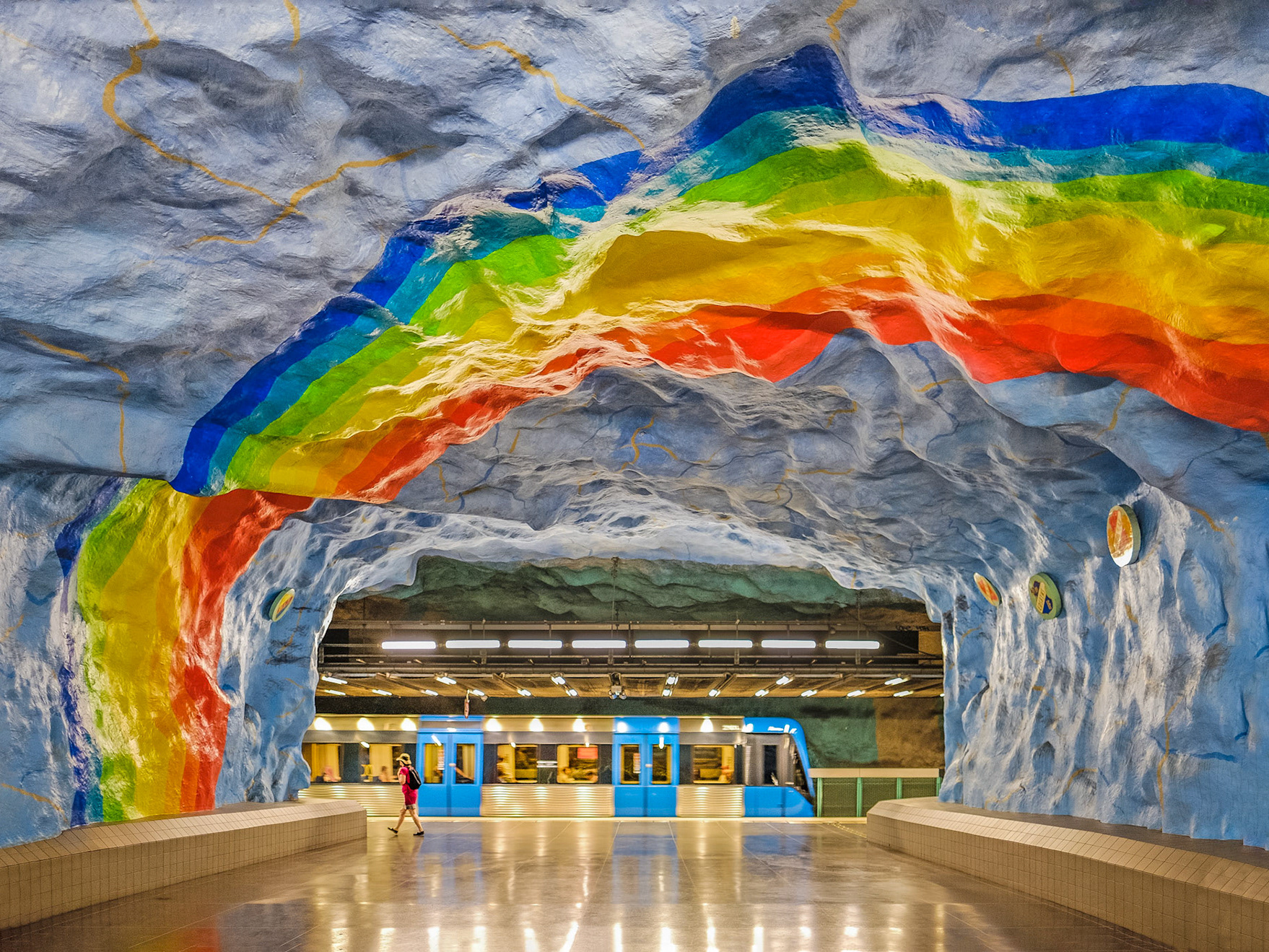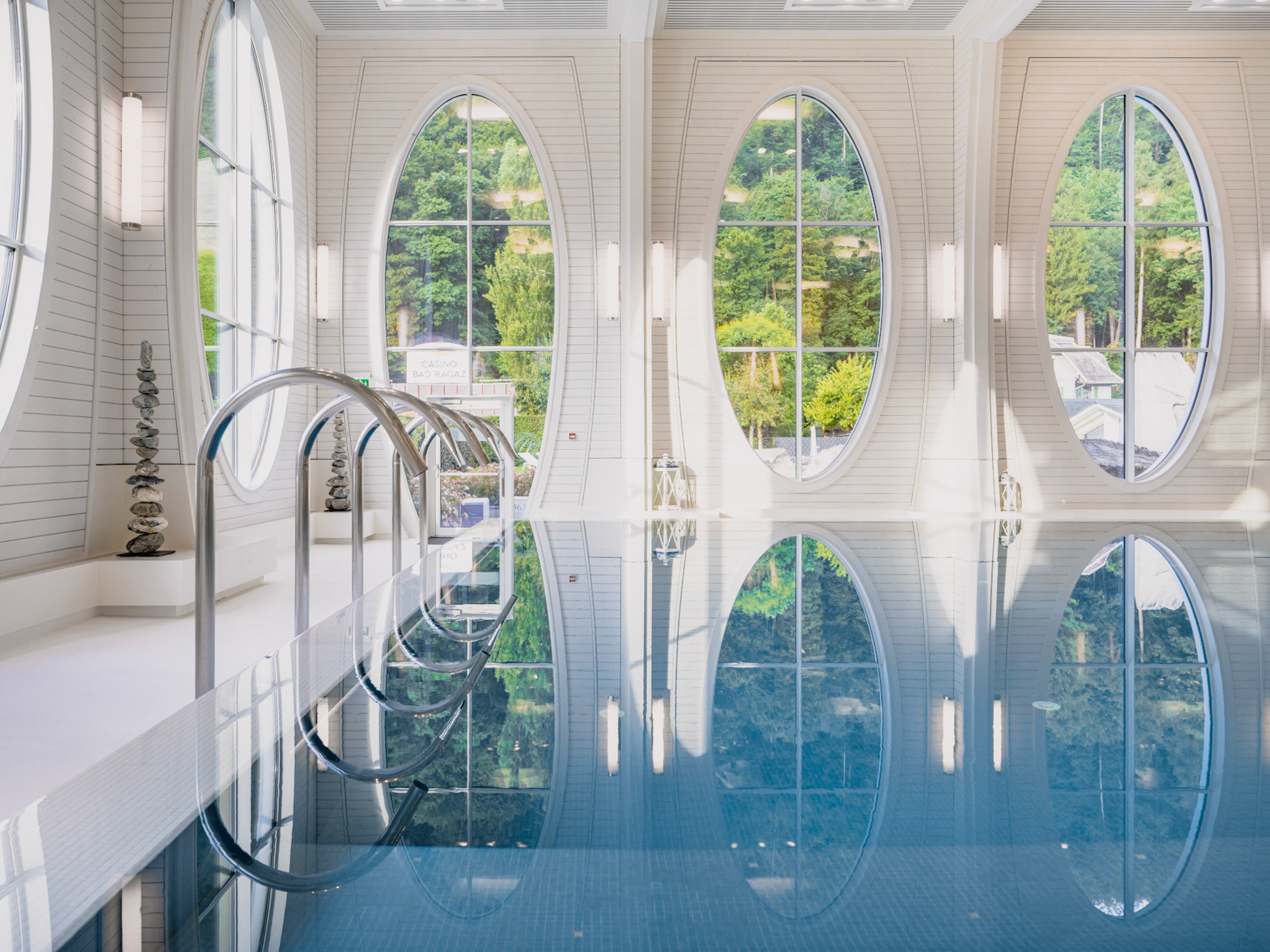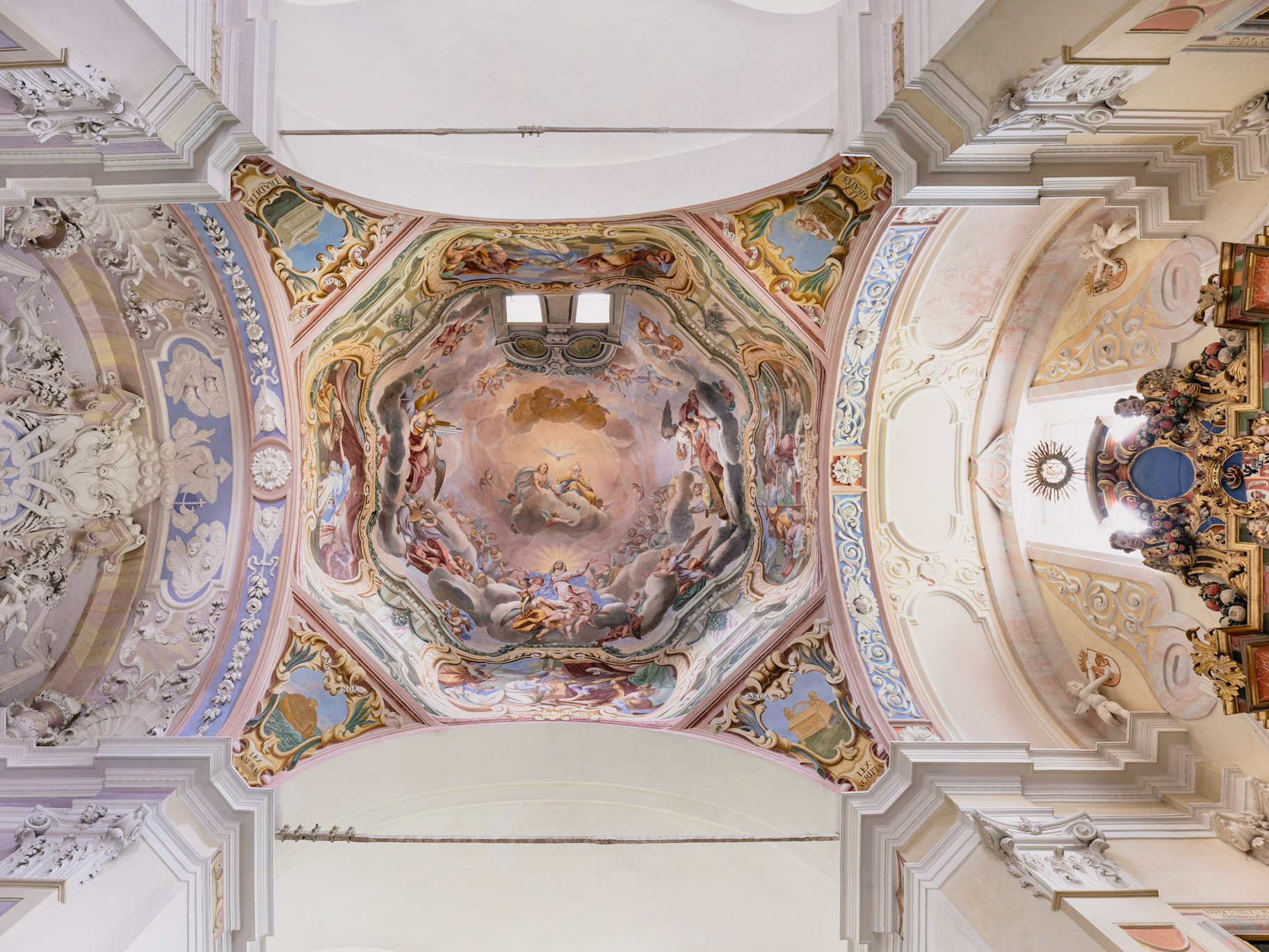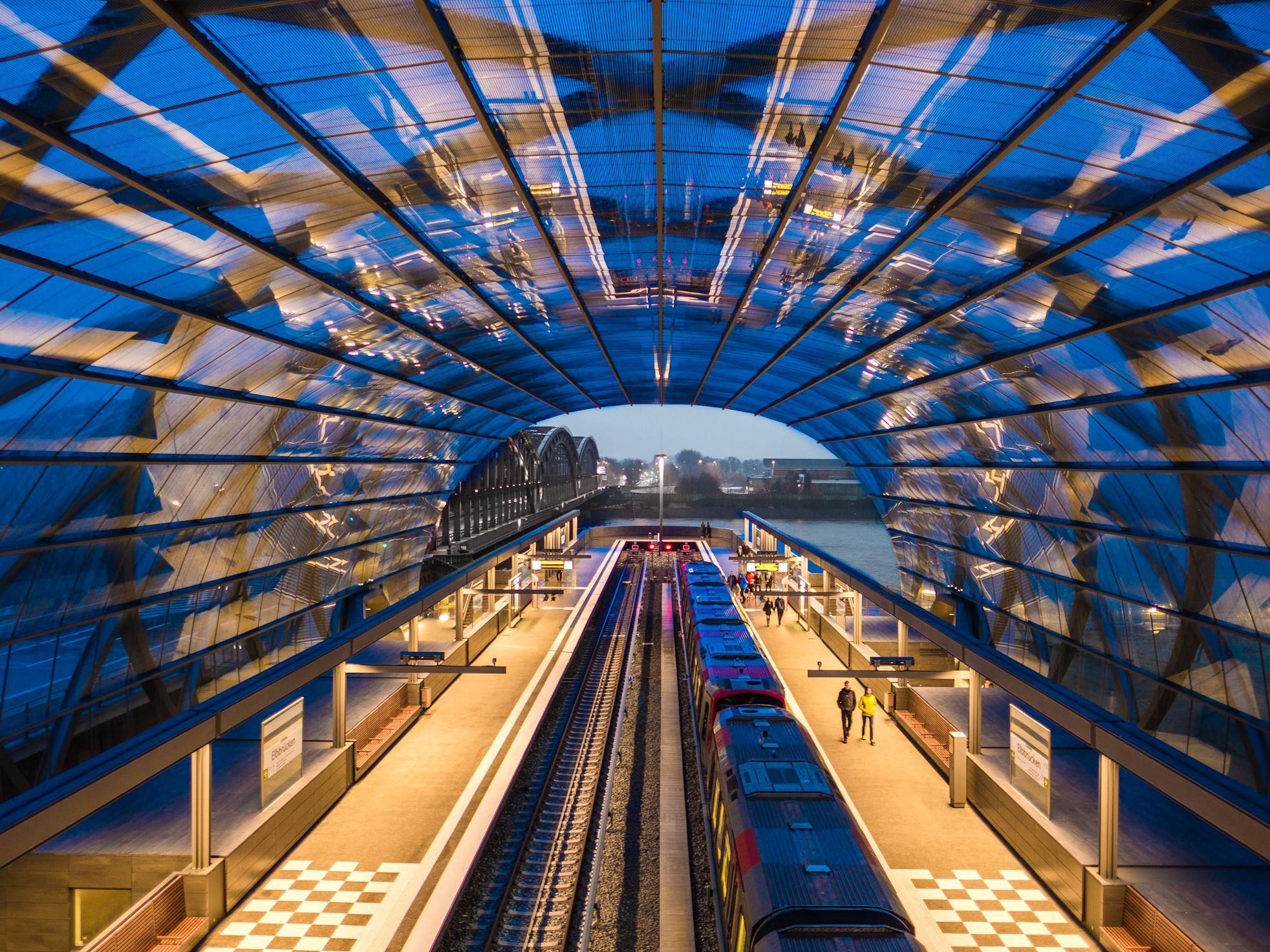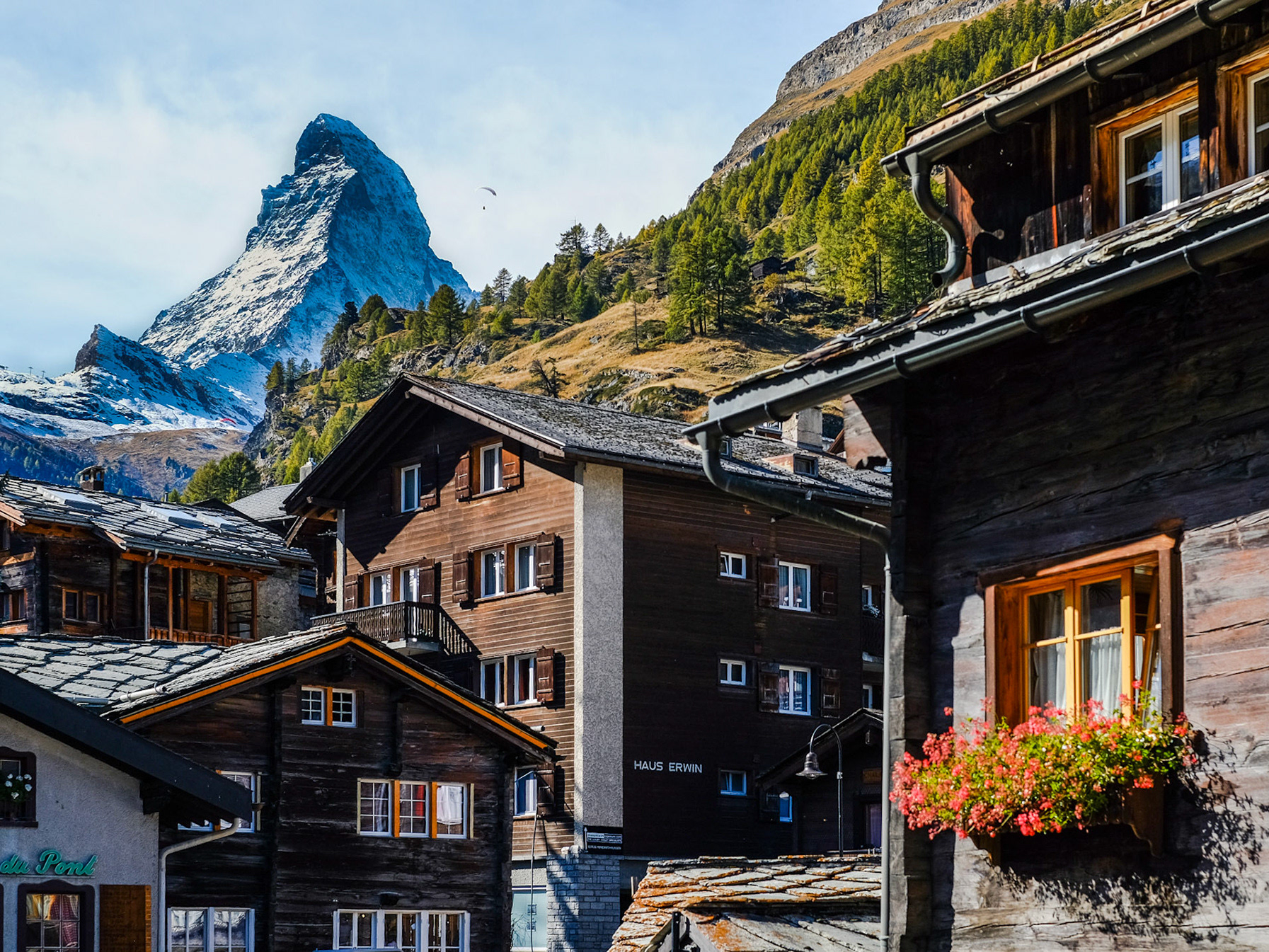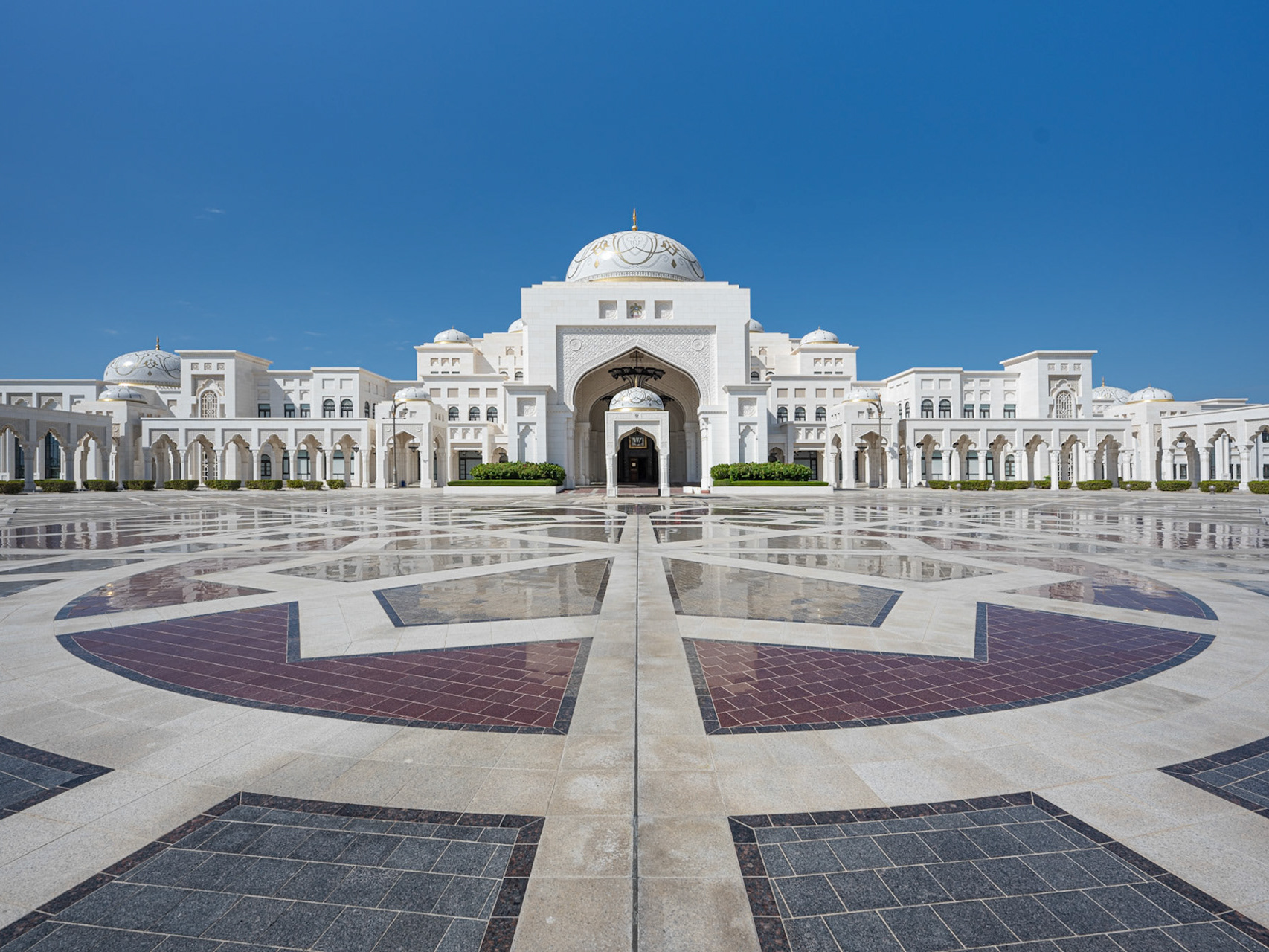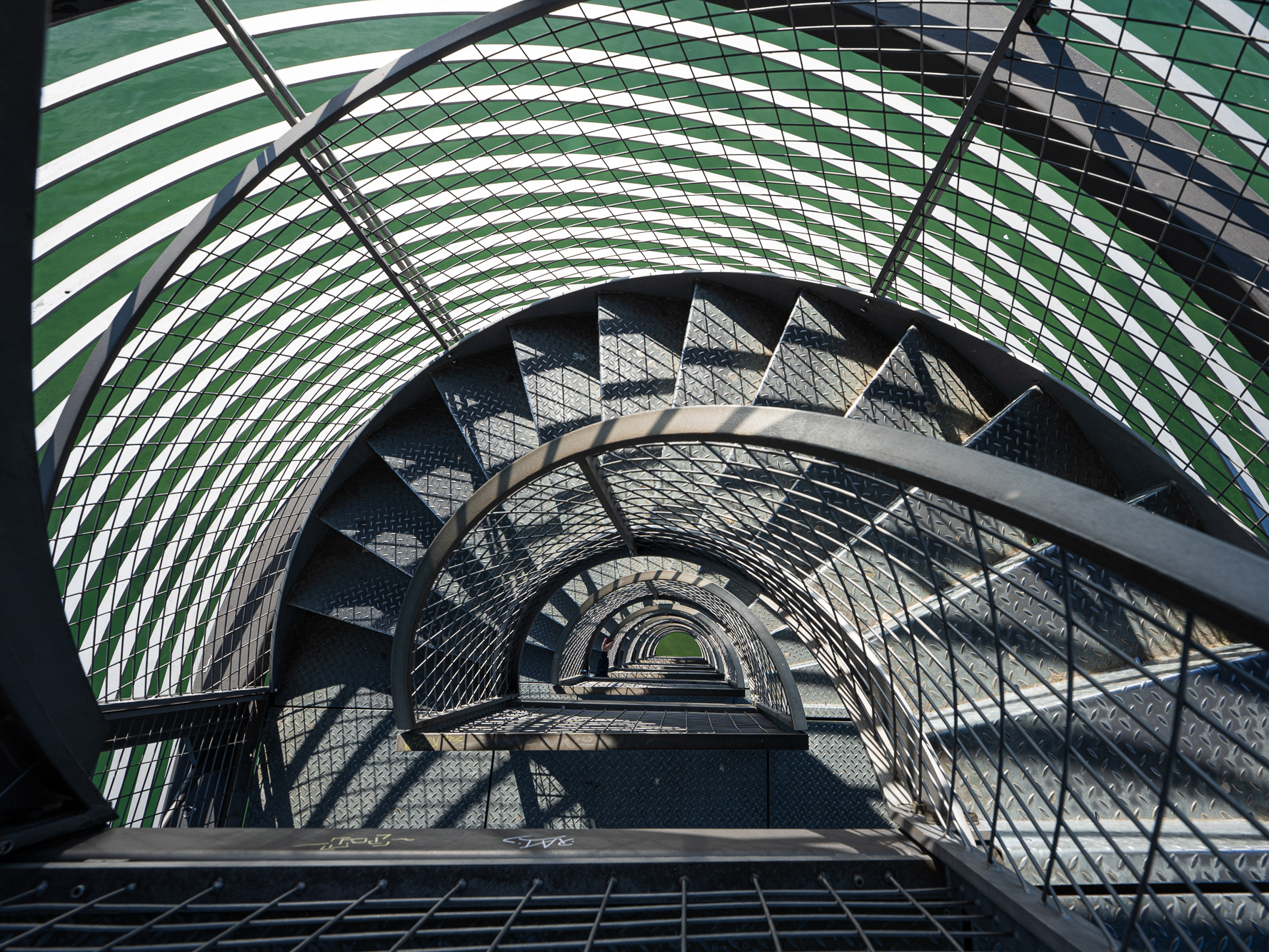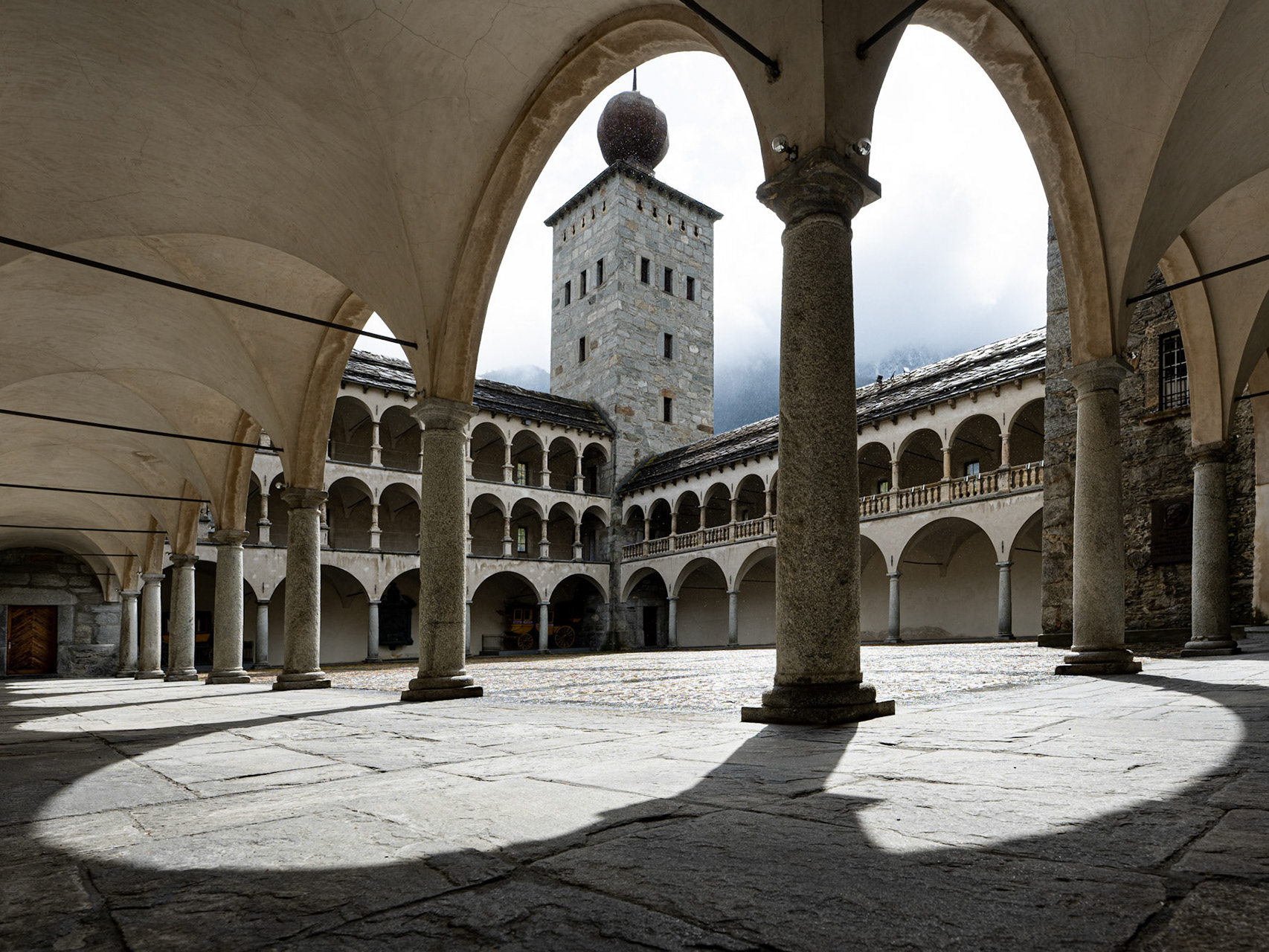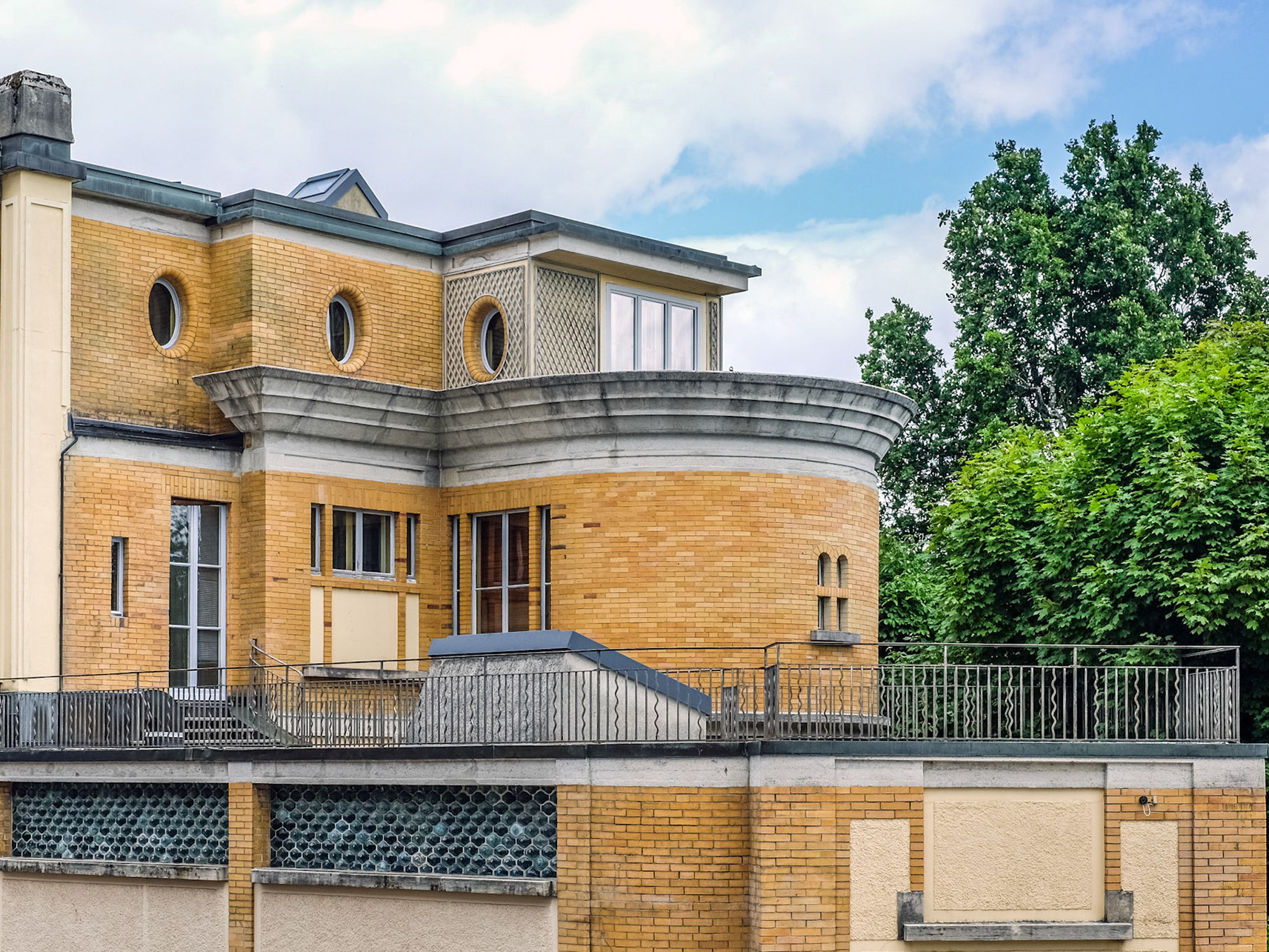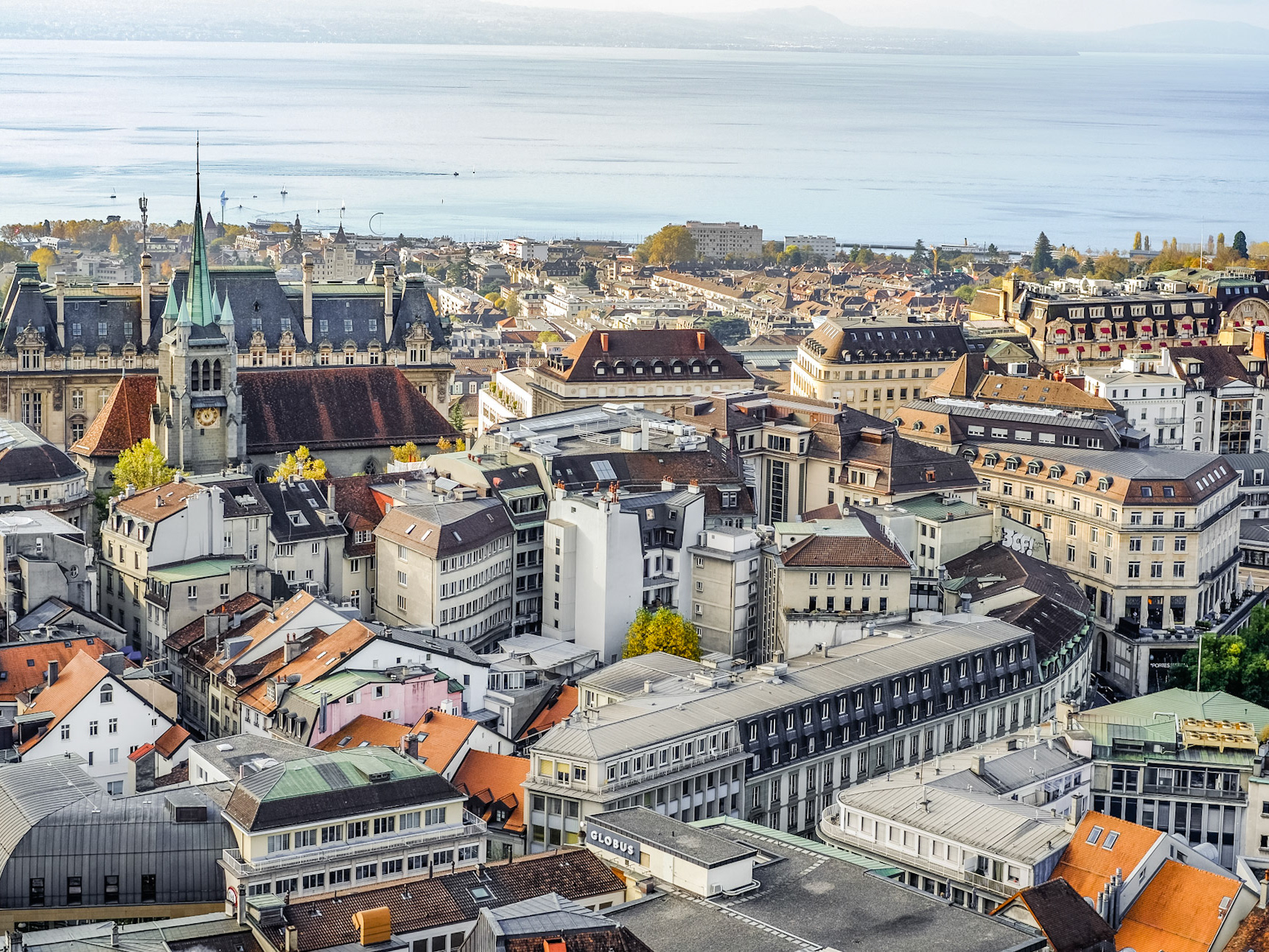We spent part of our Easter vacation in Grisons’s famous Rhine Gorge, called Ruinaulta in Romansh. The Rhine Gorge is located just outside of Chur and its origin goes back to a landslide in Flims 10000 years ago when 10 billion cubic metres of rock thundered into the valley. Since then, the Rhine has carved a path through it, referred to as the Swiss Grand Canyon.
While the area is famous for its nature, there are also some architectural highlights you shouldn’t be missing when there ! Here are my suggestions for a four day itinerary in the Surselva area, arriving from Chur and ending on the last day in St. Moritz.
Day 1: Arrival in Valendas and first Ruinaulta hike
My family and I stayed all nights at the Türalihus, a baroque town house with a striking tower in the middle of the historic center of Valendas, centrally located for all our excursions. The history of the building goes back to 1485 and it has recently been renovated and can now be rented through Ferien im Baudenkmal.
Zault Observation Deck
When driving from Chur to Valendas, shortly after Bonaduz, you’ll notice the road getting suddenly much narrower and you’ll get a first glimpse of the Rhine gorge from the Zault observation deck. The spiral shaped platform was designed by Walter Bieler.
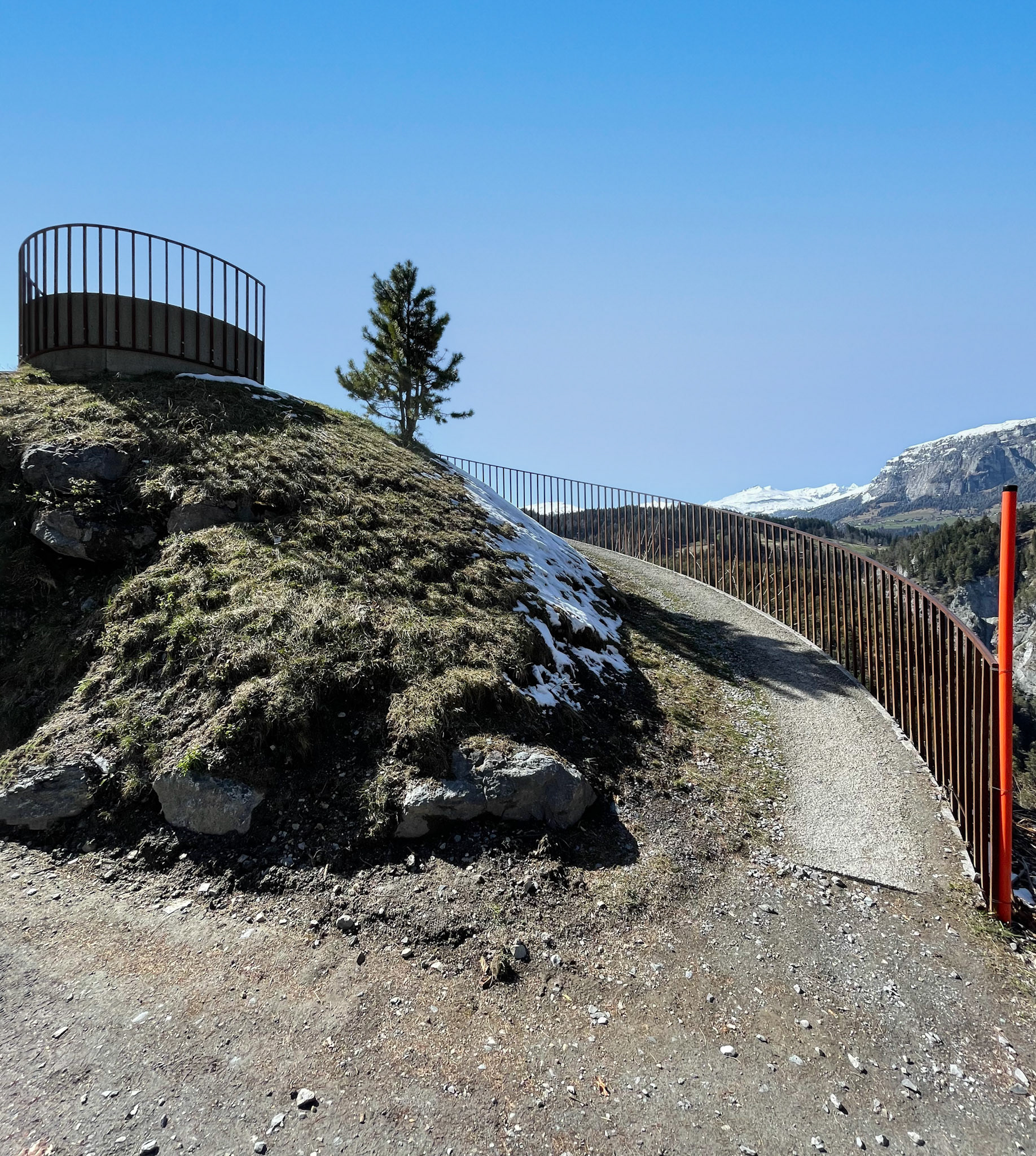
Zault Observation Deck
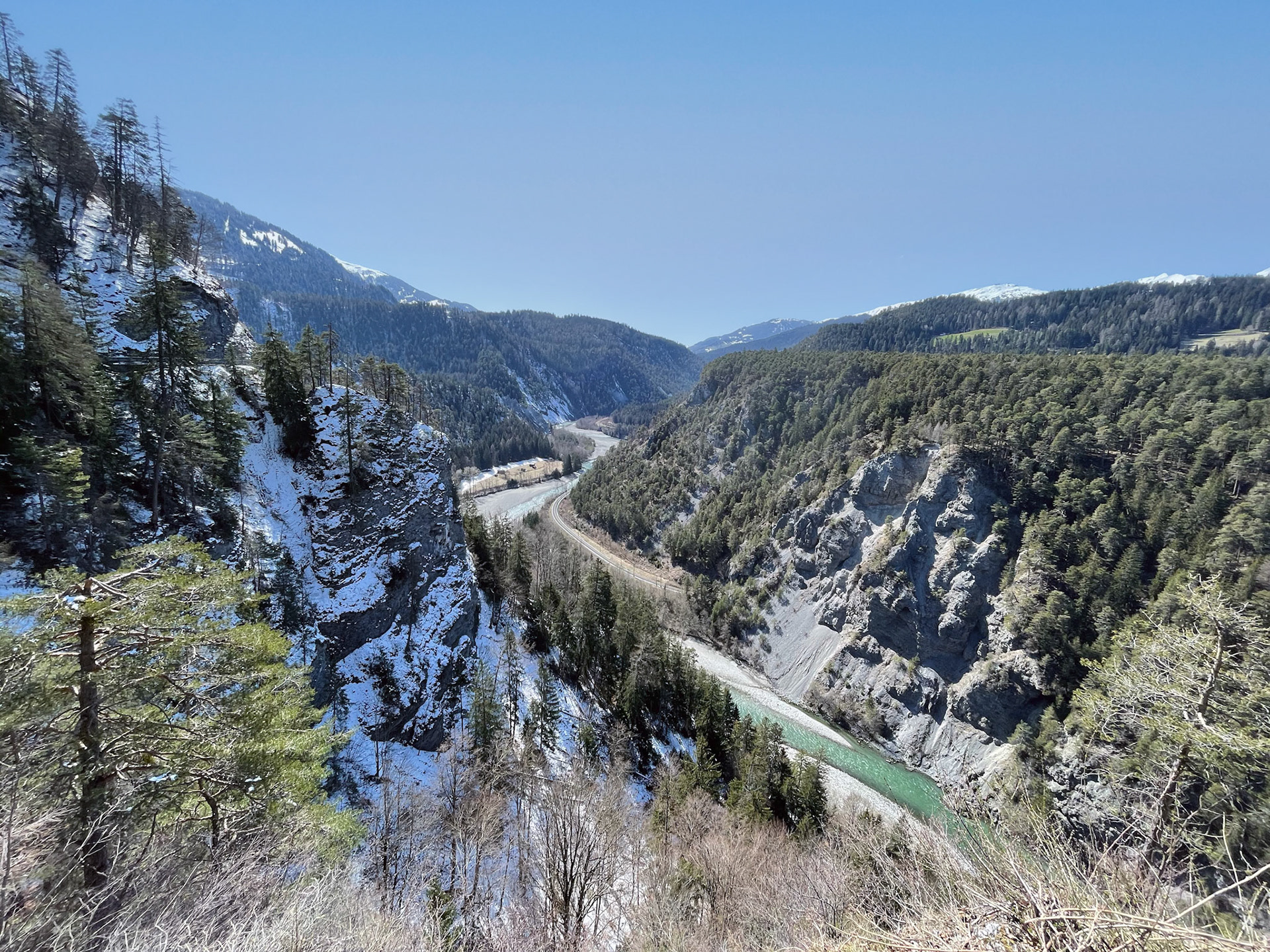
Zault Observation Deck
From now on, it’ll be a very scenic drive to Valendas. Valendas is home to Europe’s largest wooden fountain with the main basin having a capacity of 15.000 litres. It was built in 1760 and until the late 19th century, it was the only water supply for the village.
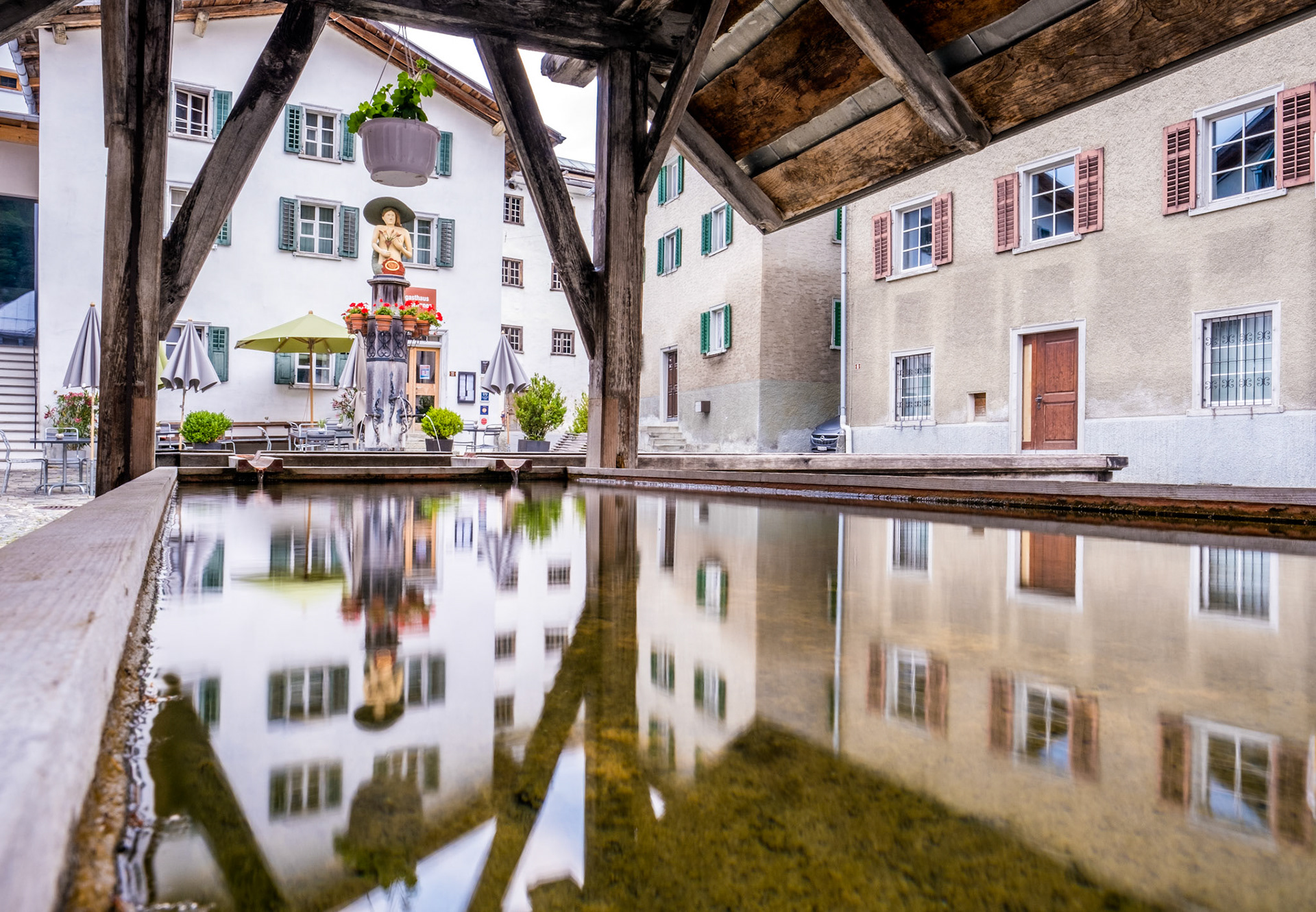
wooden fountain Valendas
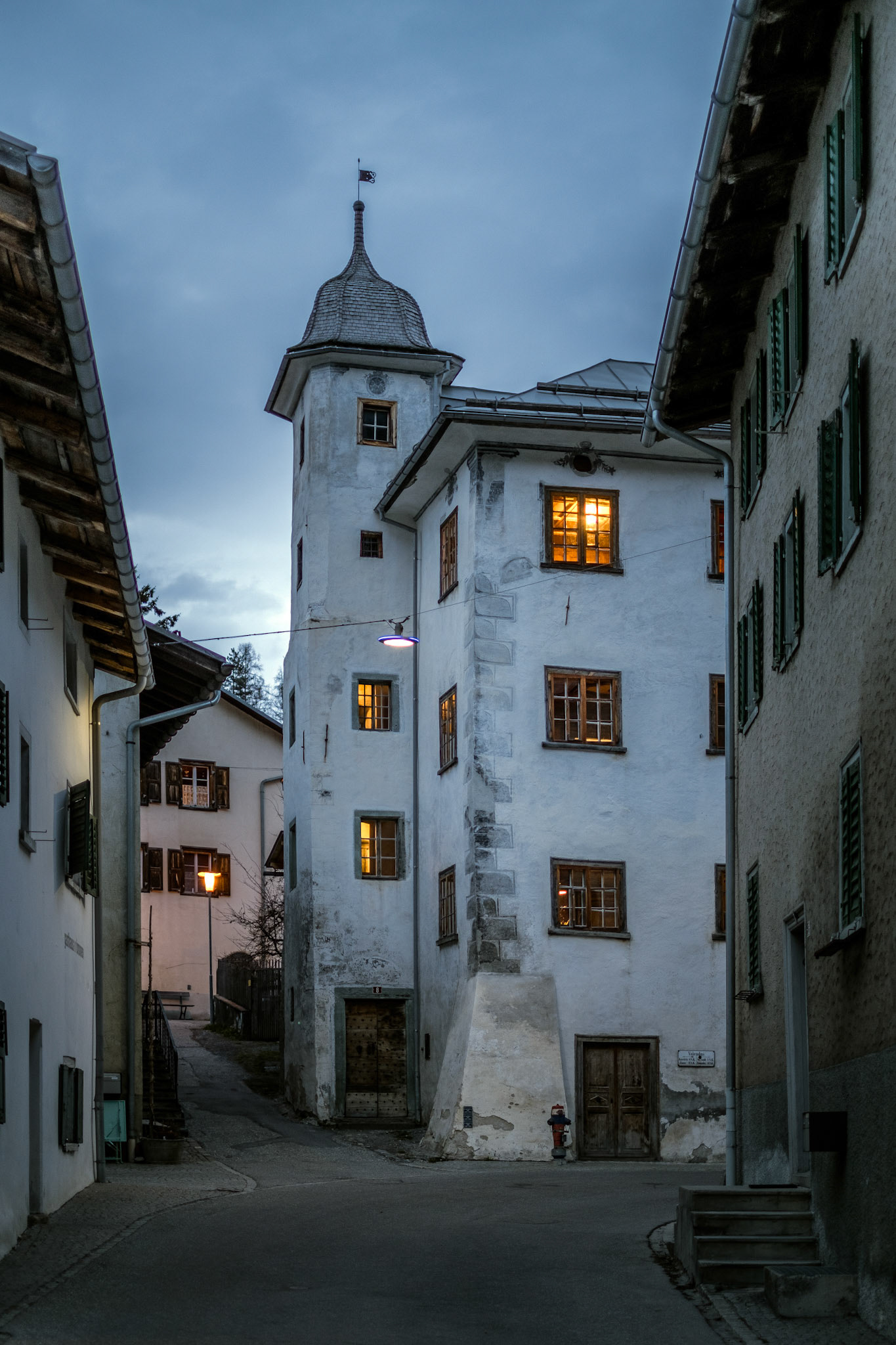
Türalihus
Türalihus
There are now two vacation homes inside the Türalihus - Ferien im Baudenkmal with the upper one allowing to accomodate more people. The entrance leads to the stair tower.
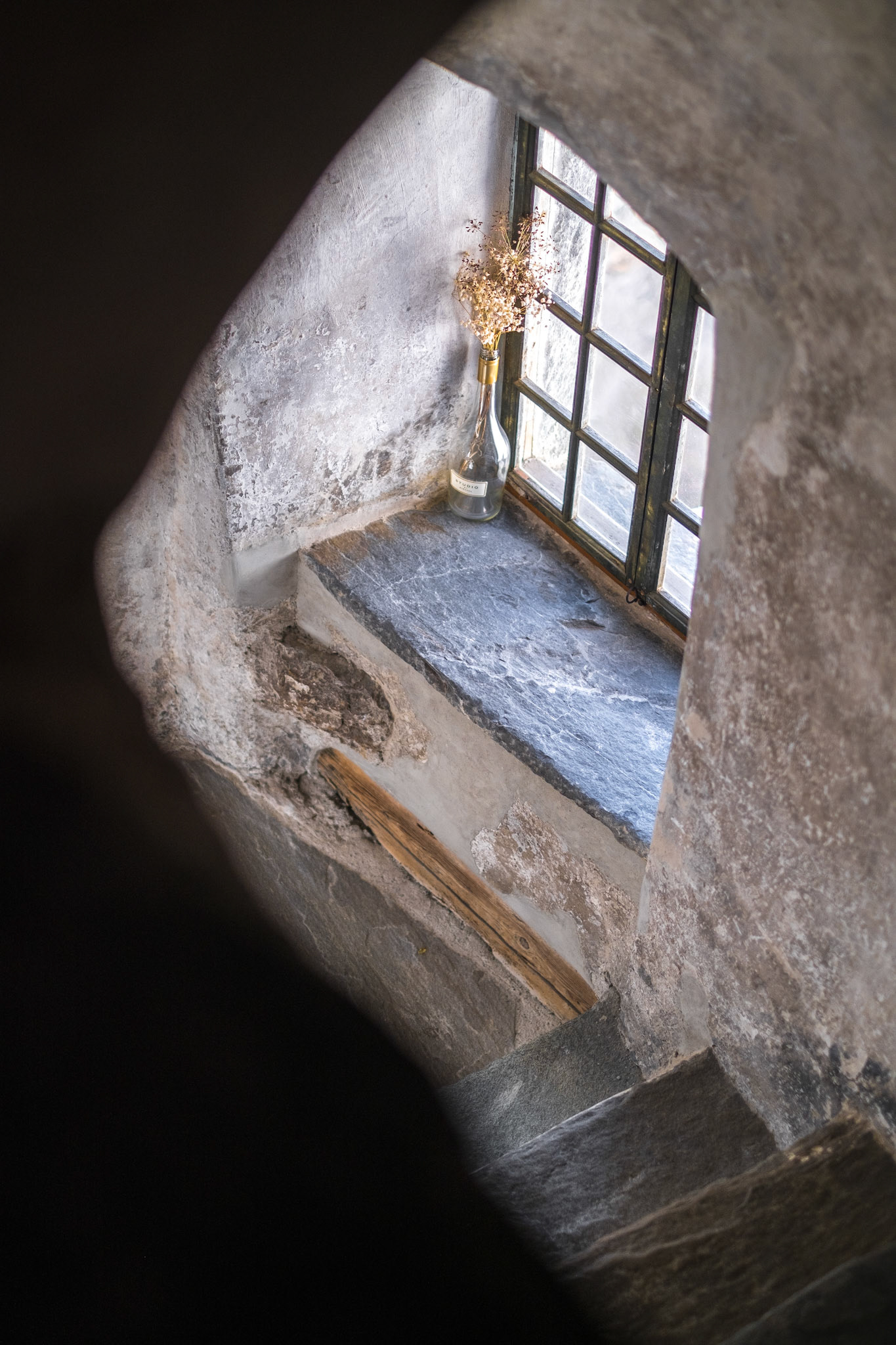
Türalihus
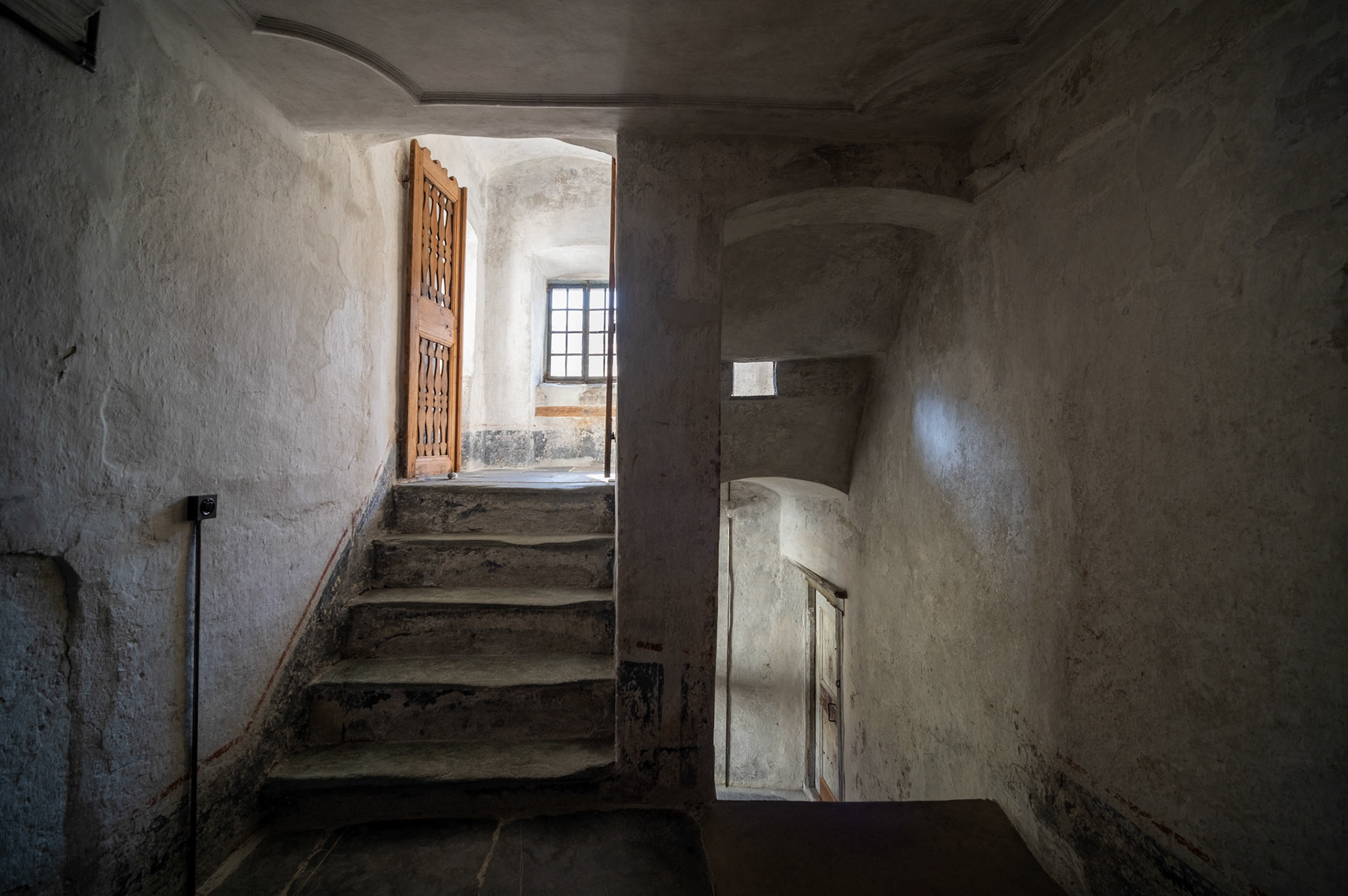
Türalihus
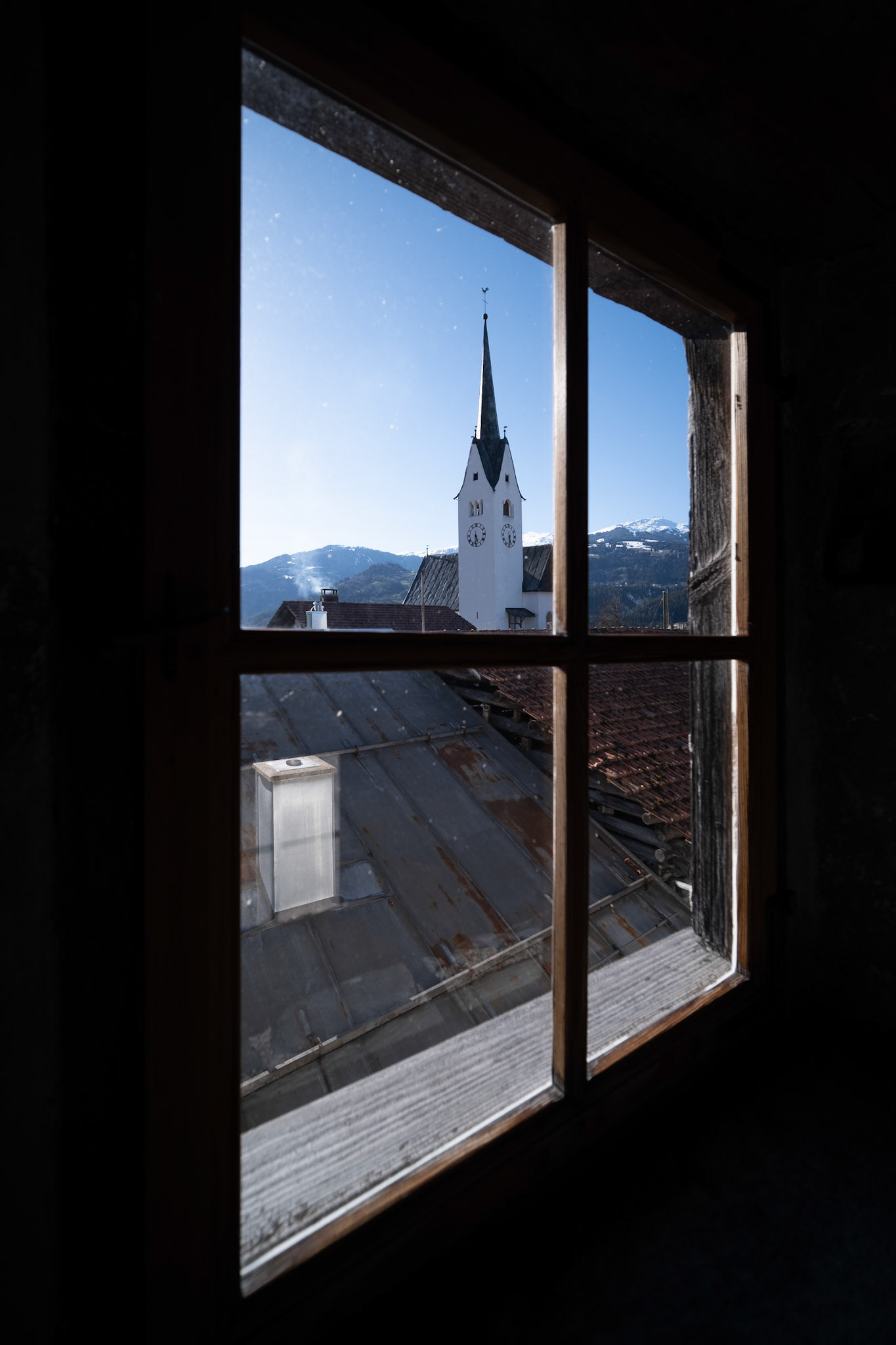
Türalihus
And the interior design is lovely, with many interesting details !
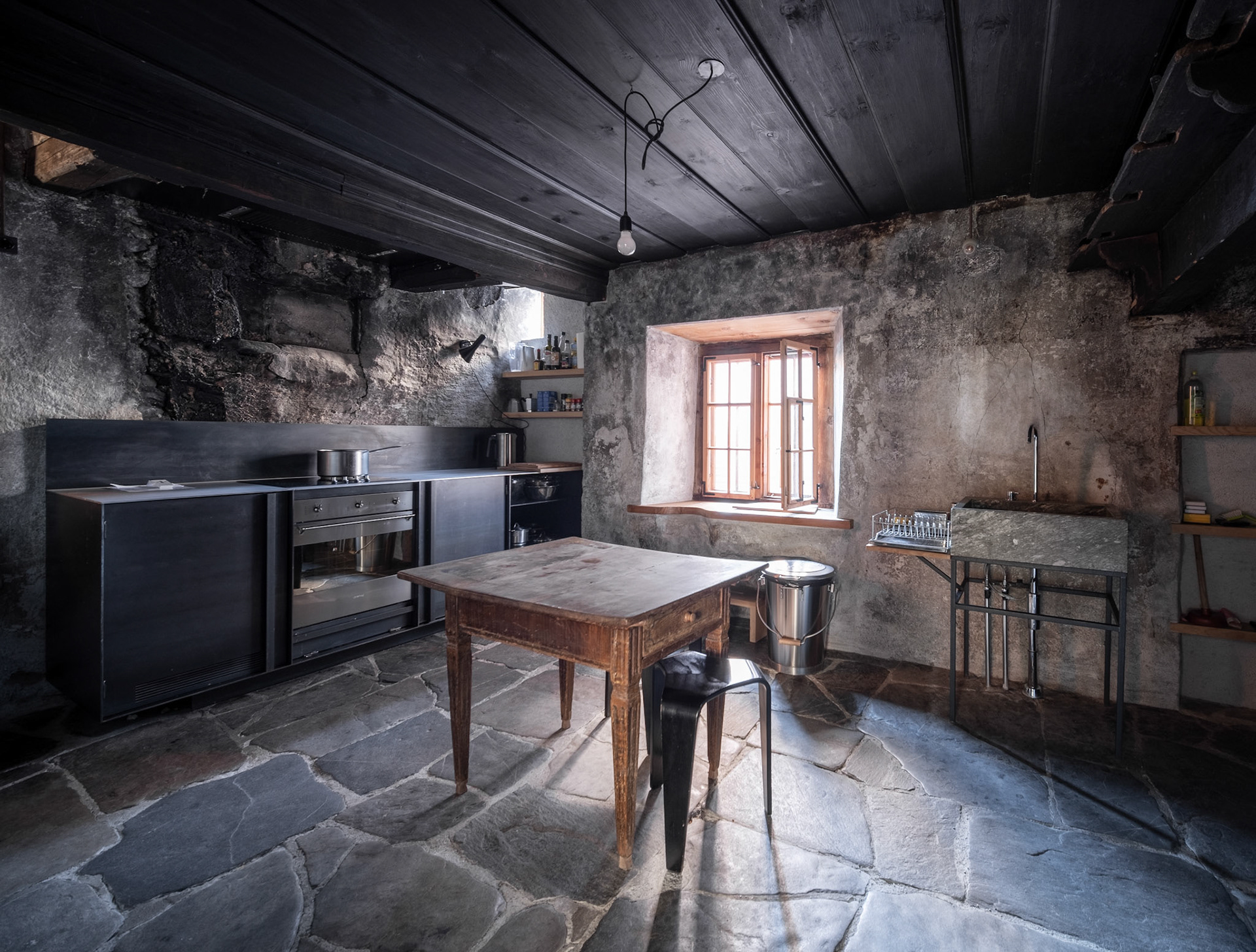
Türalihus
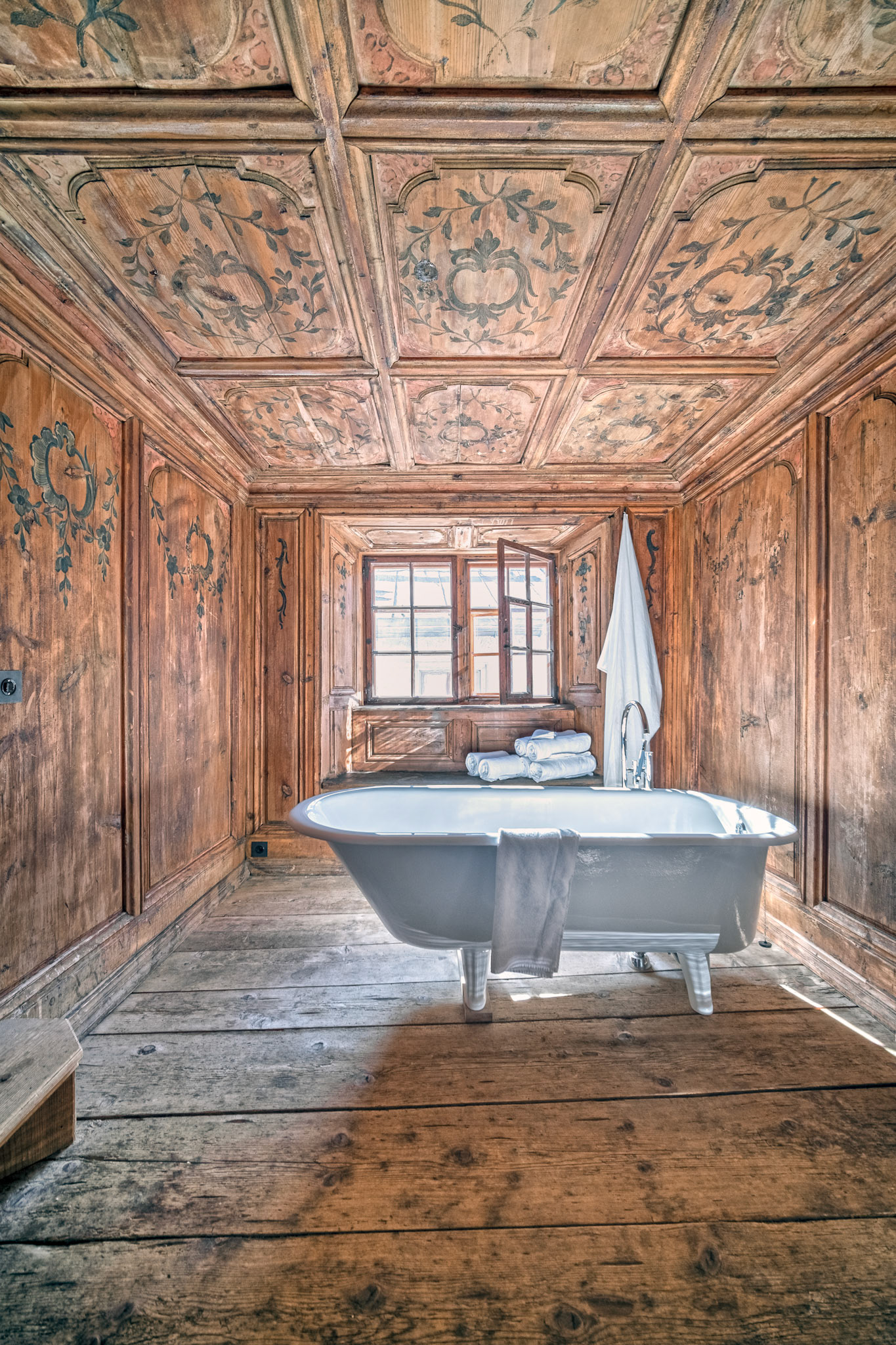
Türalihus
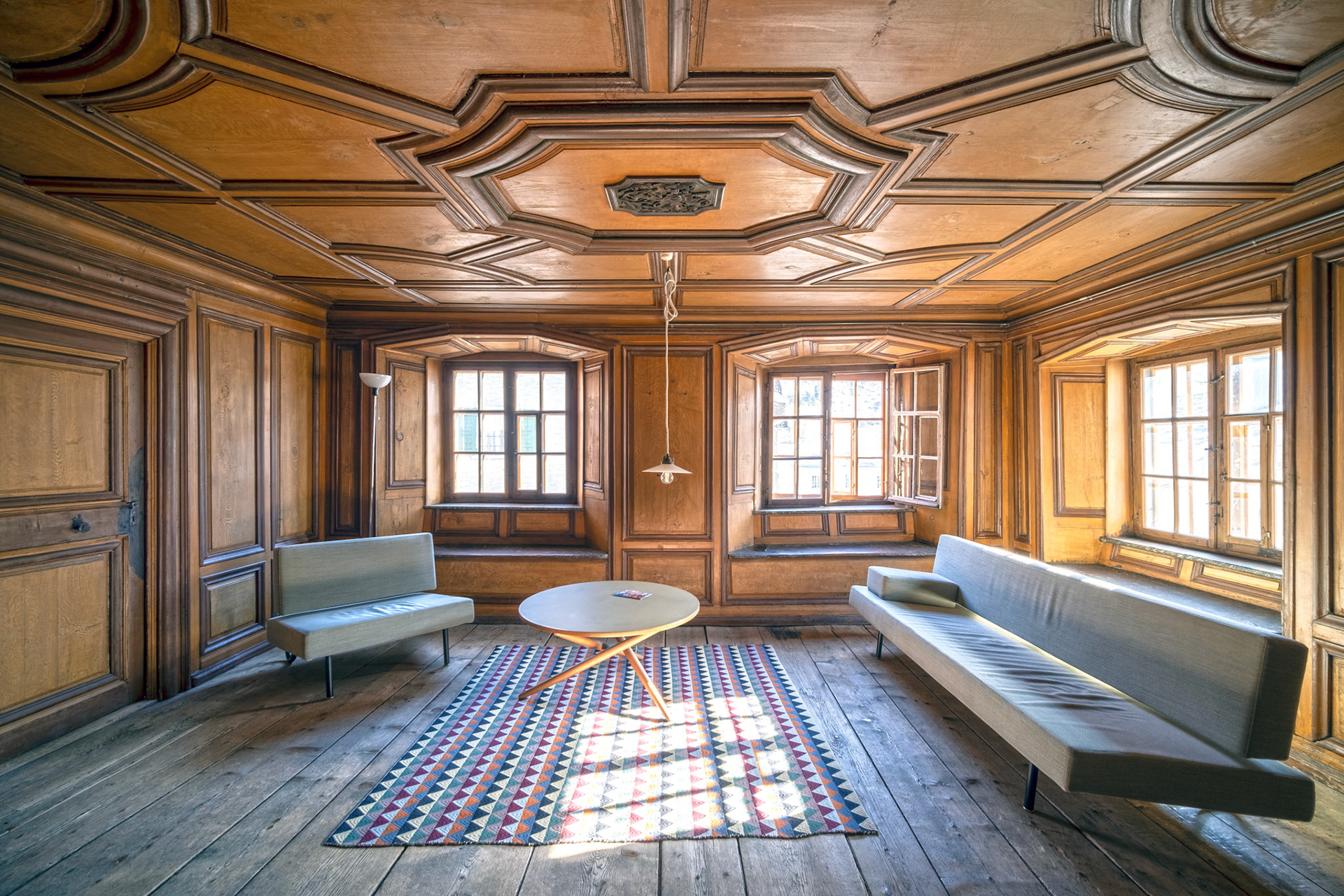
Türalihus
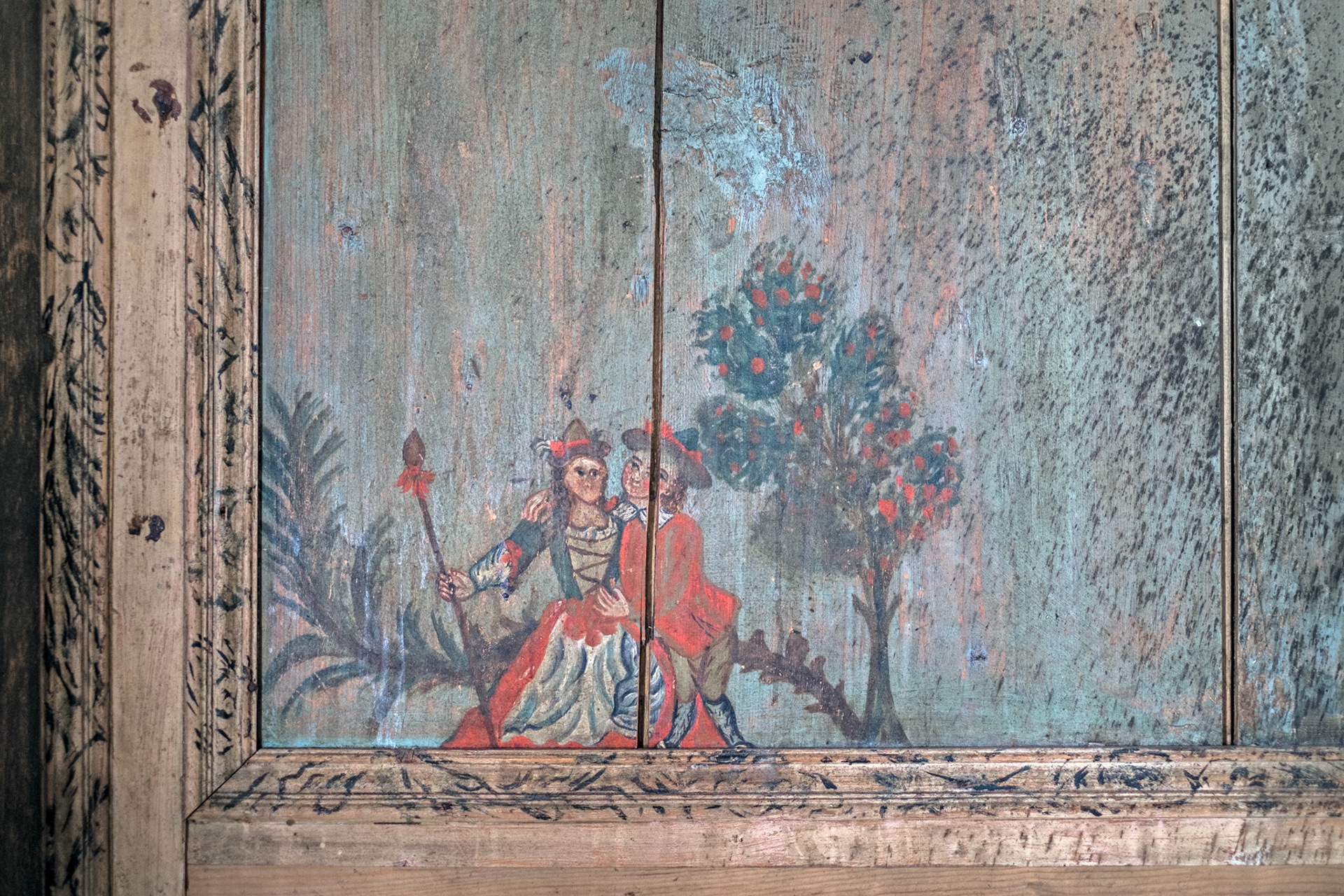
Türalihus
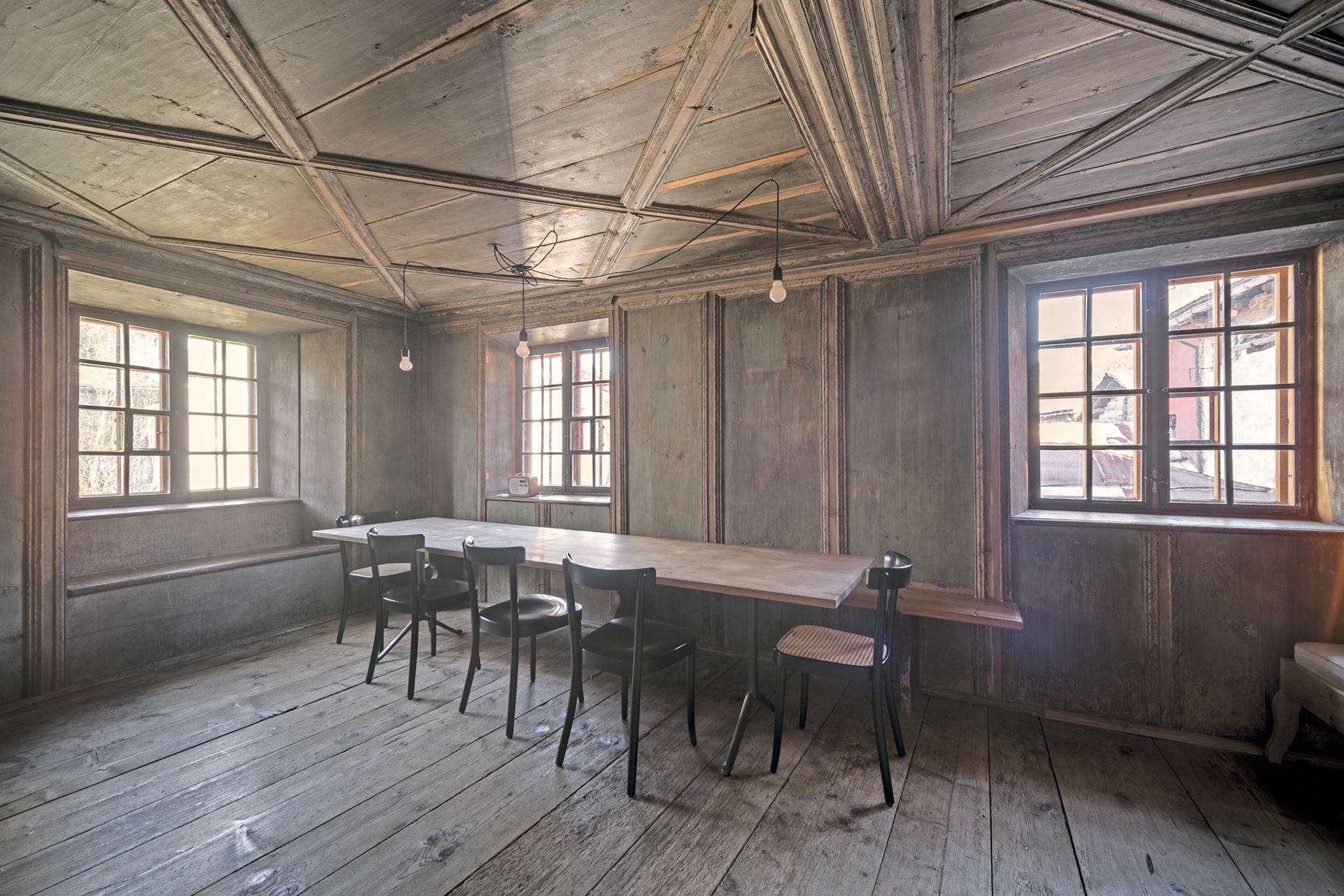
Türalihus
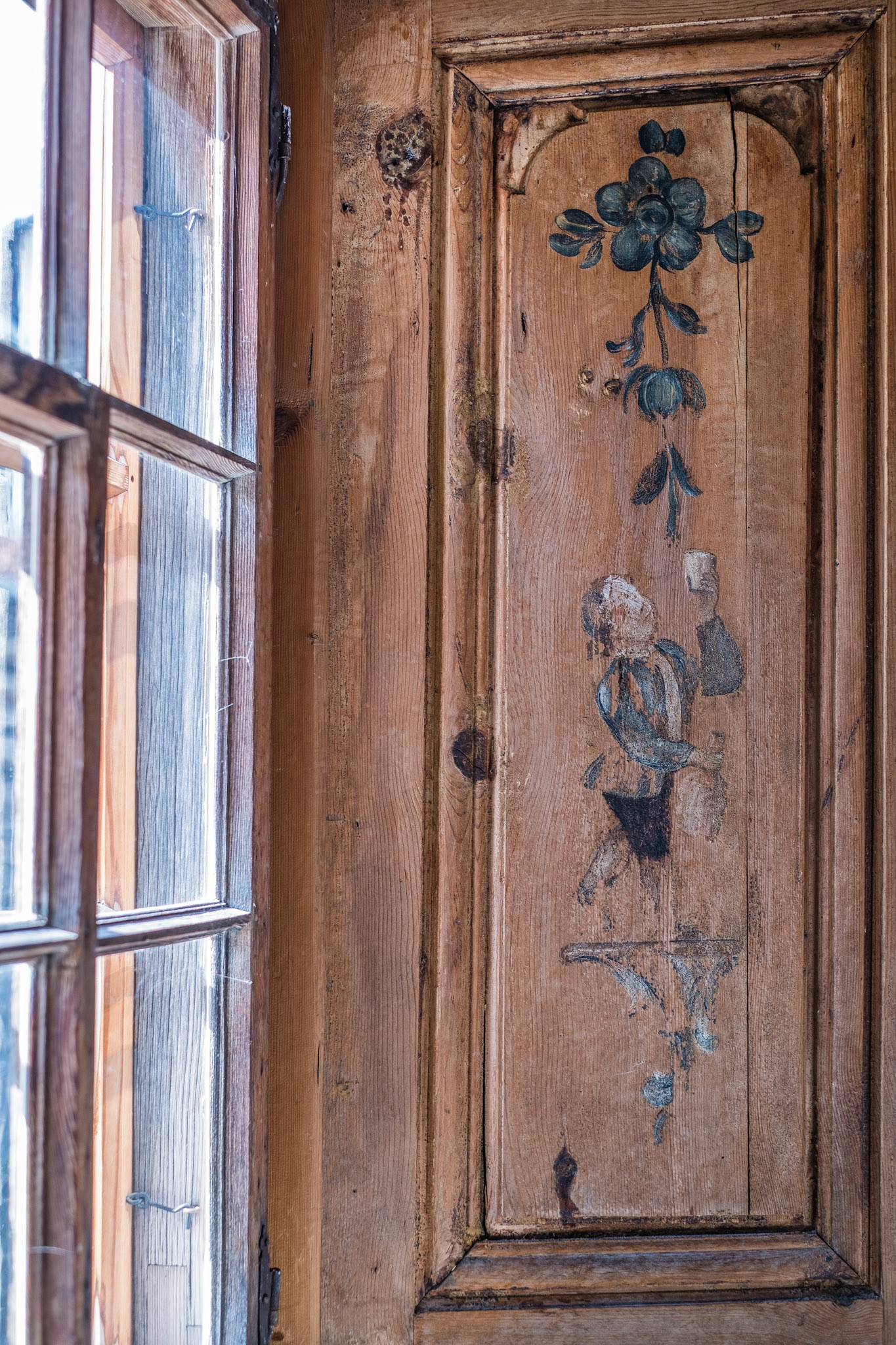
Türalihus
Faszinaturweg Valendas
After settling in, I recommend going for a first small walk into the Rhine Gorge. The Faszinaturweg around Valendas takes about 90 minutes.
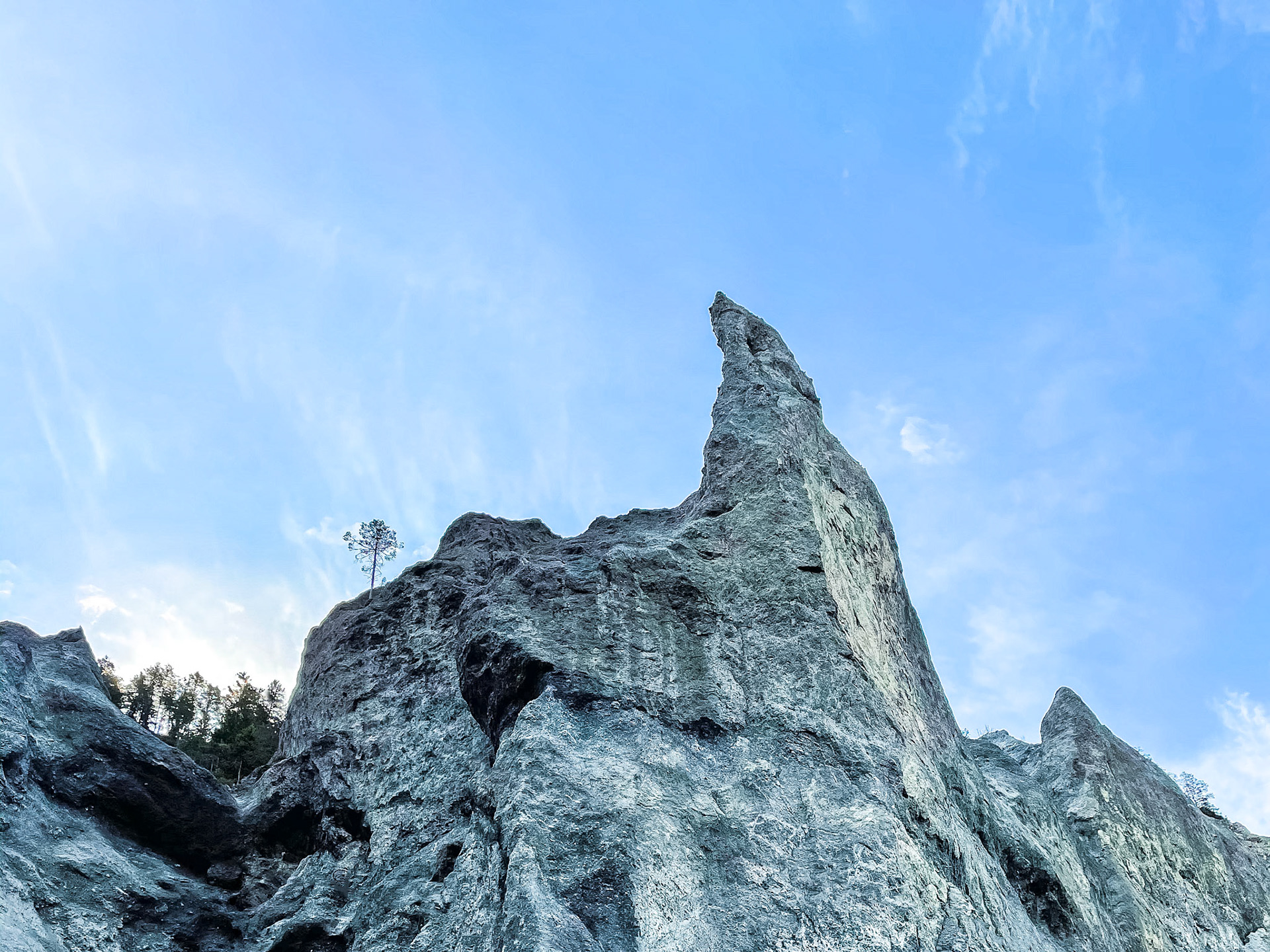
Faszinaturweg Valendas
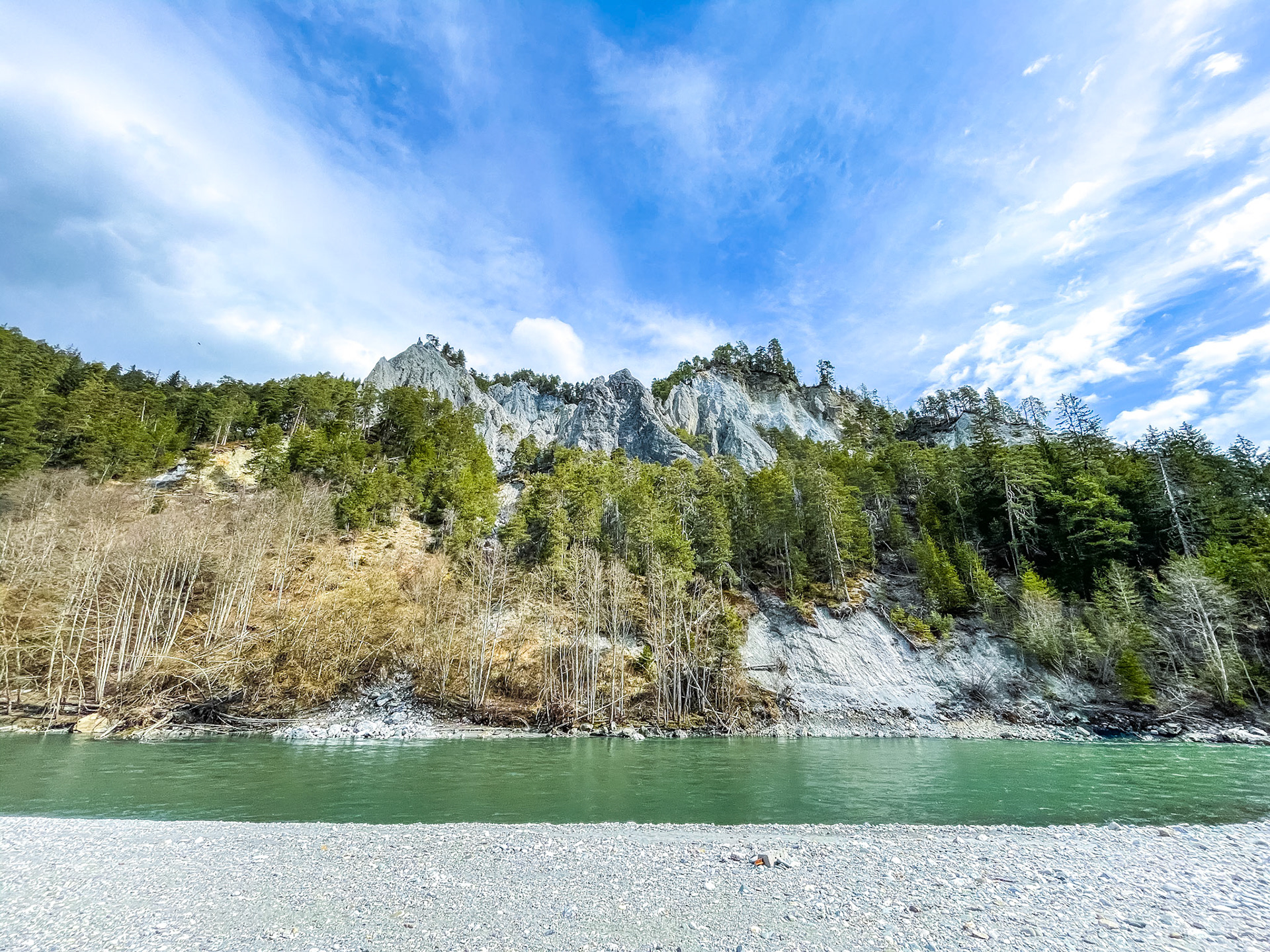
Faszinaturweg Valendas
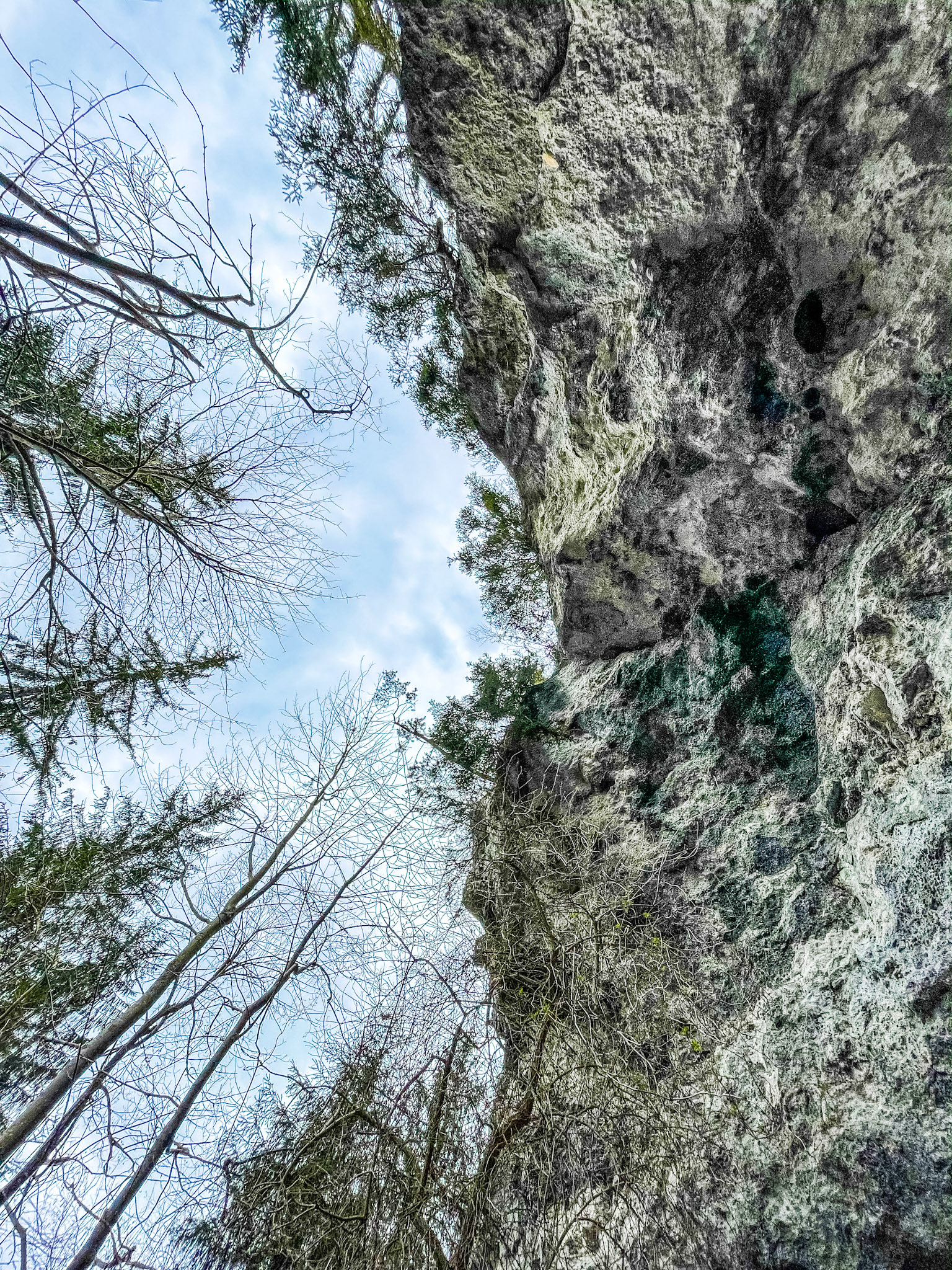
Faszinaturweg Valendas
Gasthaus am Brunnen
Only footsteps away from the Türalihus is the restaurant Gasthaus am Brunnen. Its dishes are spectacular and its 15 Gault Millau points are really well deserved! A must when in the area!
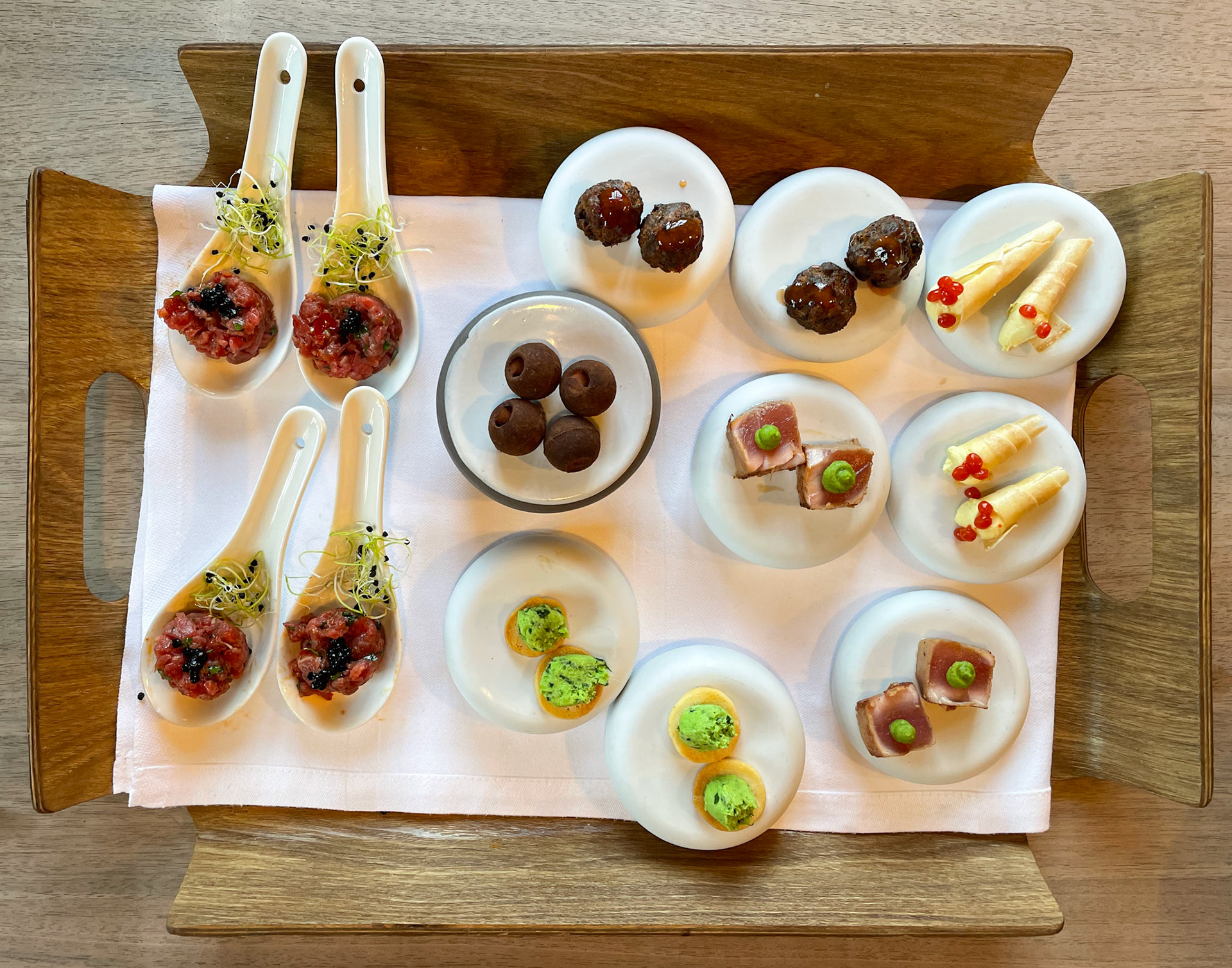
Gasthaus am Brunnen
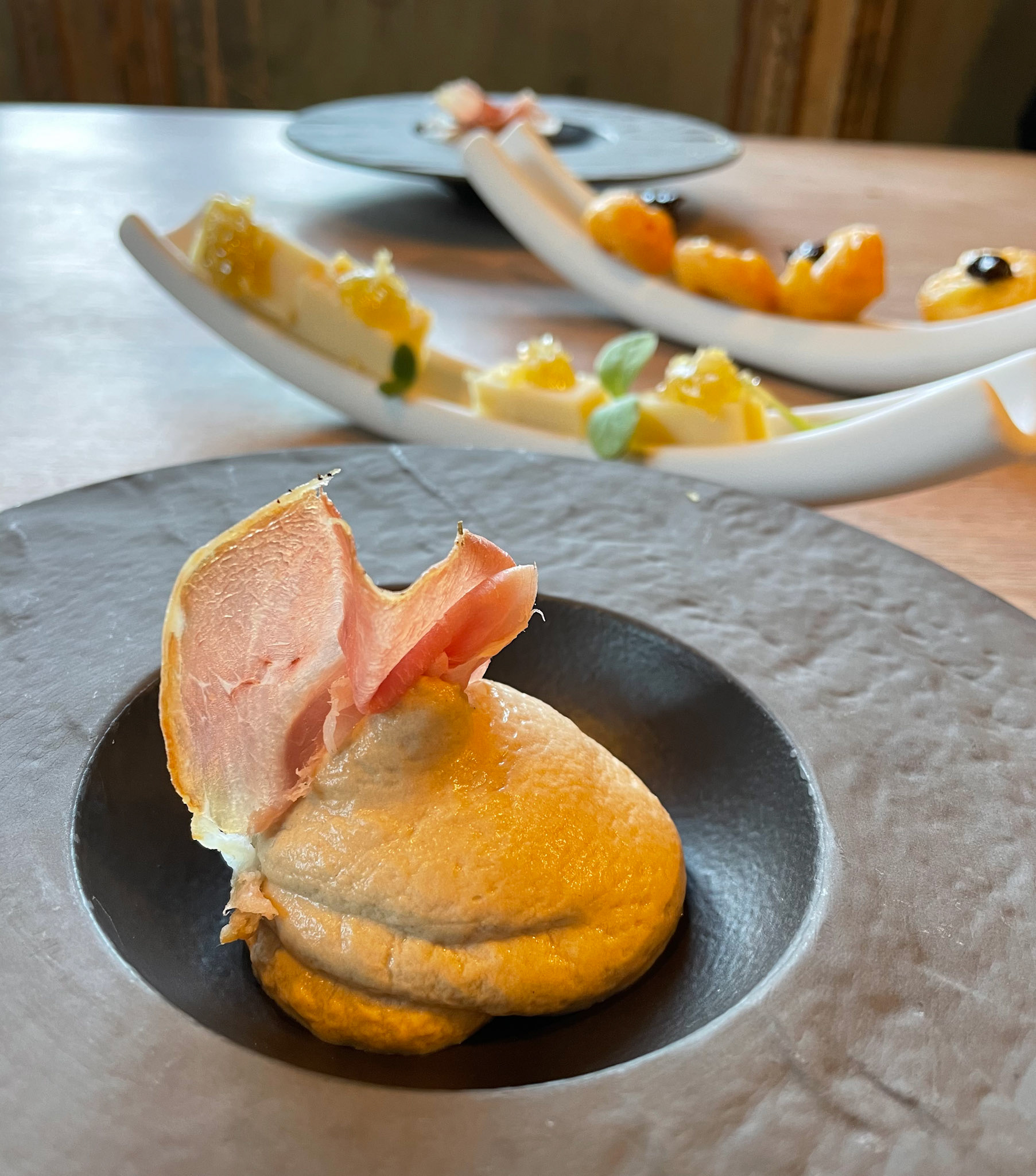
Gasthaus am Brunnen
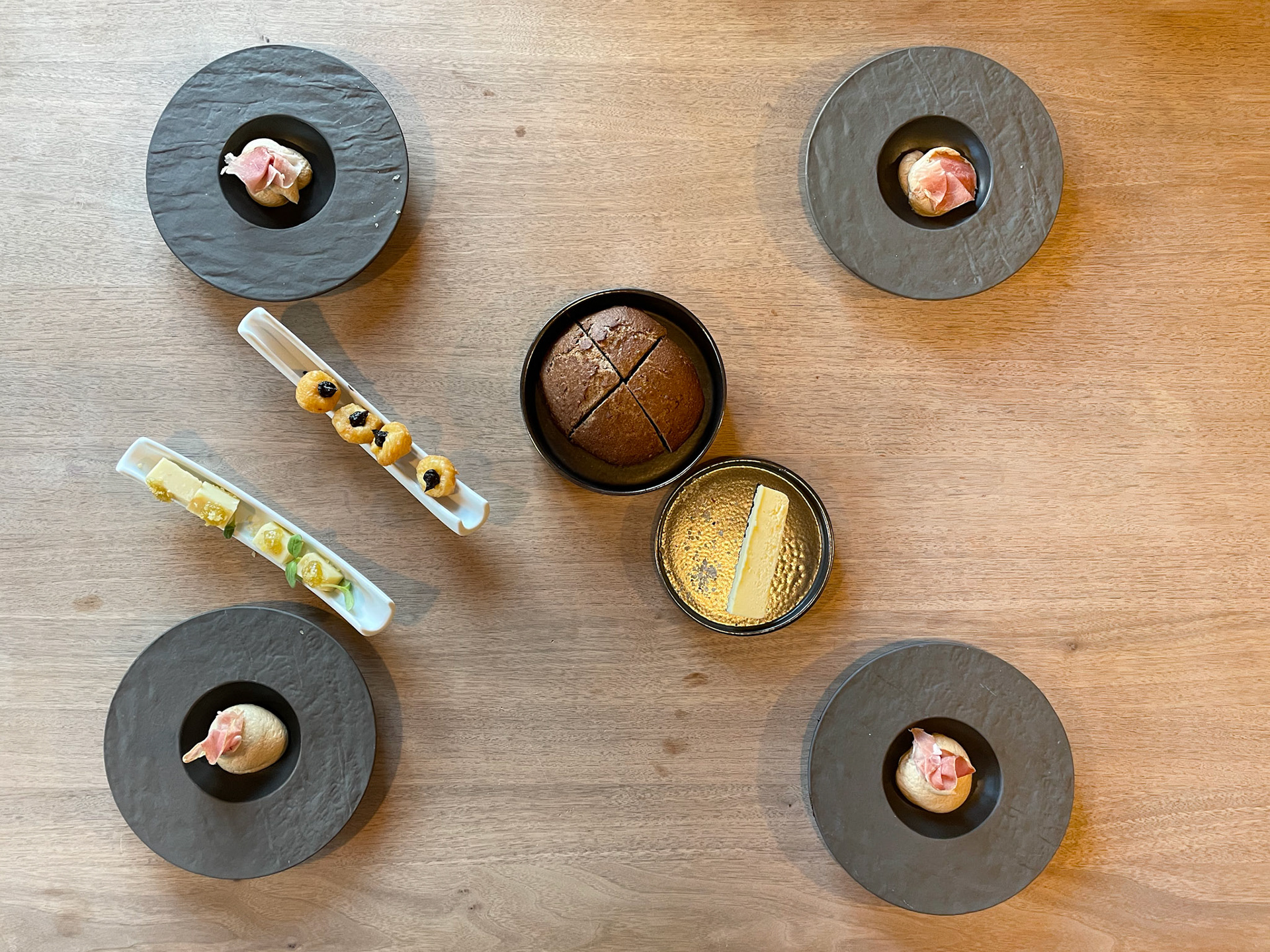
Gasthaus am Brunnen
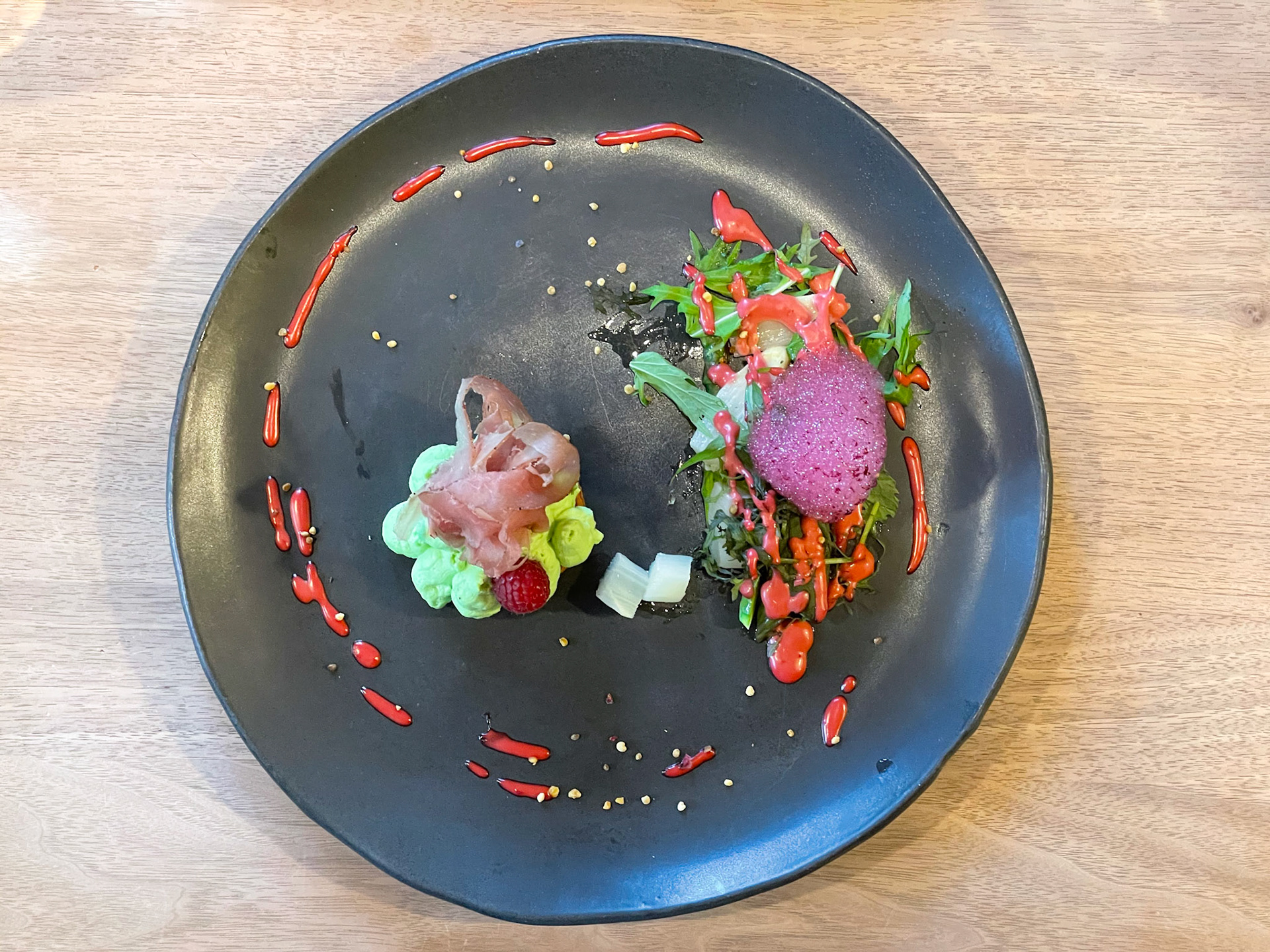
Gasthaus am Brunnen
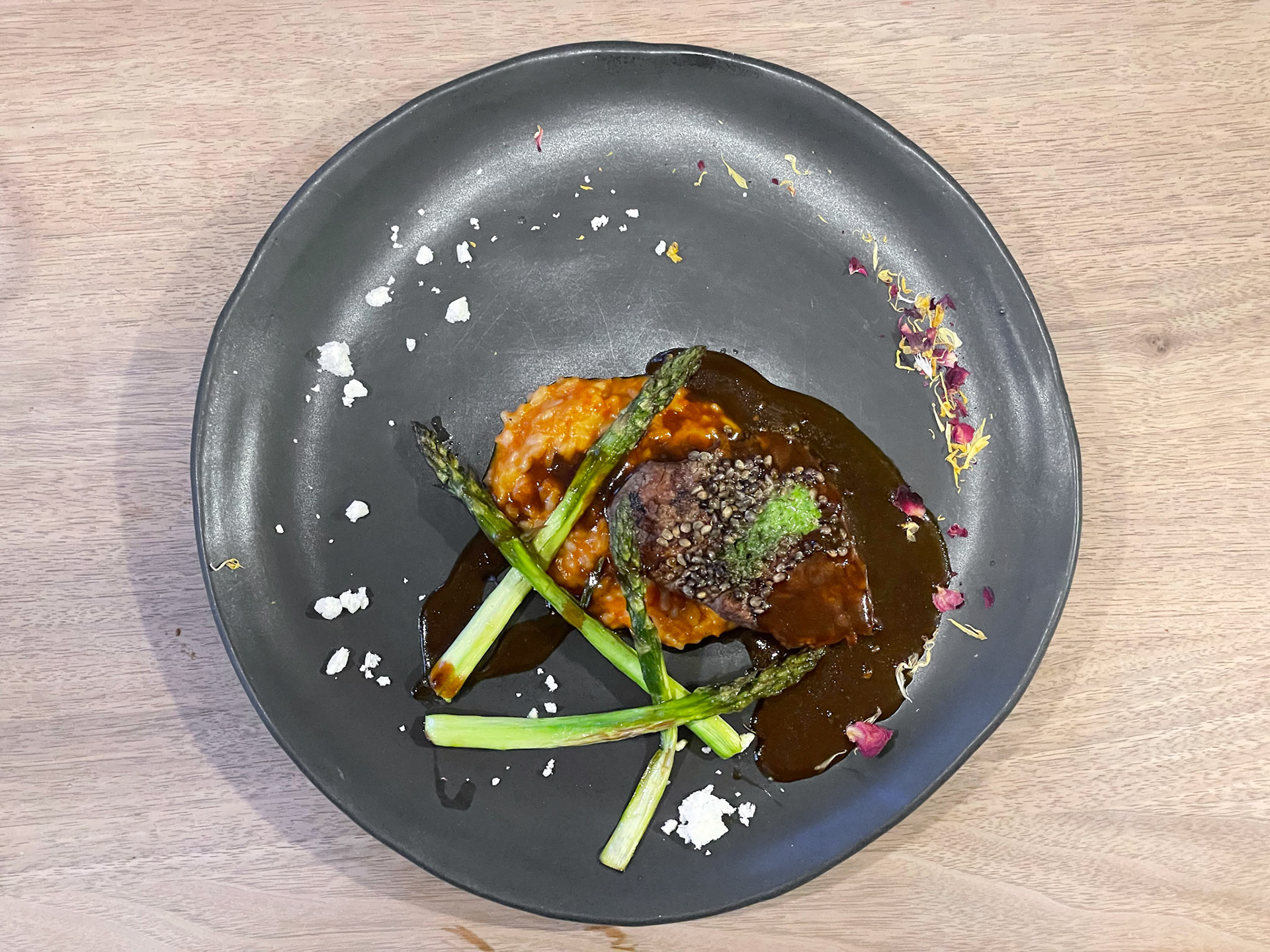
Gasthaus am Brunnen
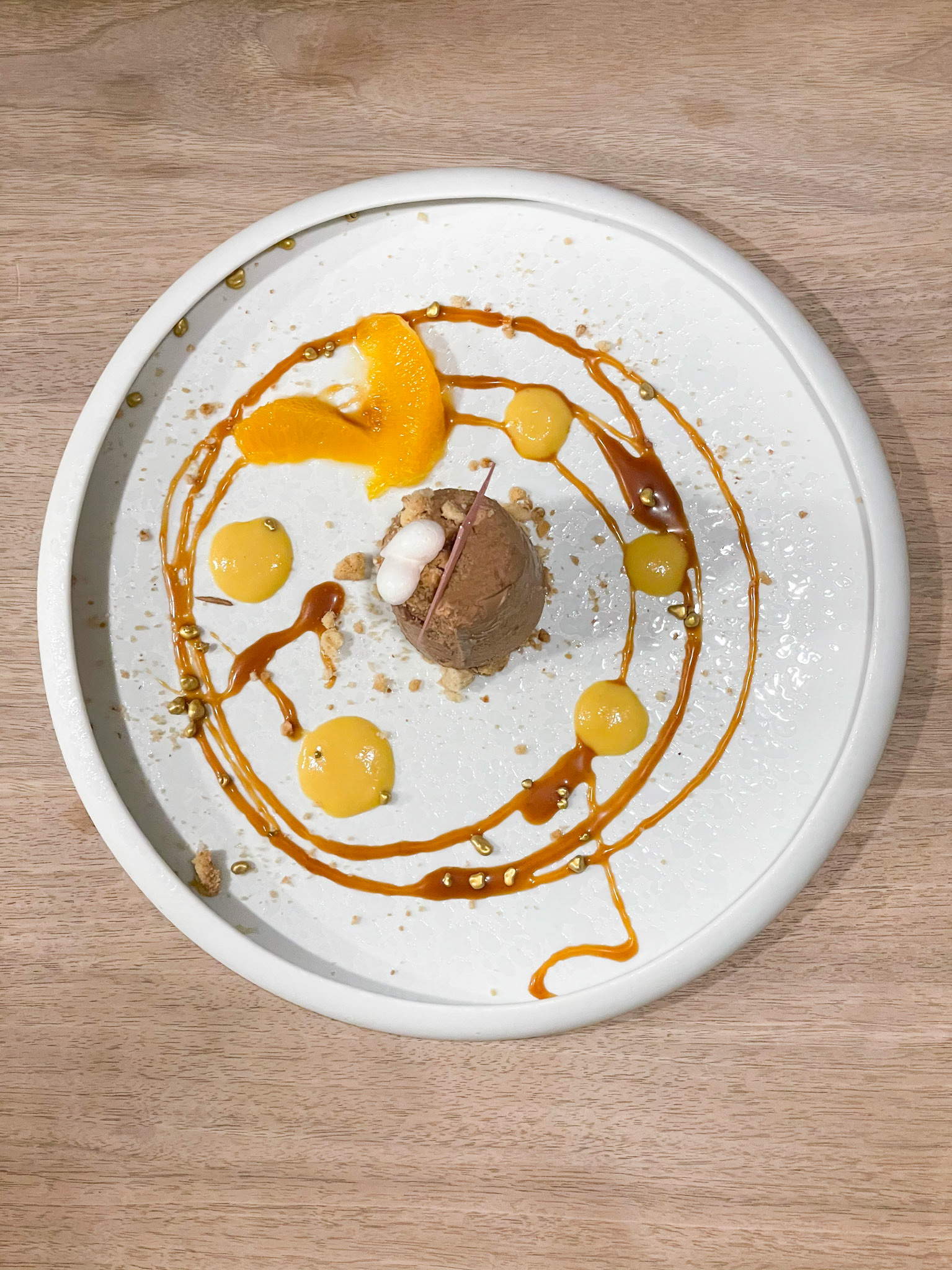
Gasthaus am Brunnen
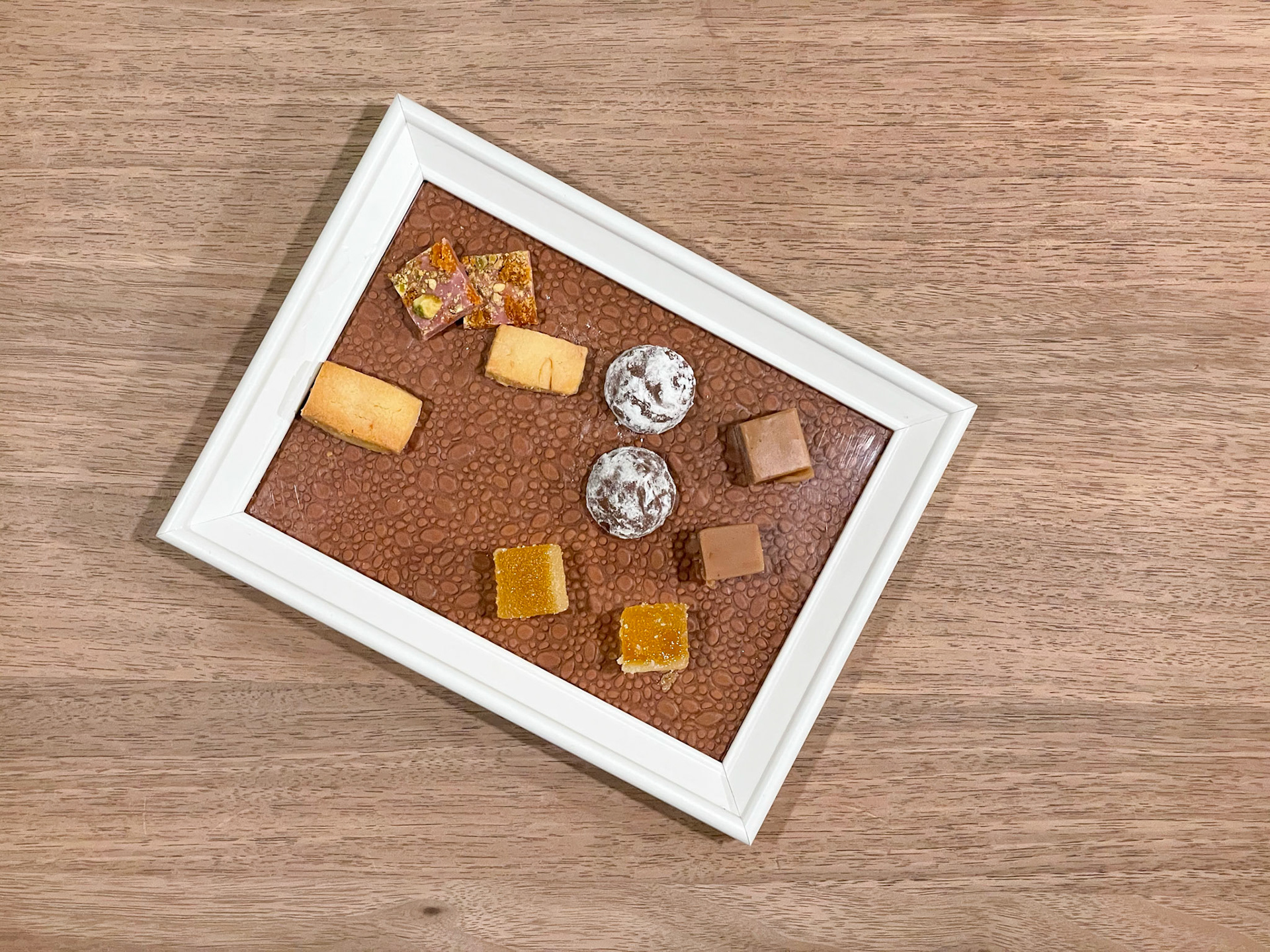
Gasthaus am Brunnen
Day 2: Exploring Flims
Today I suggest discovering the Rhine Gorge from the opposite side of the Rhine, from Flims. Flims has a population of almost 3000 and was traditionally a winter home for dairymen. Many of the houses still show the traditional structure with barns on the ground level and the living area on the upper level.
In 1877, Waldhaus Flims was opened as the first grand hotel. Then in 1940, the first private holiday homes were built and today more than half of all apartments and homes serve recreational purposes. Flims, well-known for winter sports, regularly hosts international skiing and snowboarding competitions.
Parc la Mutta Falera
On the way there lies Parc la Mutta. It was built in the Middle Bronze Age (1600-1200 BC) and is the largest and most important megalithic complex in Switzerland.
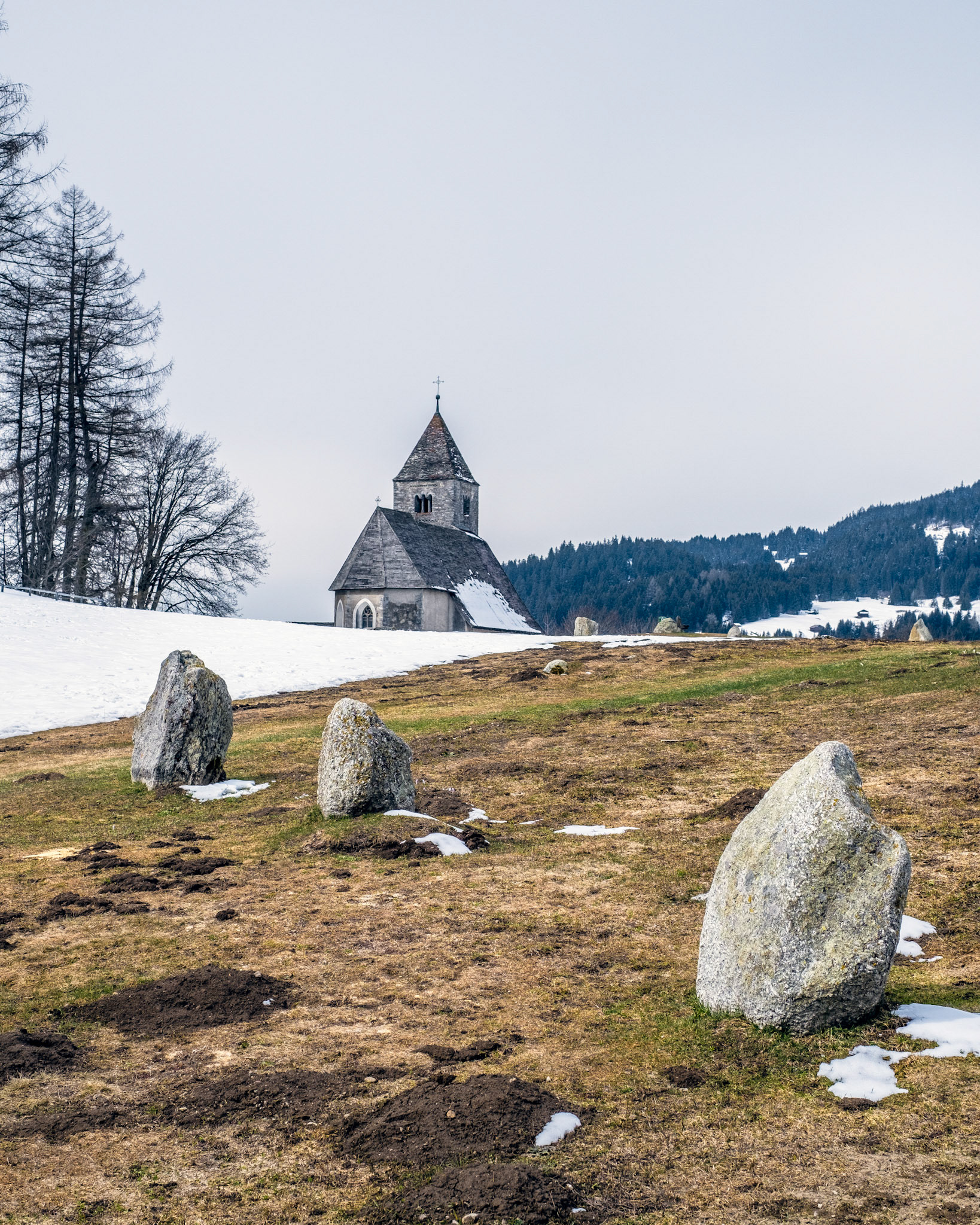
Parc la Mutta Falera
Caumasee and Il Spir
From there, off to Caumasee and a nice hike to Il Spir viewpoint. In 2016, Caumasee, famous for its turquoise-green color, was voted Switzerland's most beautiful mountain lake by the readers of a Swiss newspaper. It is fed from underground sources and its western bay never freezes during winter.
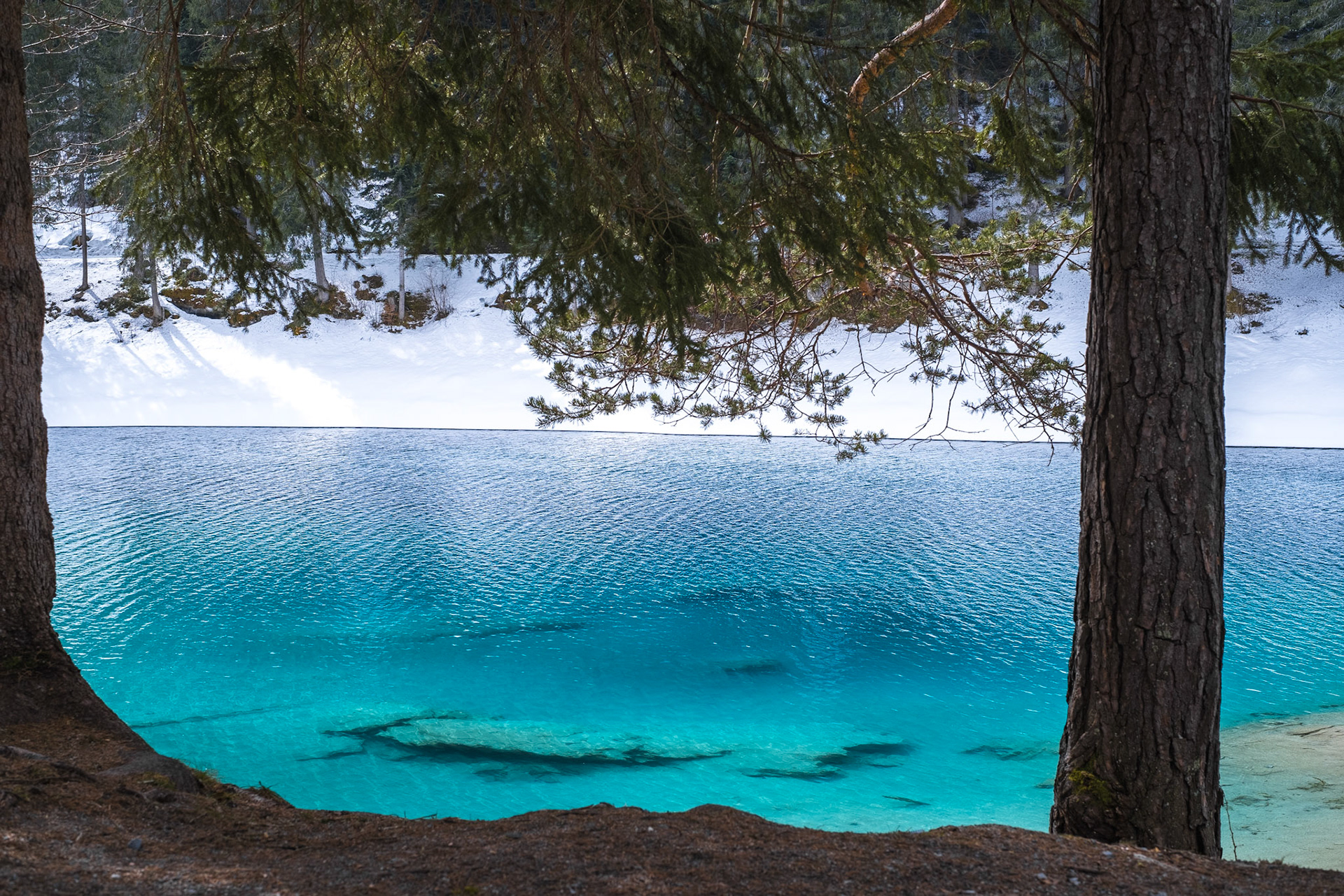
Caumasee
The viewing platform Il Spir is located in Conn. It was designed by the Chur architect Corinna Menn and inaugurated in 2006. Not only allows it a beautiful 180 degree view of the Ruinaulta, but its design itself is striking.
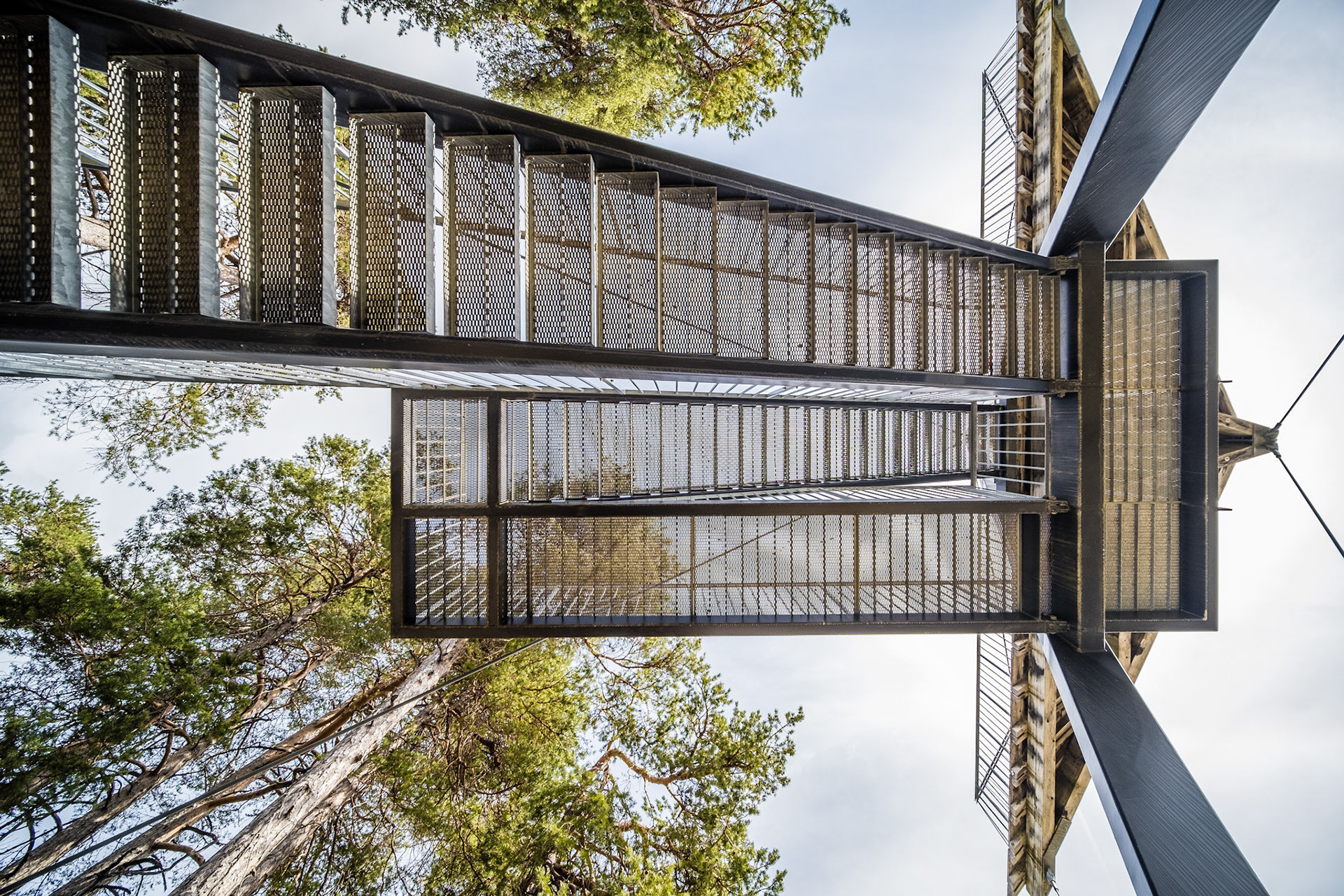
Il Spir
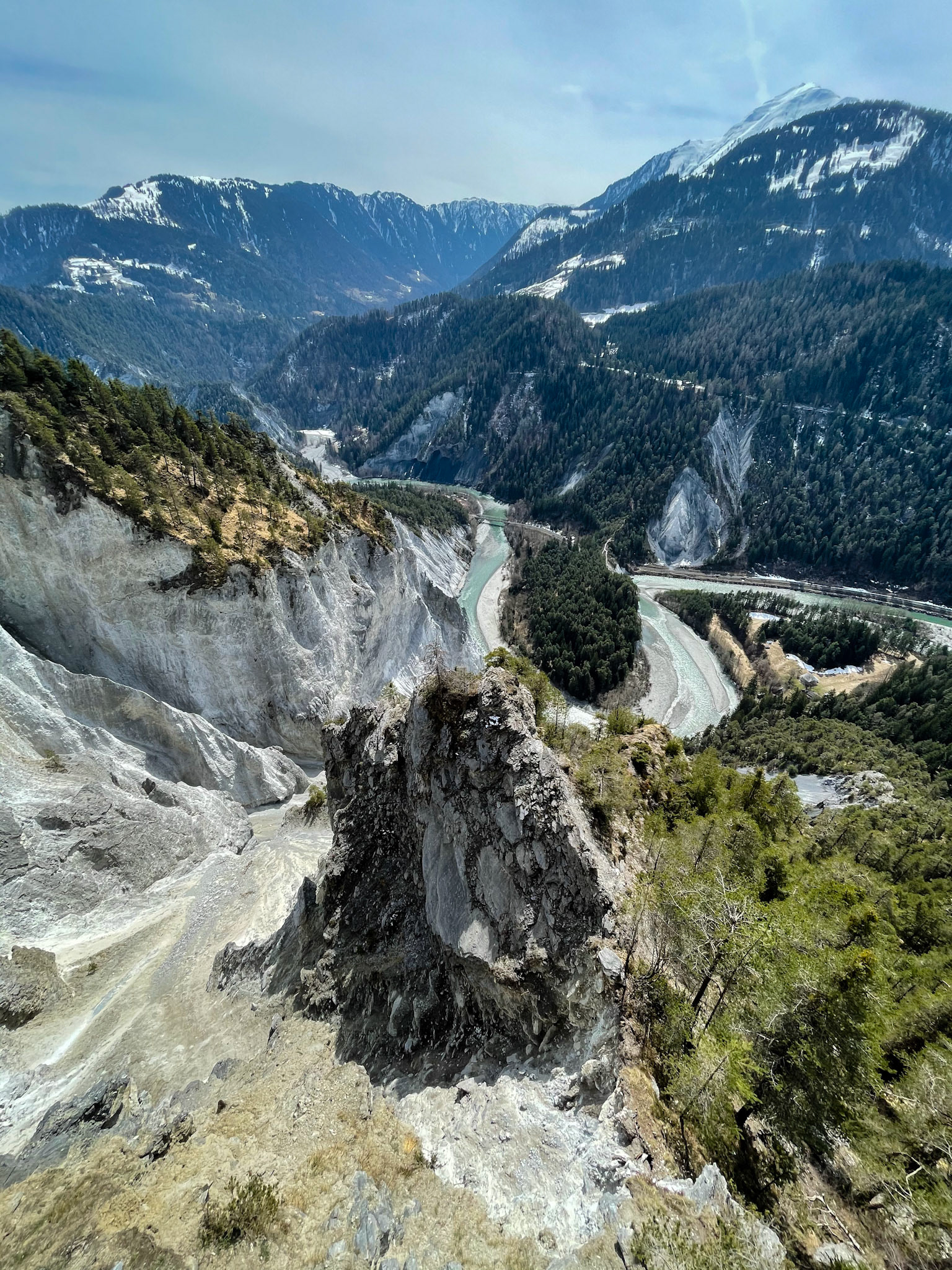
Il Spir
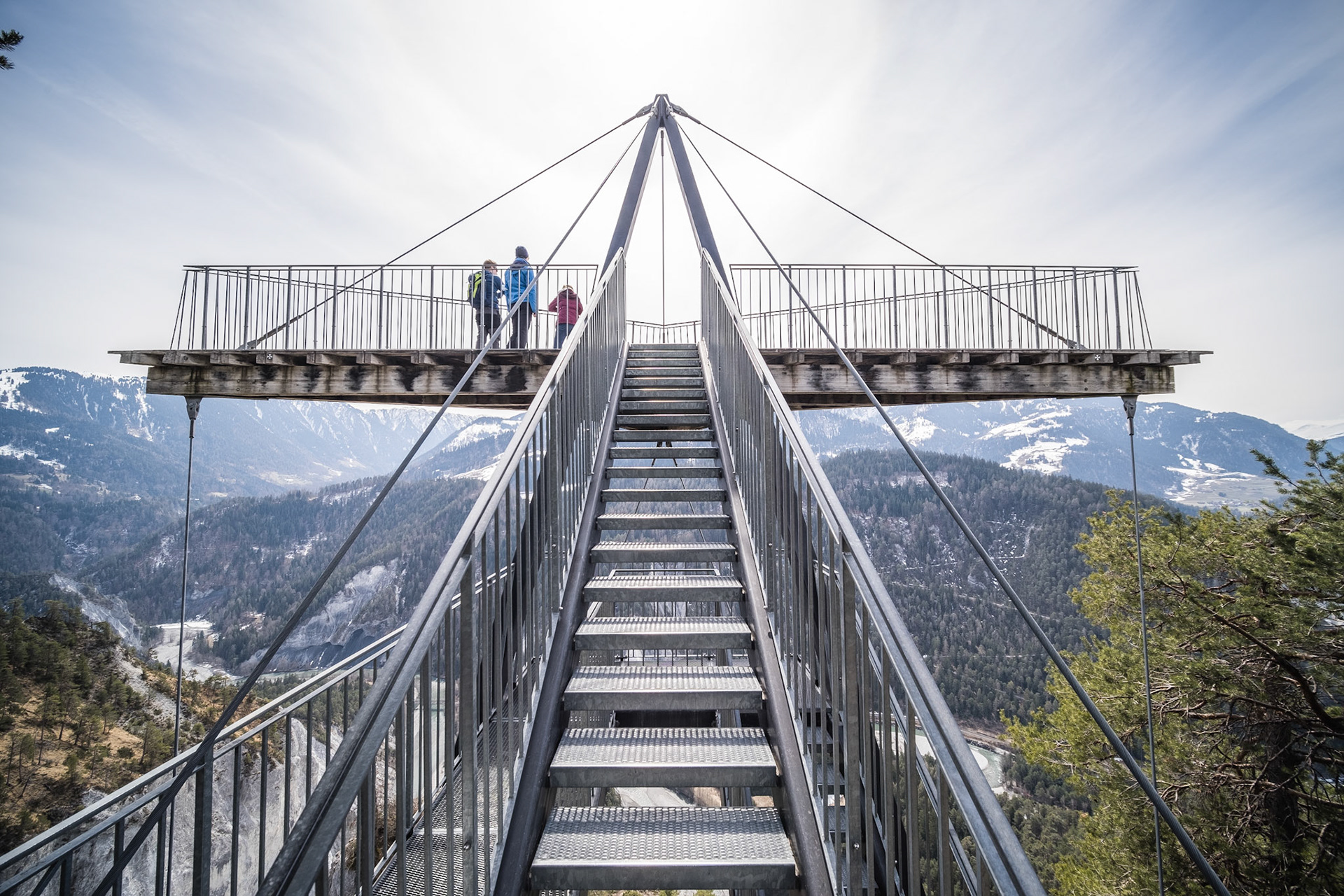
Il Spir
Architects Rudolf and Valerio Olgiati
A famous architect of the area is Rudolf Olgiati who lived in Flims from 1910 to 1995. He studied at the Swiss Federal Institute of Technology in Zürich and graduated in 1934. He had first worked as an architect in Zürich before transitioning to Flims in 1944.
Olgiati mainly built family homes in Grisons. In Flims Waldhaus, there is actually an area sometimes called the "Olgiati district" due to the numerous houses he designed and built there. Casa Las Caglias, an apartment building completed in 1960, was one of the first buildings at this location.
In 1972, it was extended by the Casa Radulff with which it forms a single complex today. The house is built on top of a rock which is integrated into the swimming pool area in the basement. The light and mood remind me a lot of Cesar Manrique's buildings on the Canary Islands.
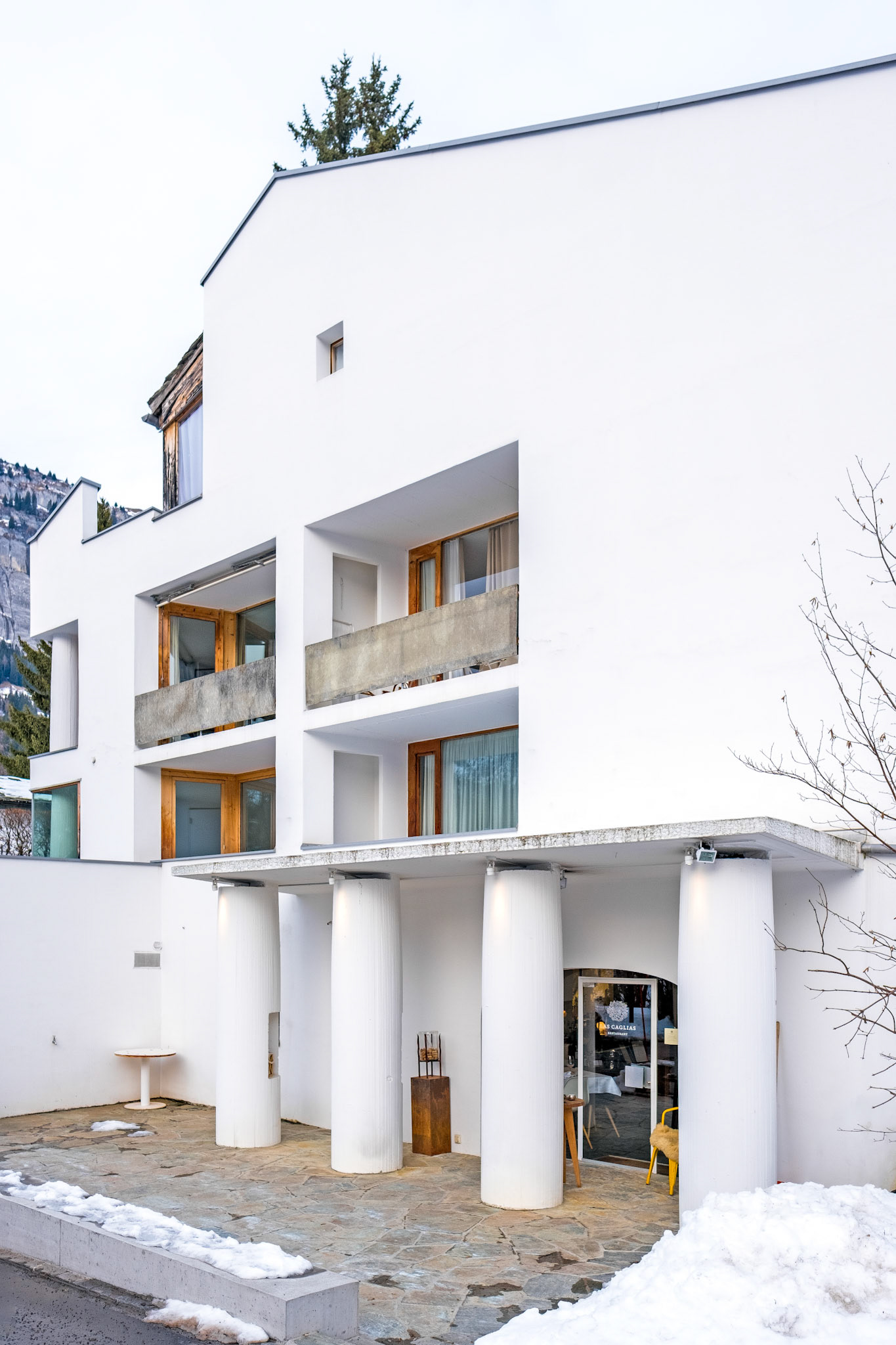
Casa Las Caglias
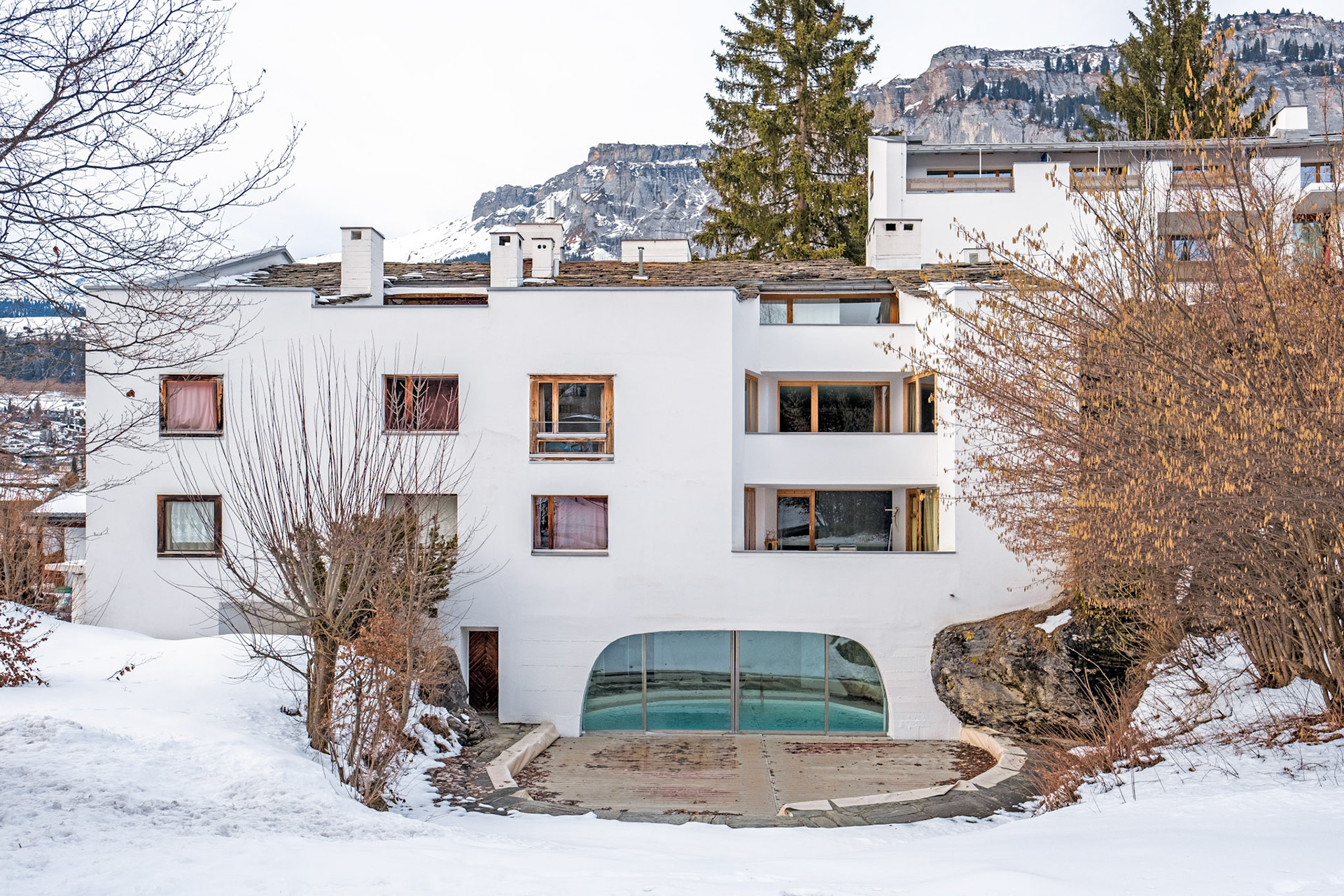
Casa Las Caglias
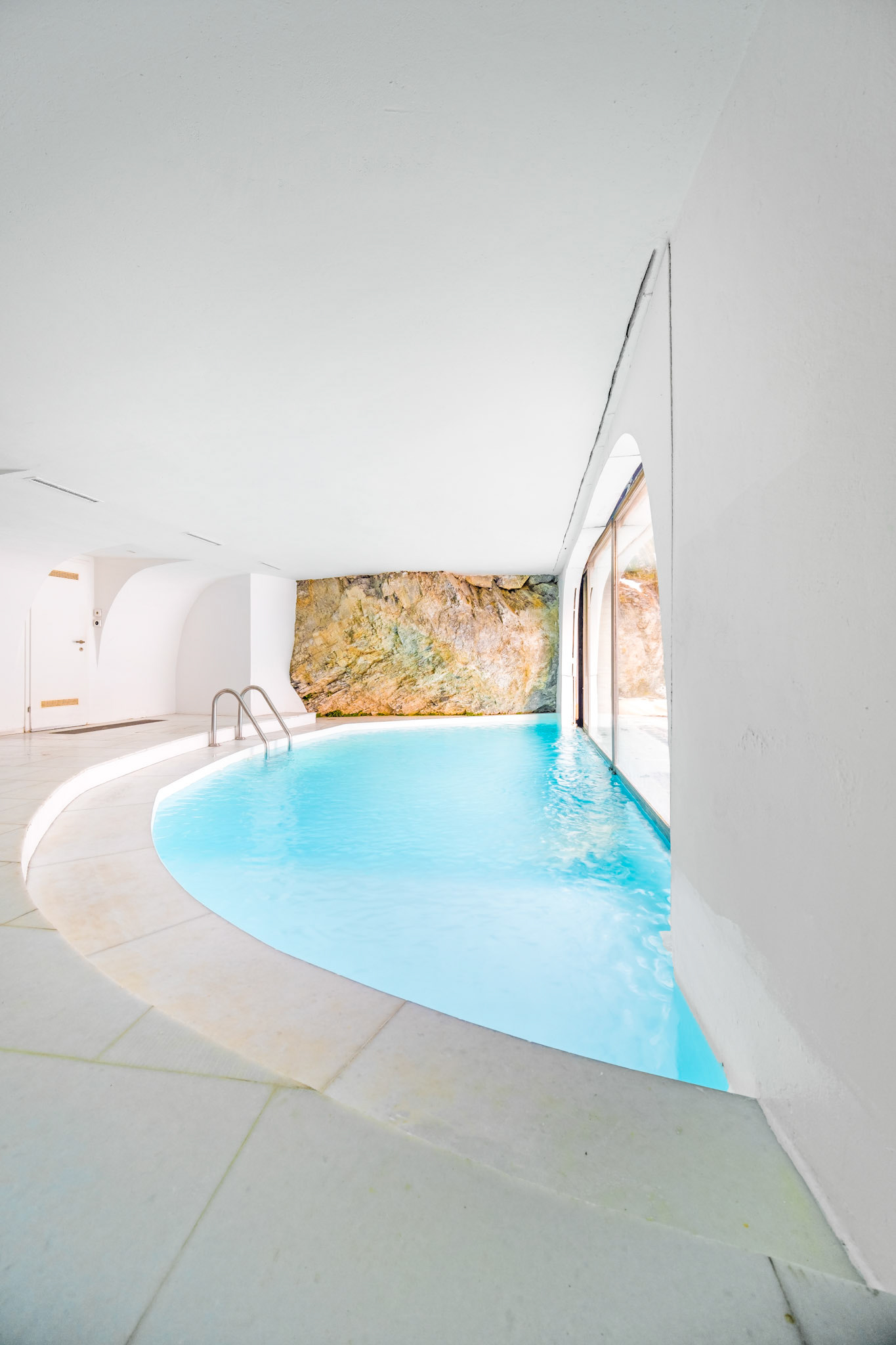
Casa Las Caglias
Rudolf Olgiati's son, Valerio Olgiati, followed in the footsteps of his father and now also works as an architect out of Flims. His current office, replacing an old barn, was completed in 2009 and the wooden building is painted completely black.
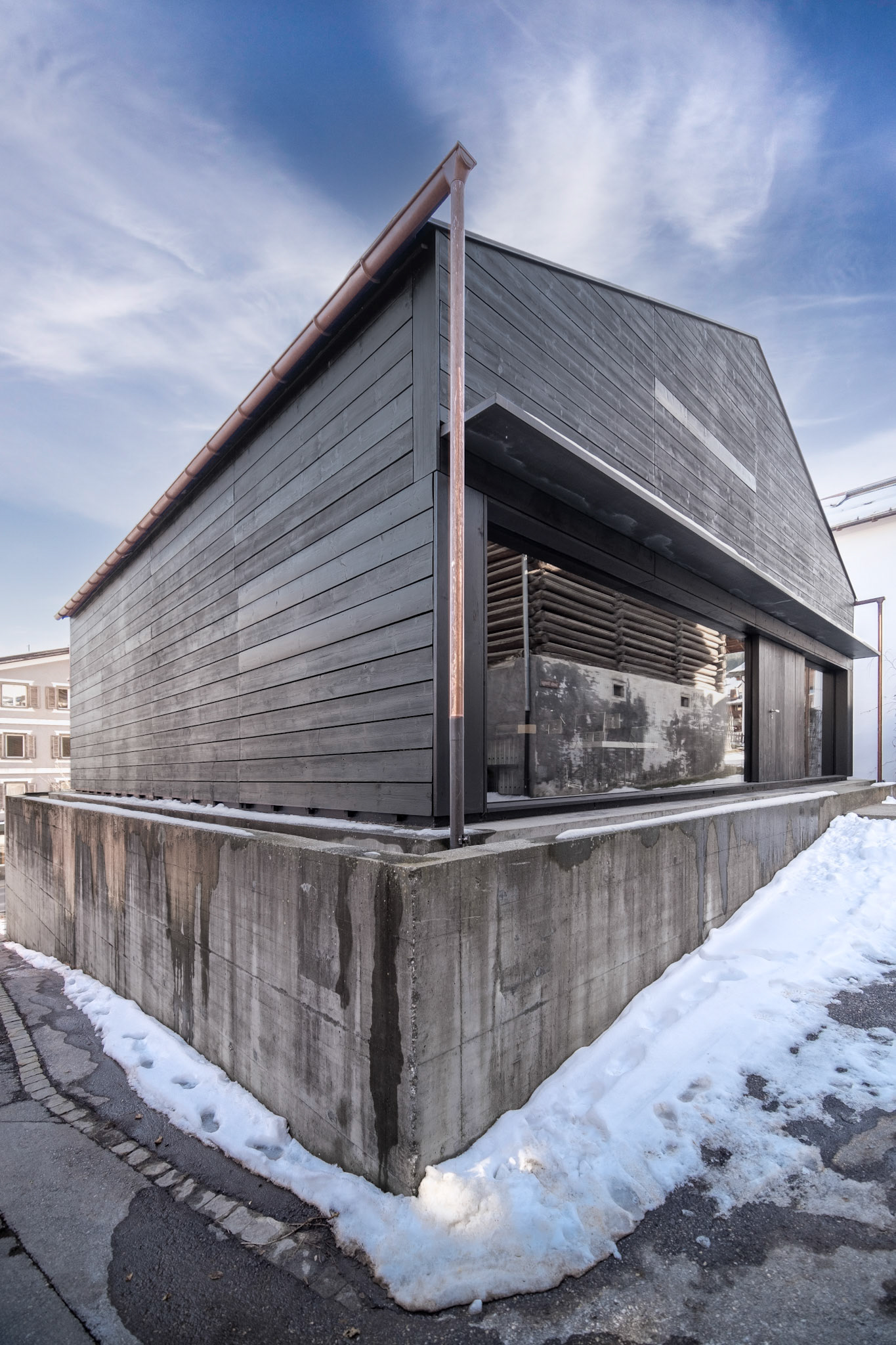
Valerio Olgiati - office
A short walk from there is the Das Gelbe Haus Flims (Yellow House) and its history is related to both Rudolf and Valerio Olgiati. Shortly before his death in 1995, Rudolf Olgiati donated part of his cultural goods collection to the municipality of Flims under the condition that the yellow house in the middle of the village be renovated to his taste. In particular, it was supposed to be painted "from top to bottom in white."
In 1997, Valerio Olgiati was appointed for the renovation and he completely transformed the building. All interior walls were removed in order to create large exhibition spaces, and the external plaster work was removed up to the natural stone walls. The building, which was previously painted yellow (hence its name), was then painted white inside out, including the brand new slab-stone roof.
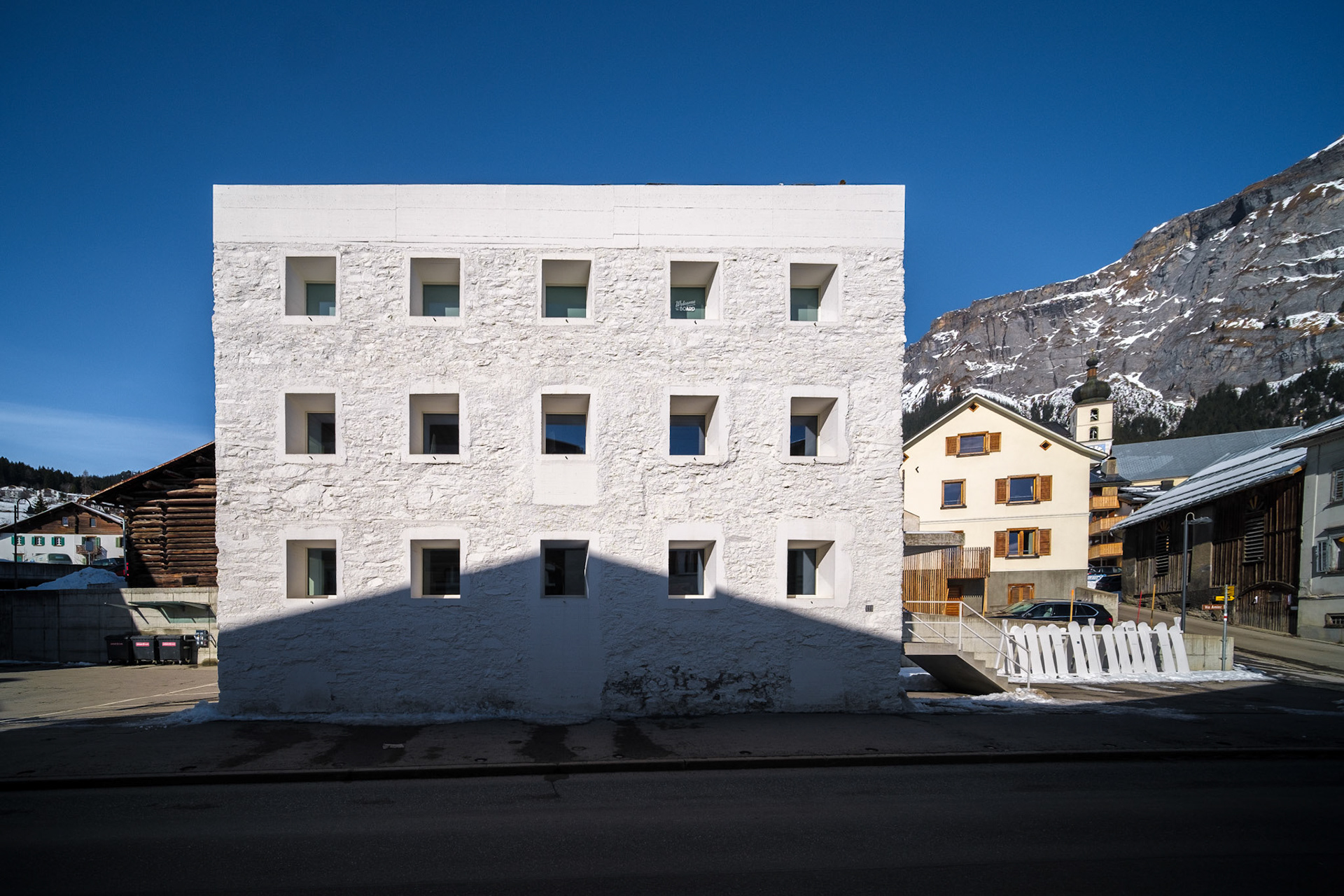
Das Gelbe Haus
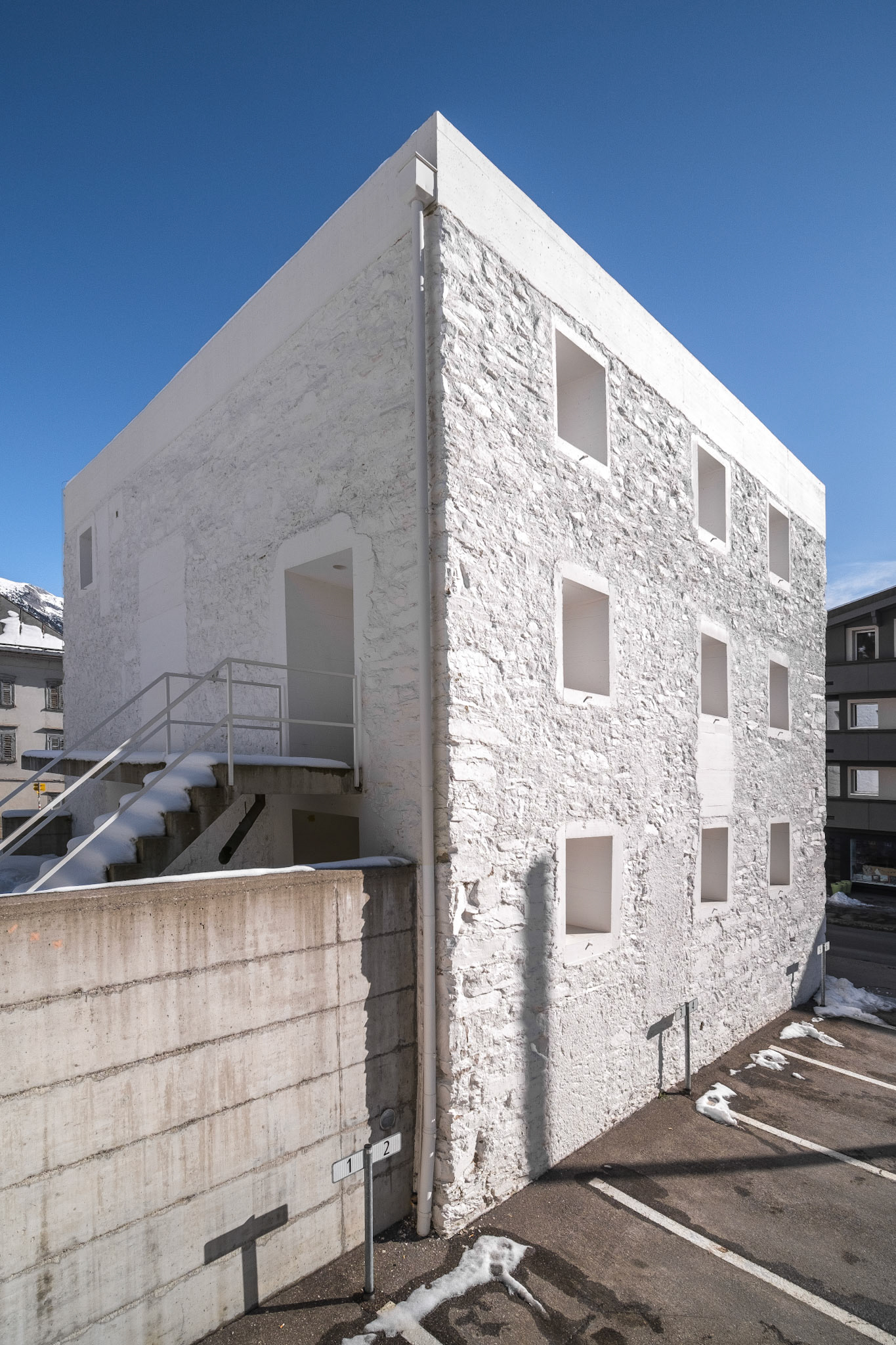
Das Gelbe Haus
Day 3: Peter Zumthor
Today I'll have you explore two of Peter Zumthor’s most famous buildings in Switzerland: Therme Vals and the Saint Benedict Chapel in Sumvitg.
Born in Basel in 1943, Zumthor originally trained as a cabinet maker. He would continue his studies at the Kunstgewerbeschule before studying industrial design and architecture at the Pratt Institute in New York in 1966. Zumthor founded his own architecture firm in 1979 and was awarded the Pritzker Prize in 2009.
Saint Benedict Chapel in Sumvitg
After an avalanche destroyed the baroque-style chapel of Sumvitg in 1984, Peter Zumthor's proposal of a minimalist drop-shaped chapel was selected to be built. The Caplutta Sogn Benedetg Chapel in Sumvitg is located close to the original location, but protected from avalanches by the surrounding forest. Its exterior is completely covered in wooden shingles, similar to traditional houses of the area.
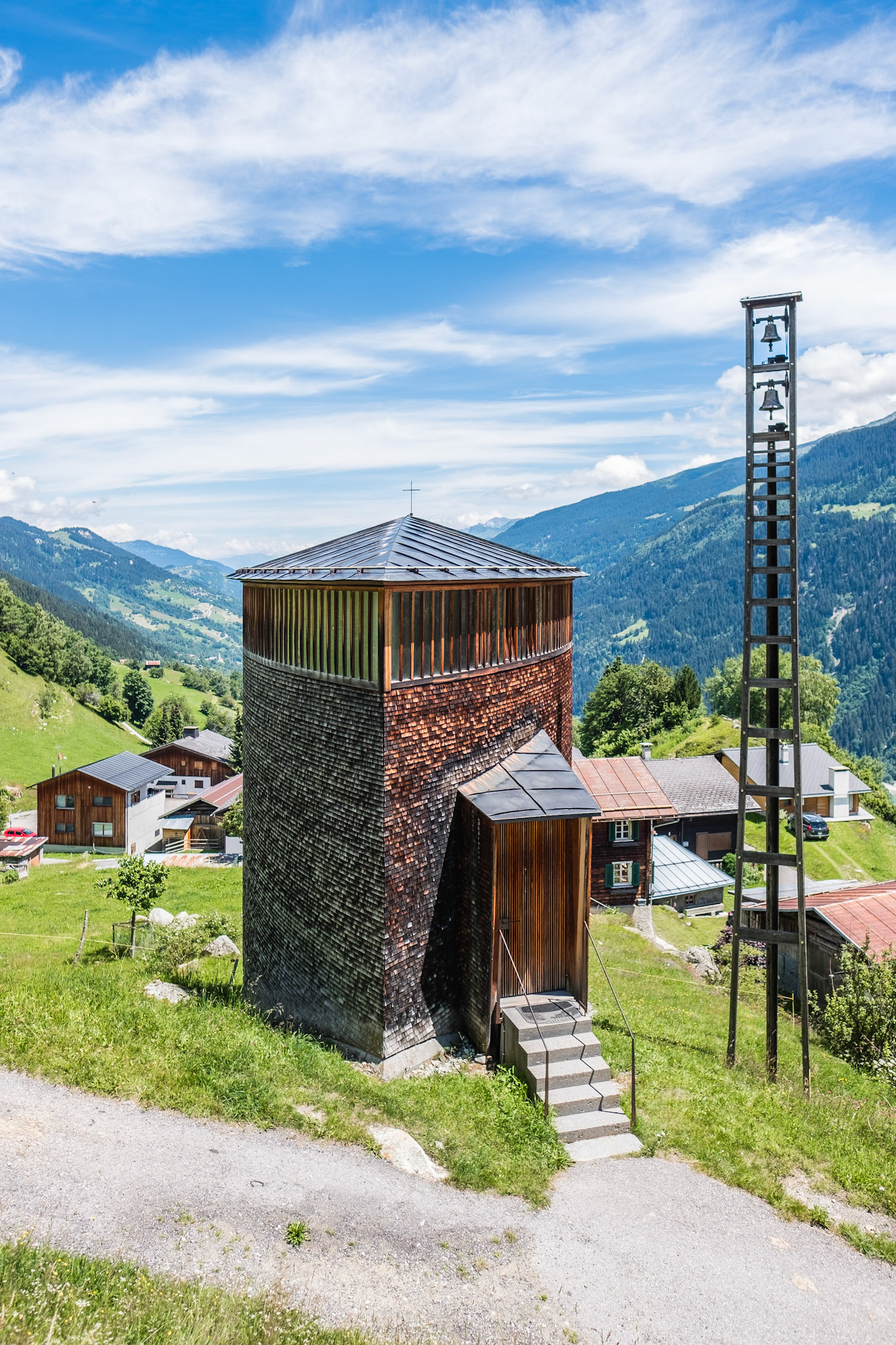
Saint Benedict Chapel in Sumvitg
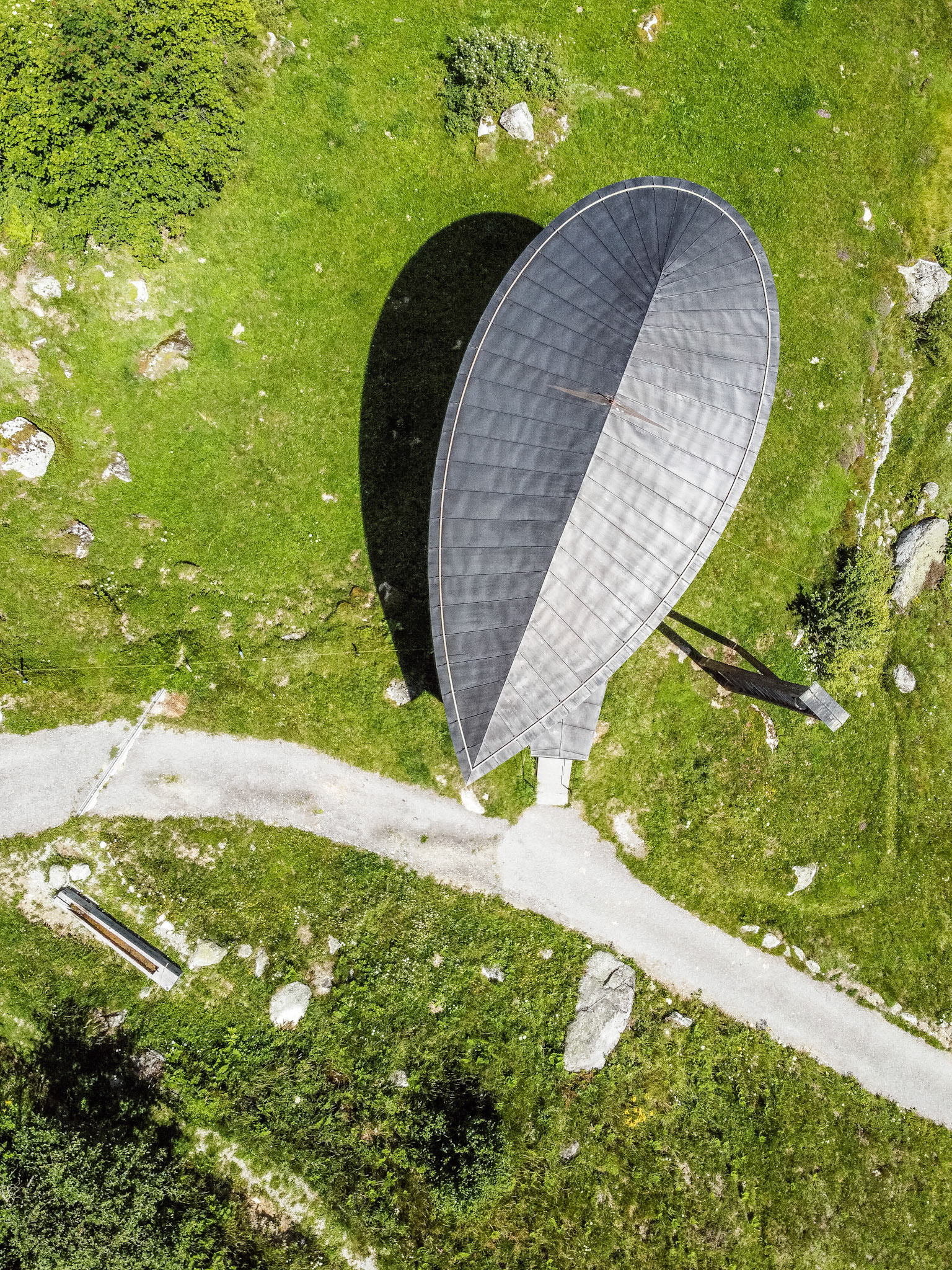
Saint Benedict Chapel in Sumvitg
The upper section of the walls contains vertical glass panels that allow natural light to flow from above into the simple interior space. It is amazing to see how these wooden pillars are able to support the weight of the roof throughout the seasons.
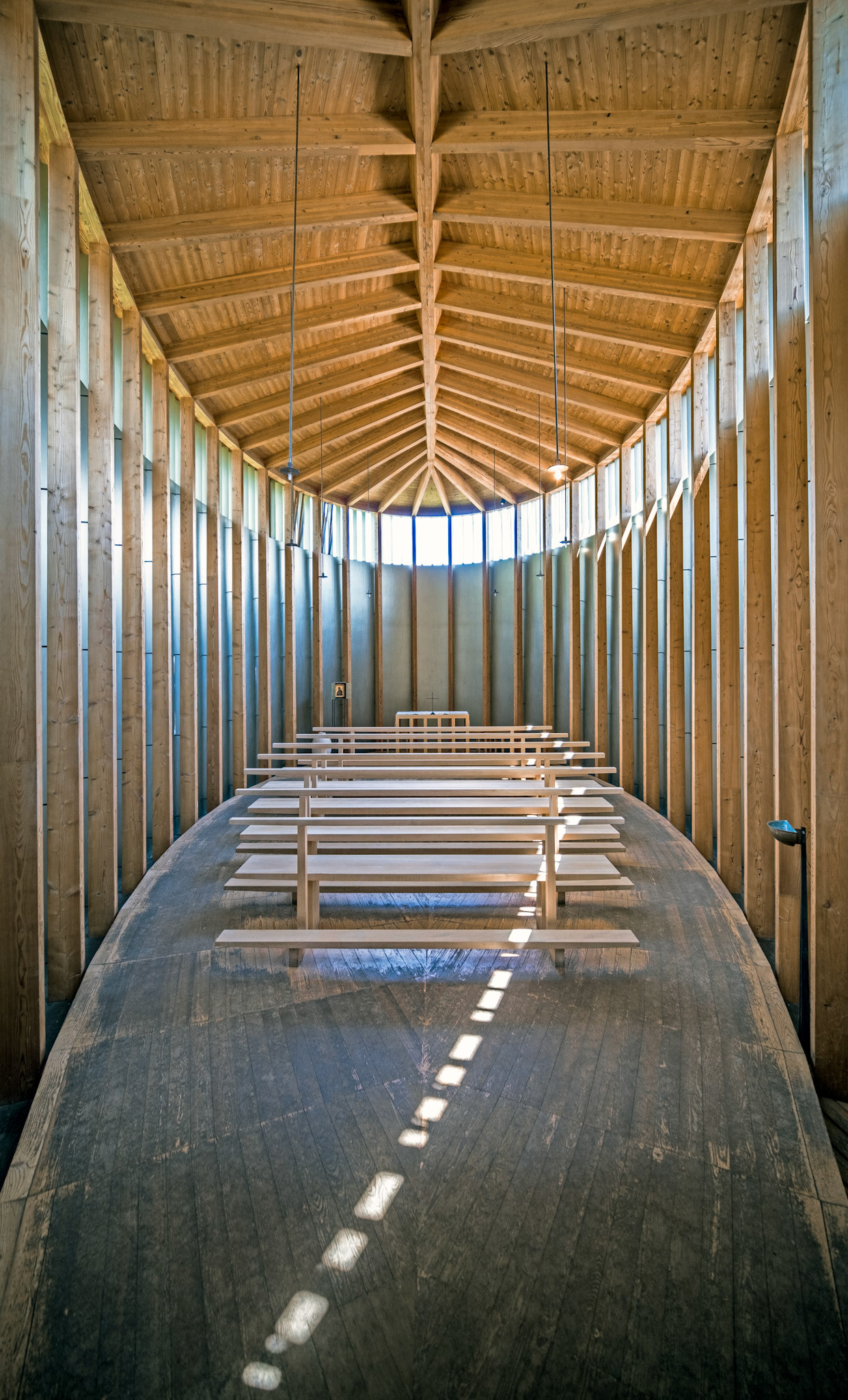
Saint Benedict Chapel in Sumvitg
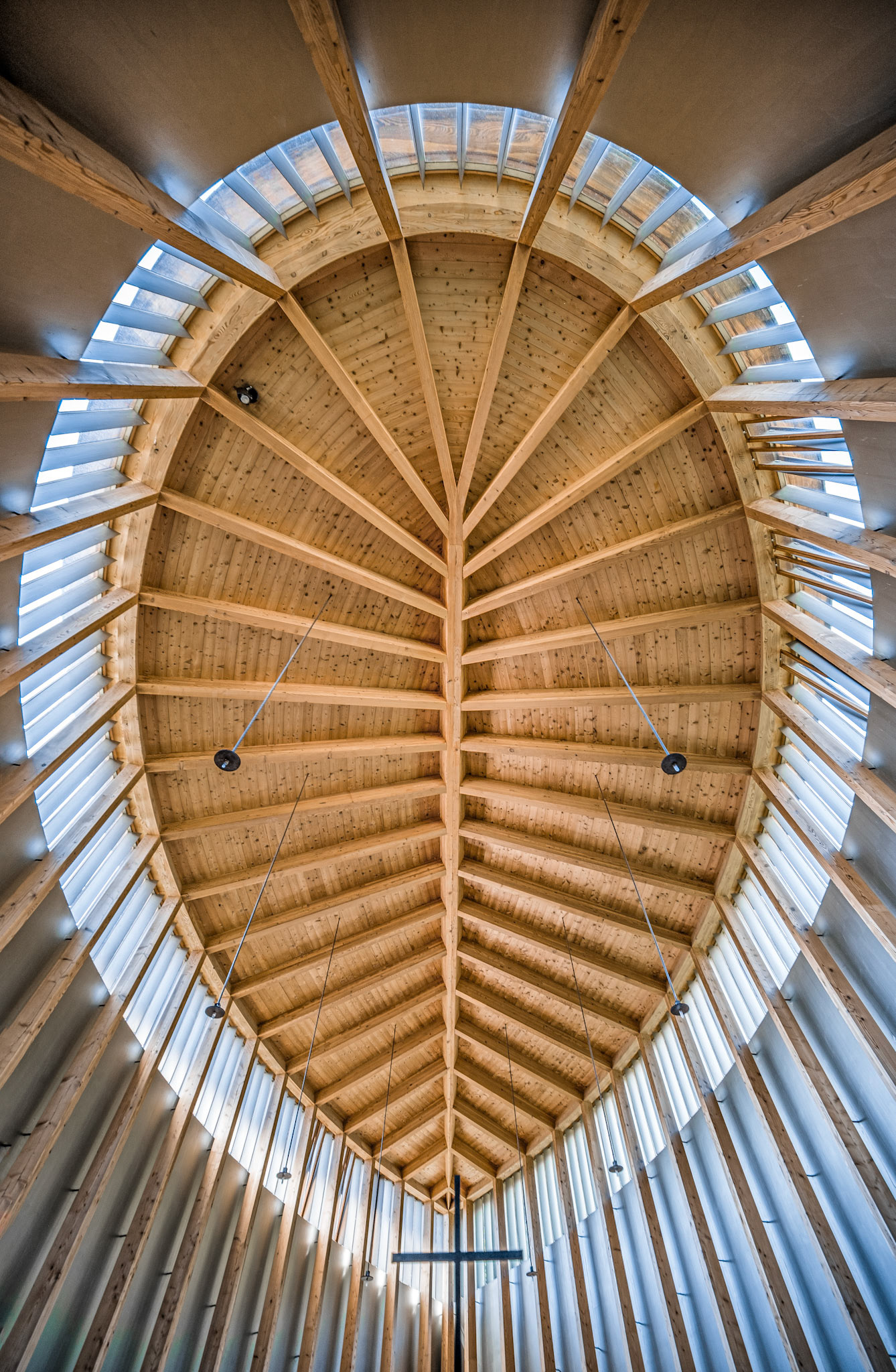
Saint Benedict Chapel in Sumvitg
OGNA, Trun
On the way to Vals, you can make a short stop in Trun, a small municipality of slightly more than 1000 residents, to see Ogna. OGNA, the last work of Matias Spescha (1925 - 2008), is Switzerland’s largest sculpture with a length of 48 meters, a width of 30 meters and a wall height of 5.5 meters.
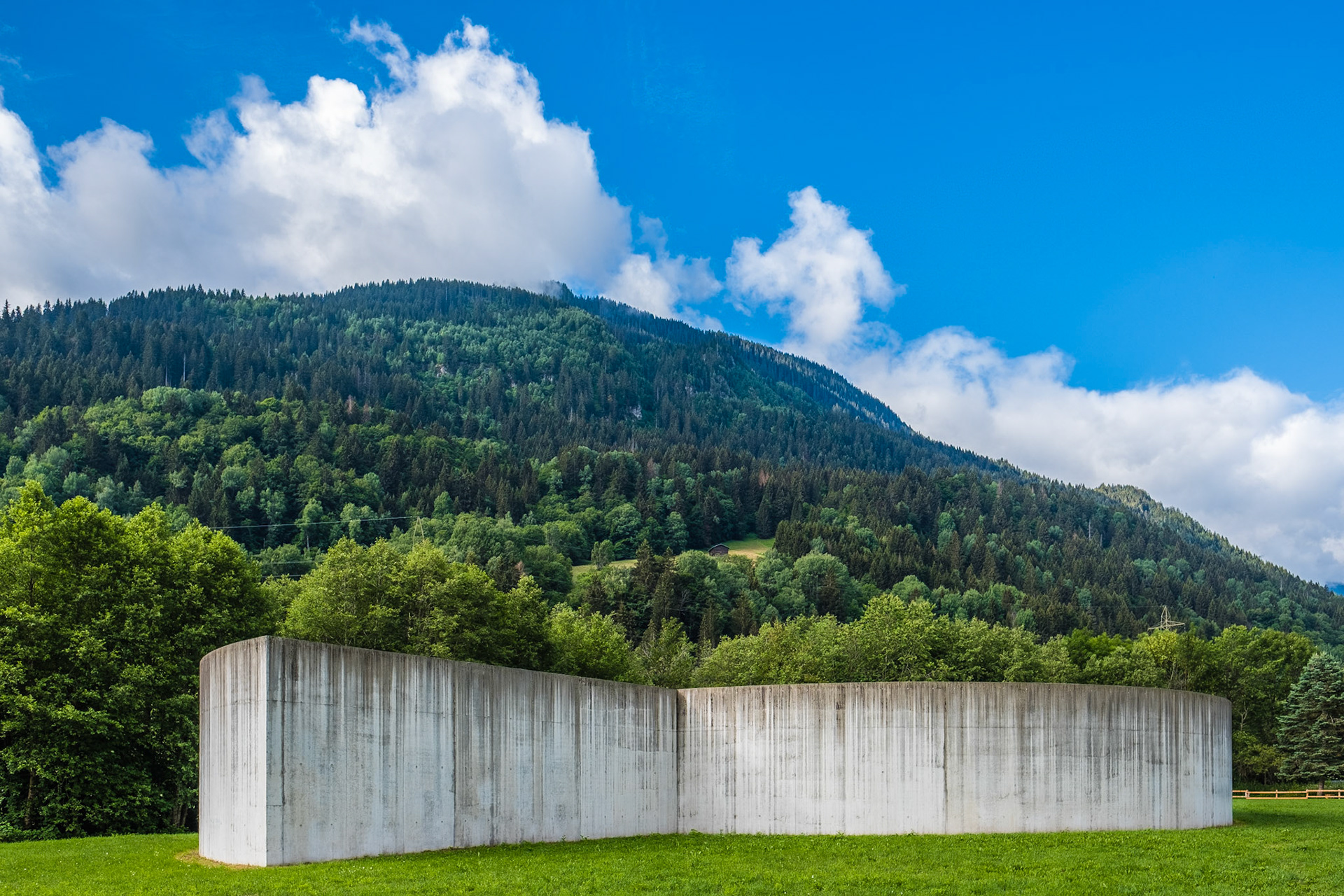
OGNA
It was inaugurated in 2013 and is freely accessible day and night through a door-like opening in one of the walls. As for its name, Ogna is the plural of Ogn, the Romansh word for “alder”. It refers to the forest just next to it.
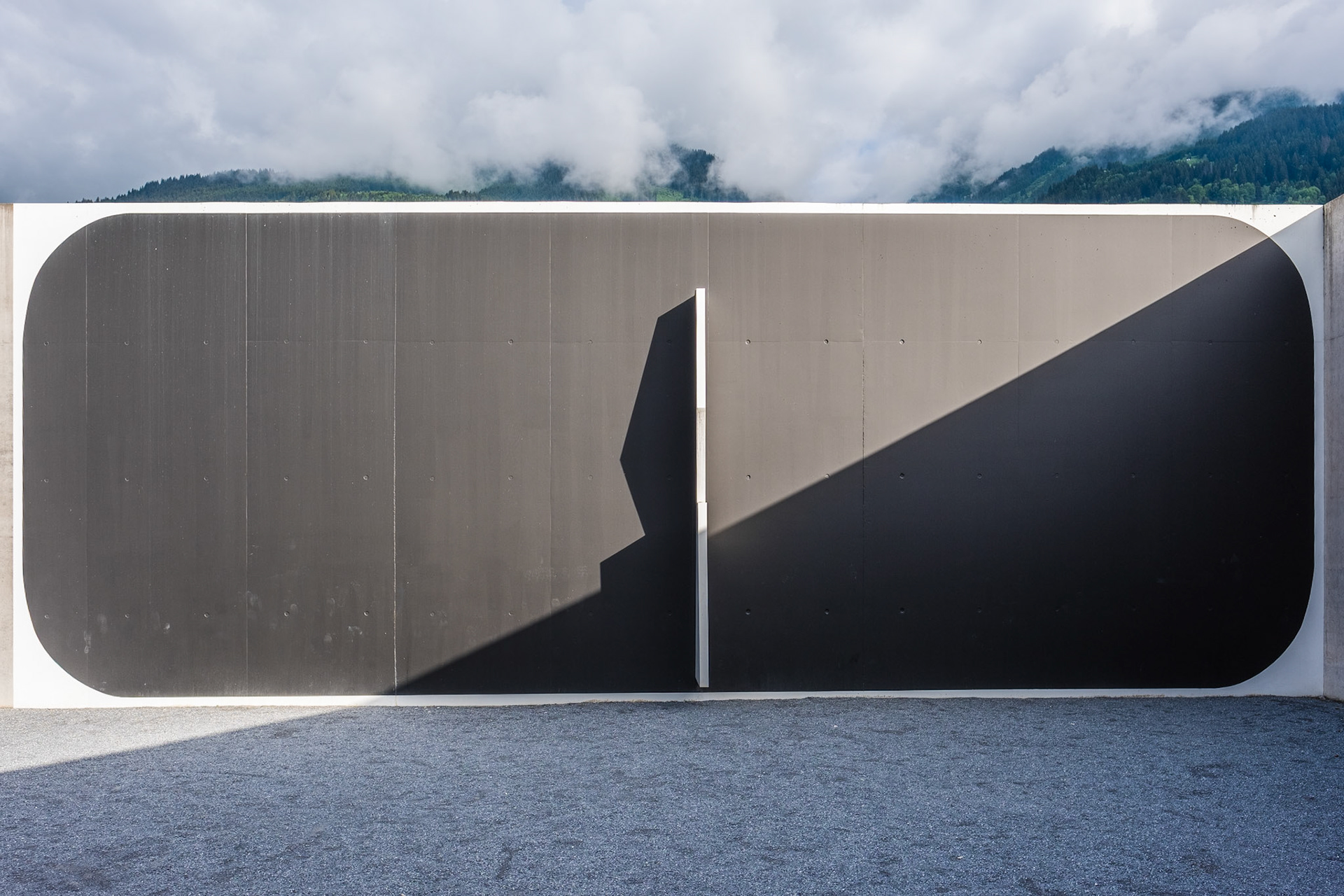
OGNA
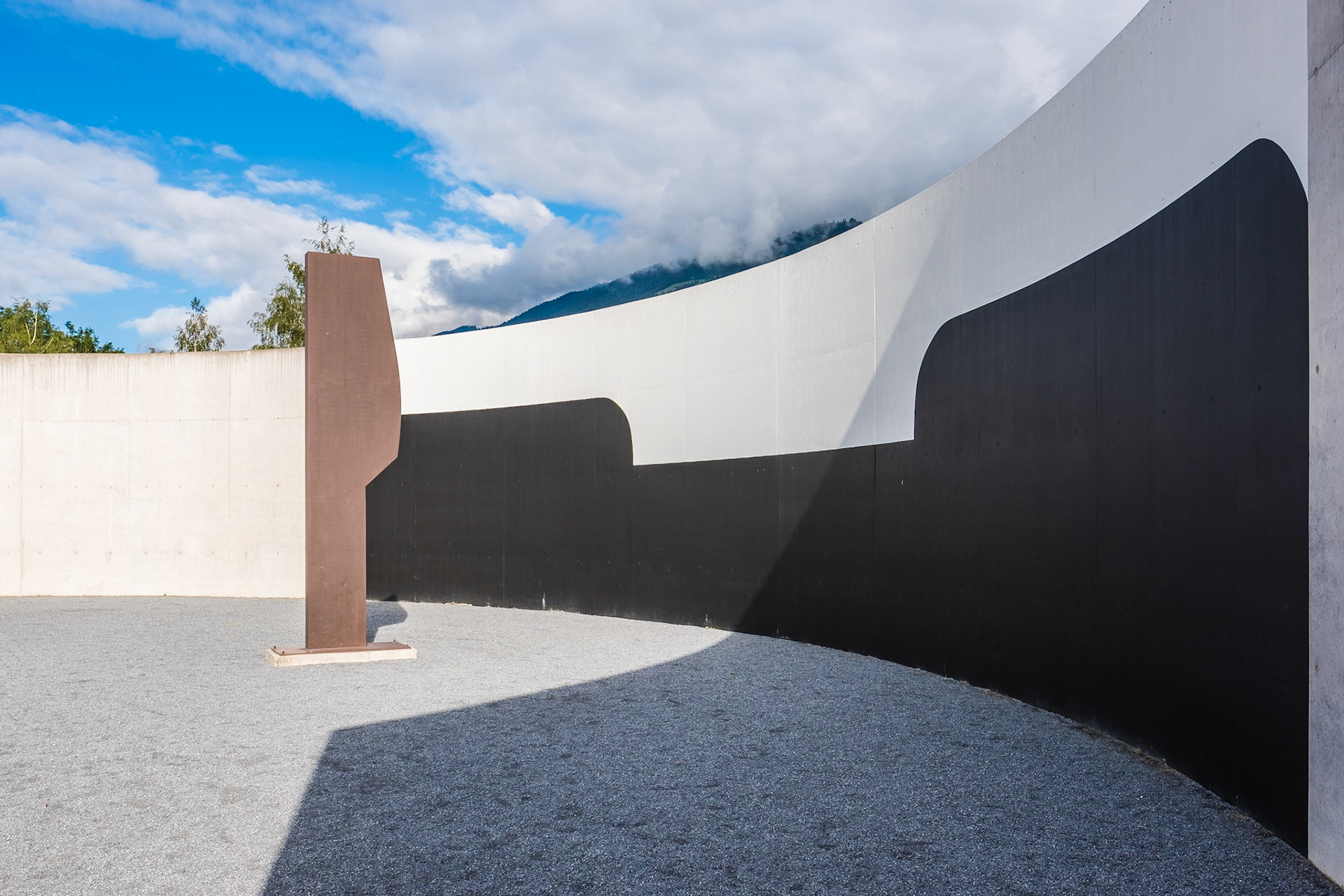
OGNA
Sitting inside this sculpture while the clouds passed by and the different elements casted ever-changing shadows was almost a meditative experience. My favourite perspective was the bird's-eye view, though.
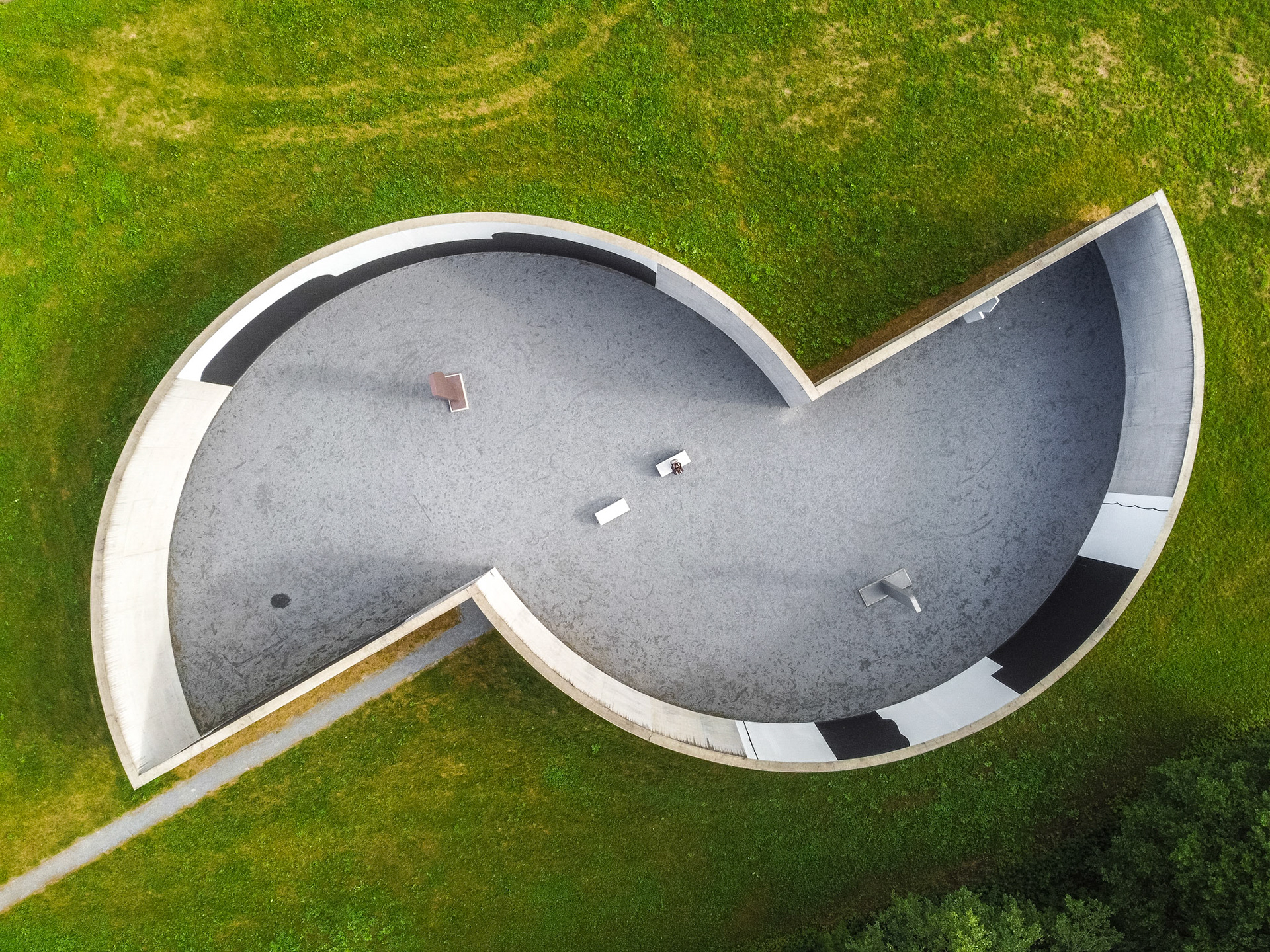
OGNA
Therme Vals
Located at 1250 meters above sea level, Vals has a population of about 1000 people. When you first arrive in Vals, you cannot miss the hotel complex at the entrance of the village. It was built by a German property developer around the only thermal springs in Graubünden in the 1960s. Today, the water of the springs is split among the Therme Vals and the famous Valser bottled water.
Slightly higher up the hill is the entrance to the thermal baths, designed by Peter Zumthor and built from 60'000 local quartzite slabs. The building is so special that only two years after its inauguration, it was already granted protected heritage status.
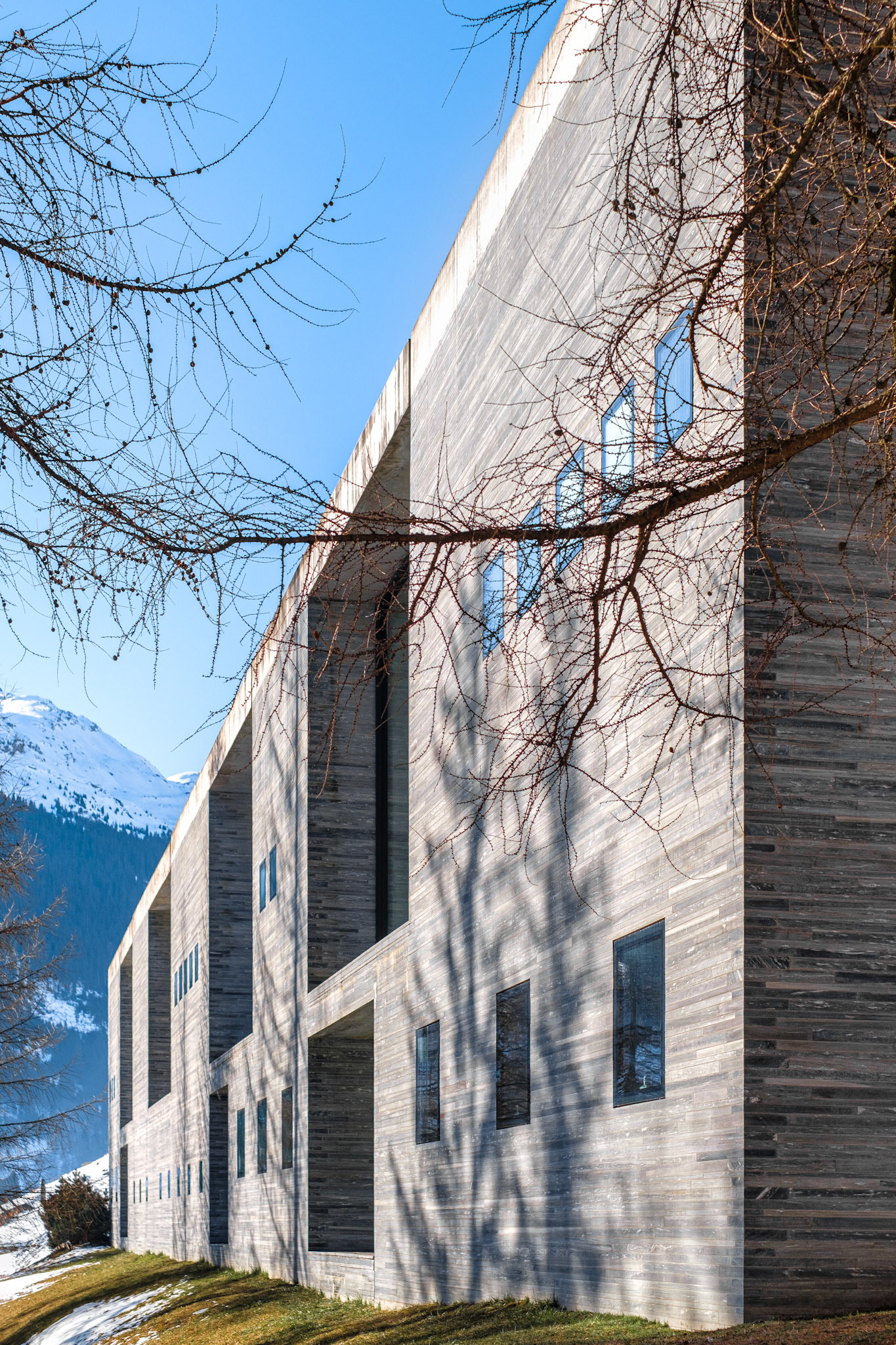
Therme Vals
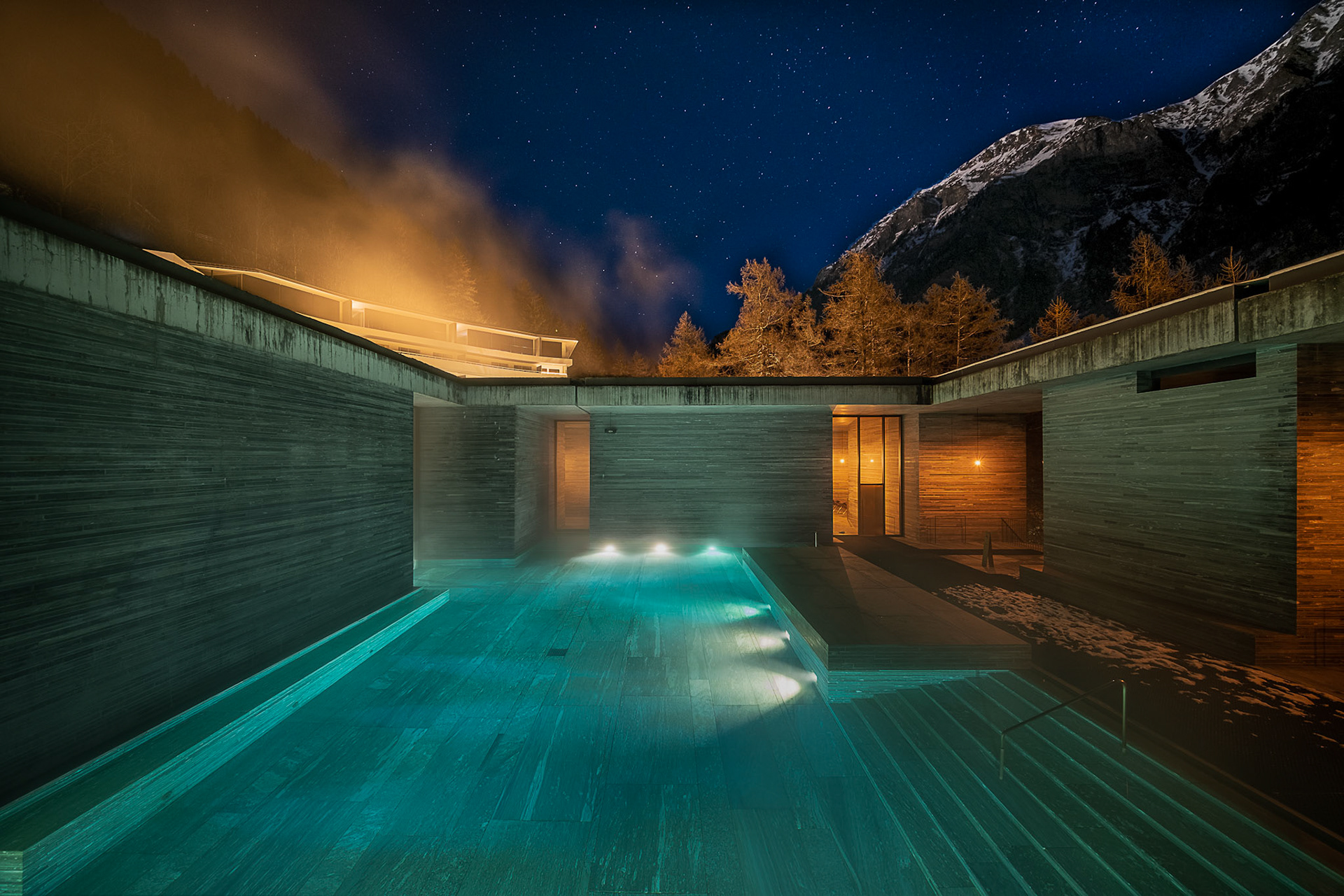
Therme Vals
In total there are seven different pools. Each has its own particular atmosphere and water temperatures ranging from 14 to 42 degrees Celsius.
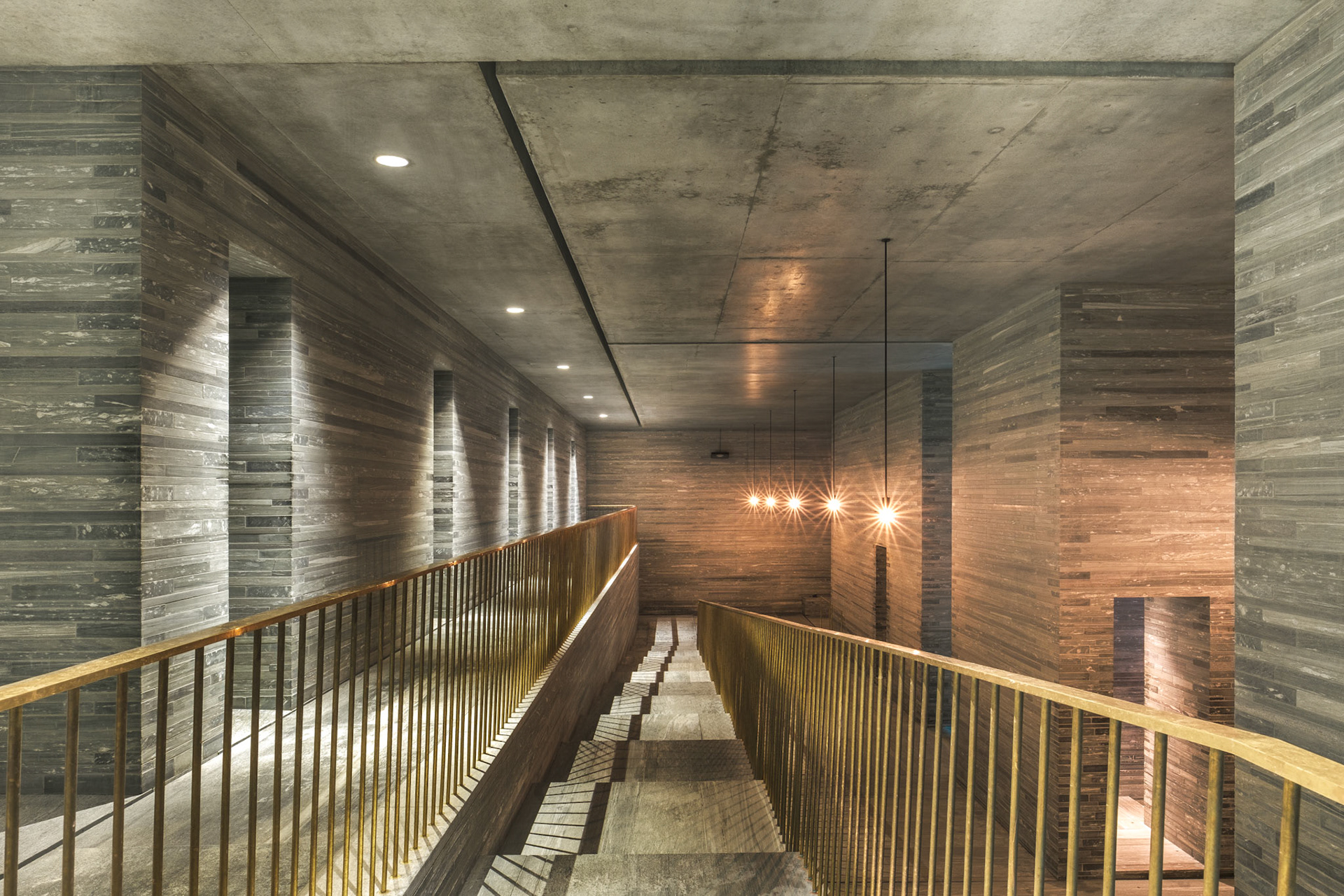
Therme Vals
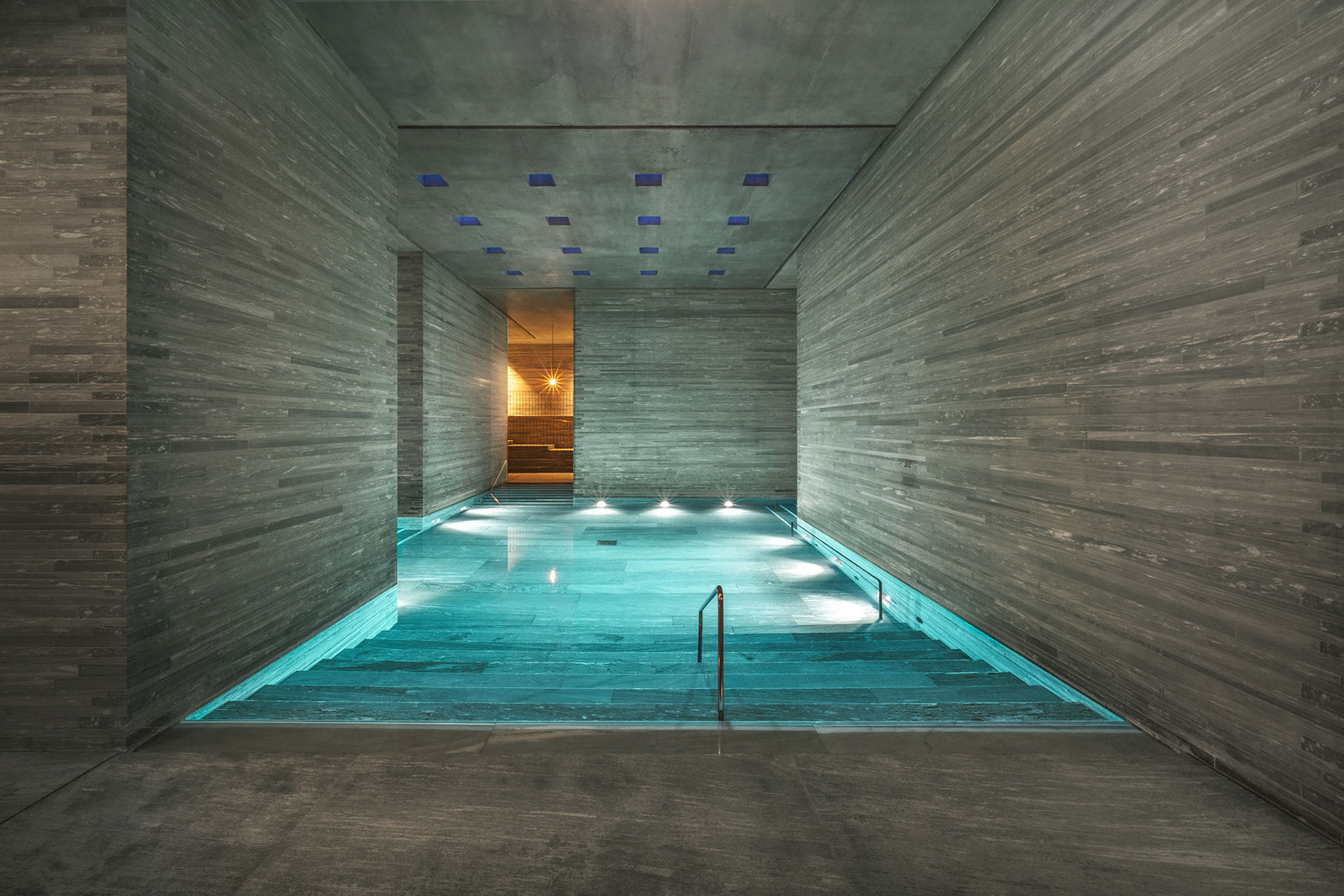
Therme Vals
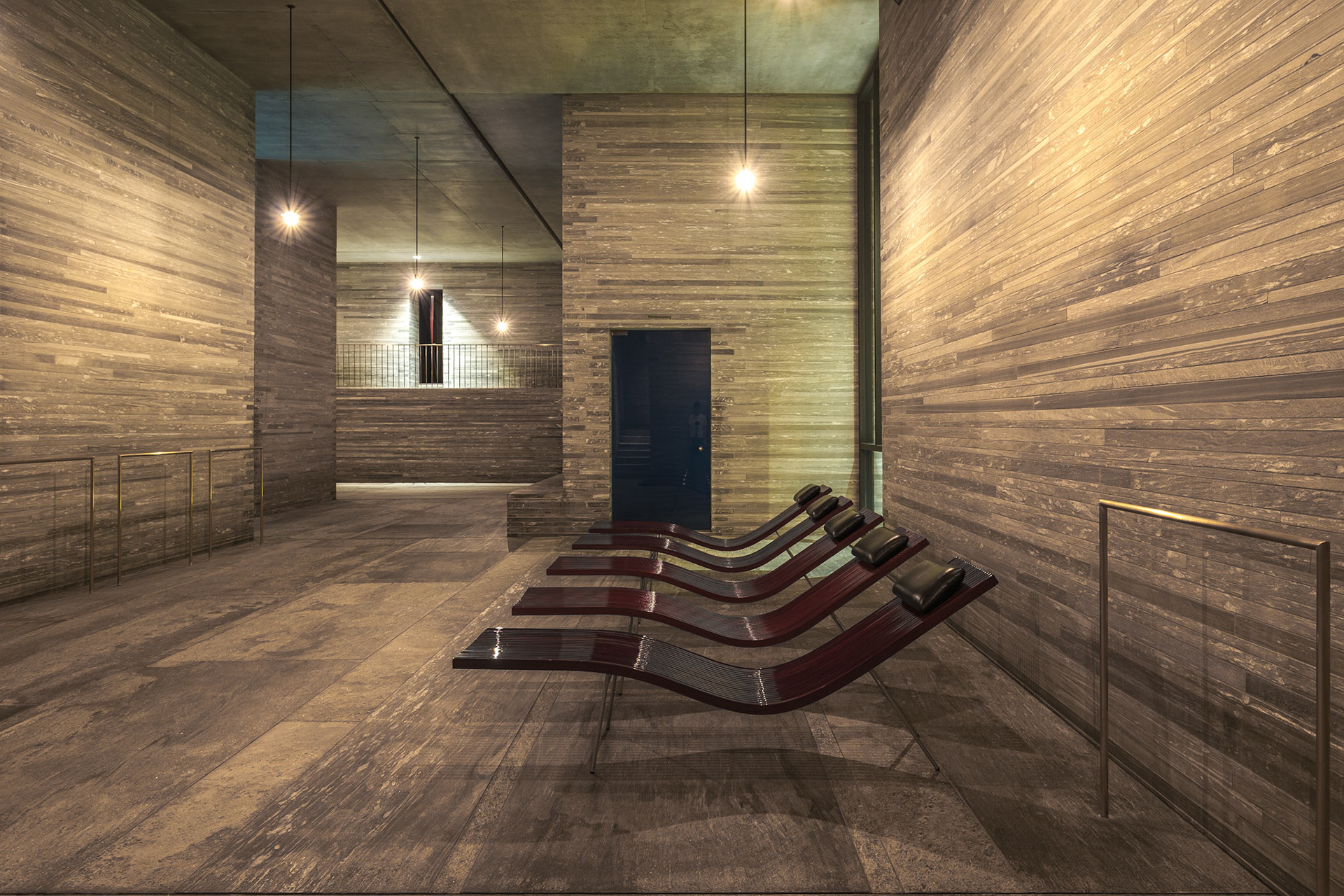
Therme Vals
I would highly recommend spending the rest of the afternoon here !
Day 4: Towards St. Moritz
Road trip day: you can find more architectural gems on the way to St. Moritz.
Steinkirche Cazis
The Steinkirche Cazis, "rock church" was designed in 1995 by Werner Schmidt for the Protestant parish in Cazis.
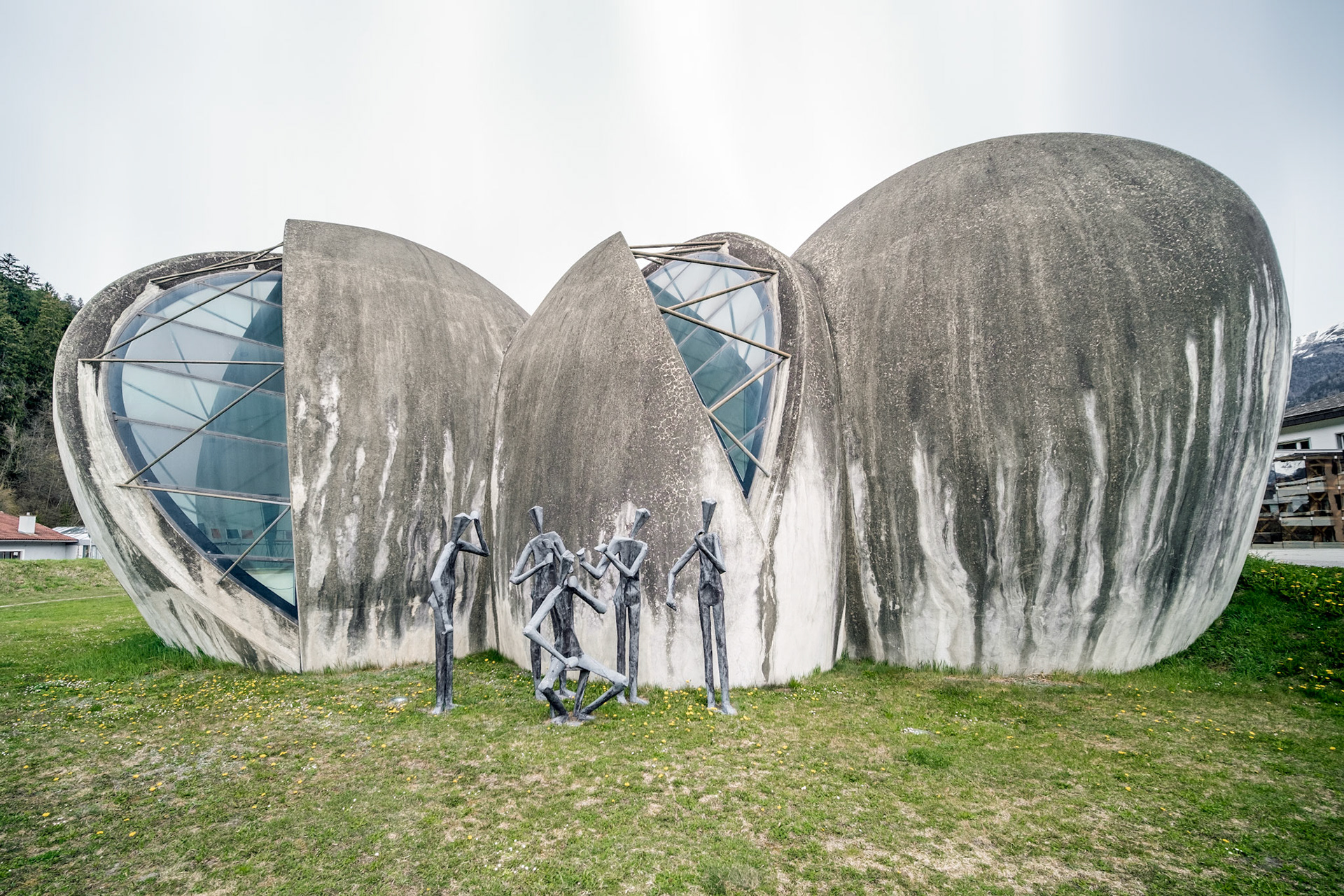
Steinkirche Cazis
Construction started in April 1996: 108 different wooden elements were placed on a foundation like slices of an orange, covered with a fine-meshed metal grid and then coated with shotcrete until a thickness of 15cm. In January 1998 the church was put into operation with a provisional heating system. Architect Diederik Peper from Chur completed the interior finish of the rock church and it was officially inaugurated in January 2002.
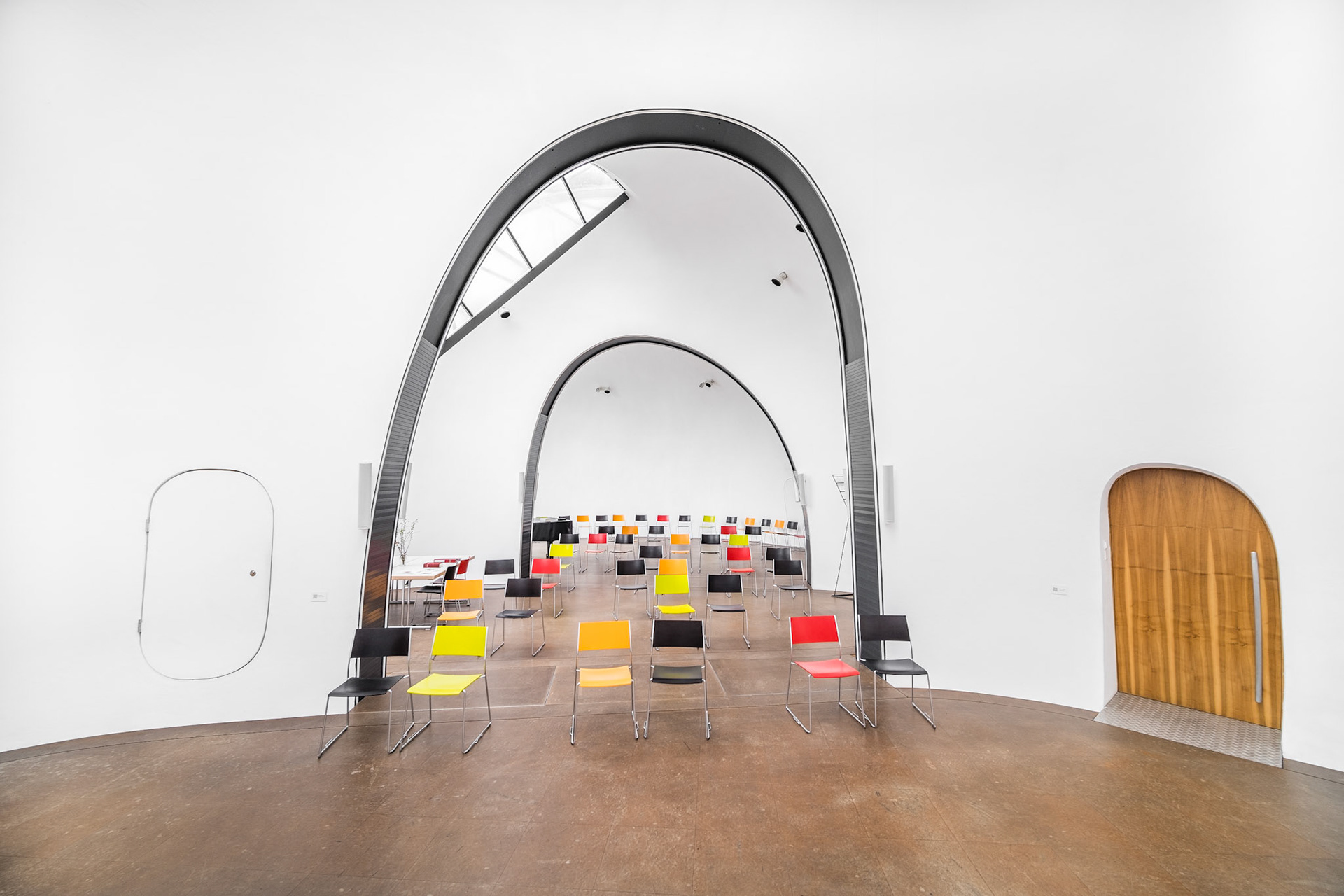
Steinkirche Cazis
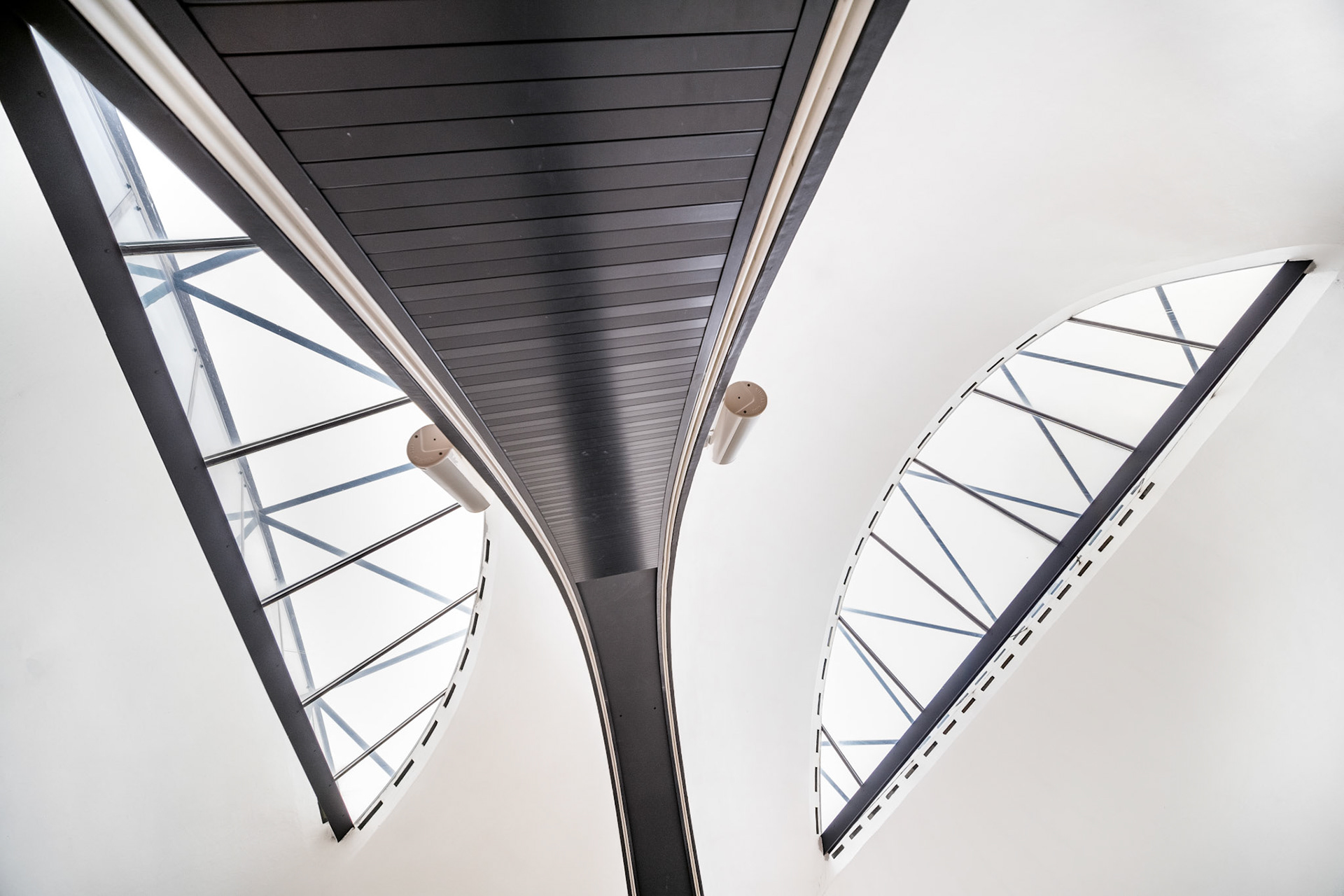
Steinkirche Cazis
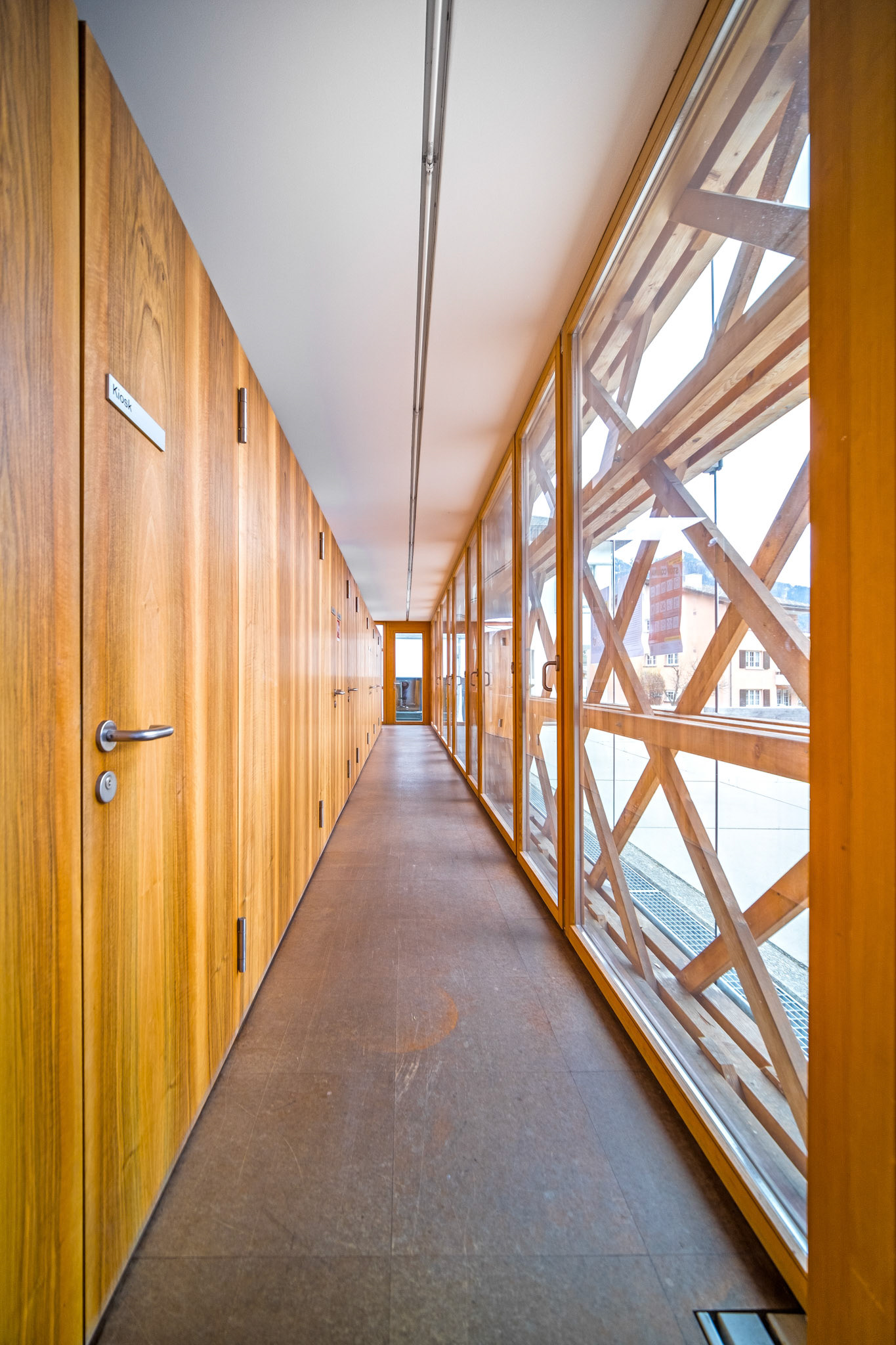
Steinkirche Cazis
Atelier Bardill, Scharans
Designed by Valerio Olgiati and completed in 2007, Atelier Bardill replaces an old barn which exterior dimensions it had to follow exactly in order to obtain the building permit.
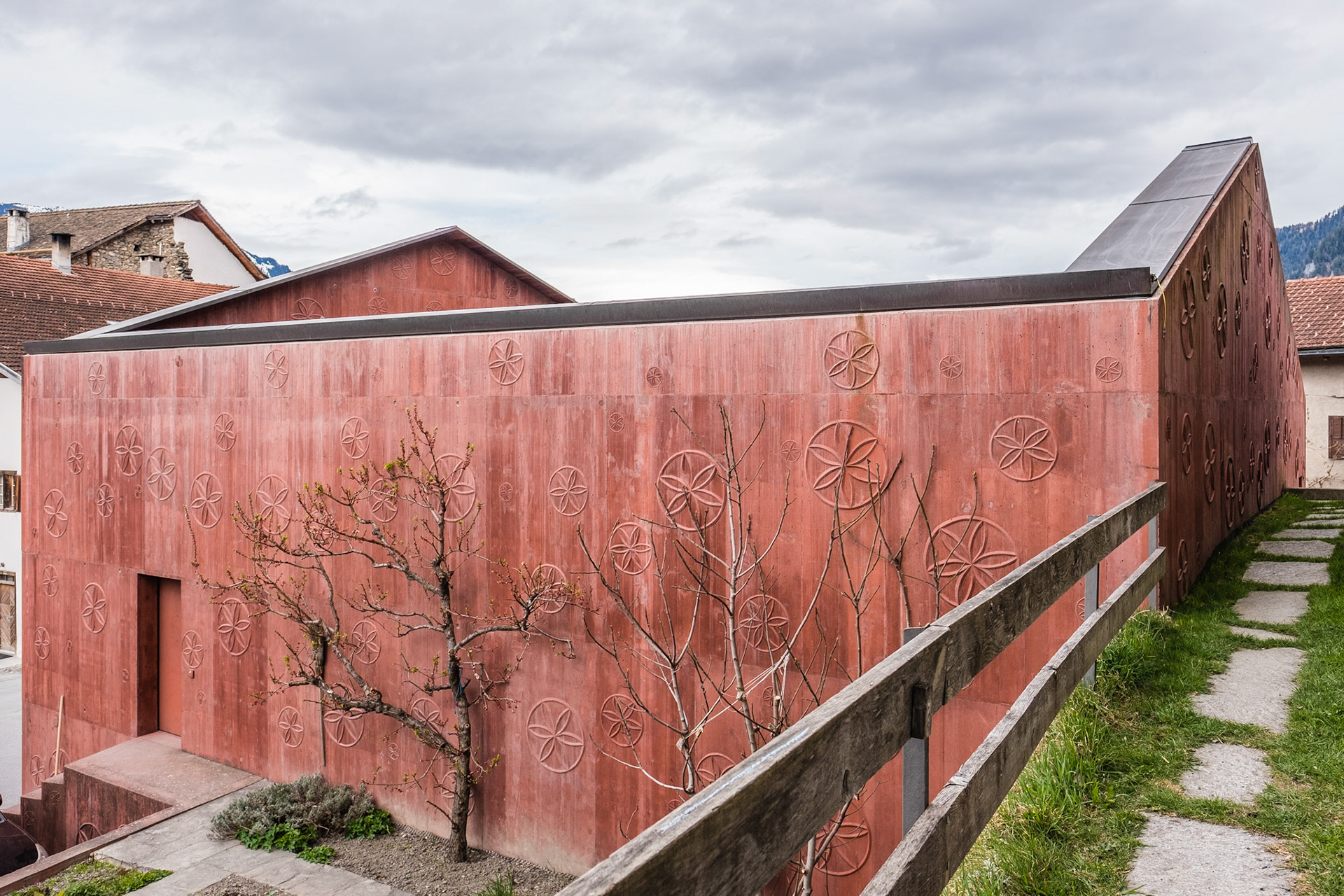
Atelier Bardill, Scharans
The atelier contains a working space and an atrium with a round, 14m wide, opening to the sky. The exterior concrete walls have no windows and at first glance there is no roof !
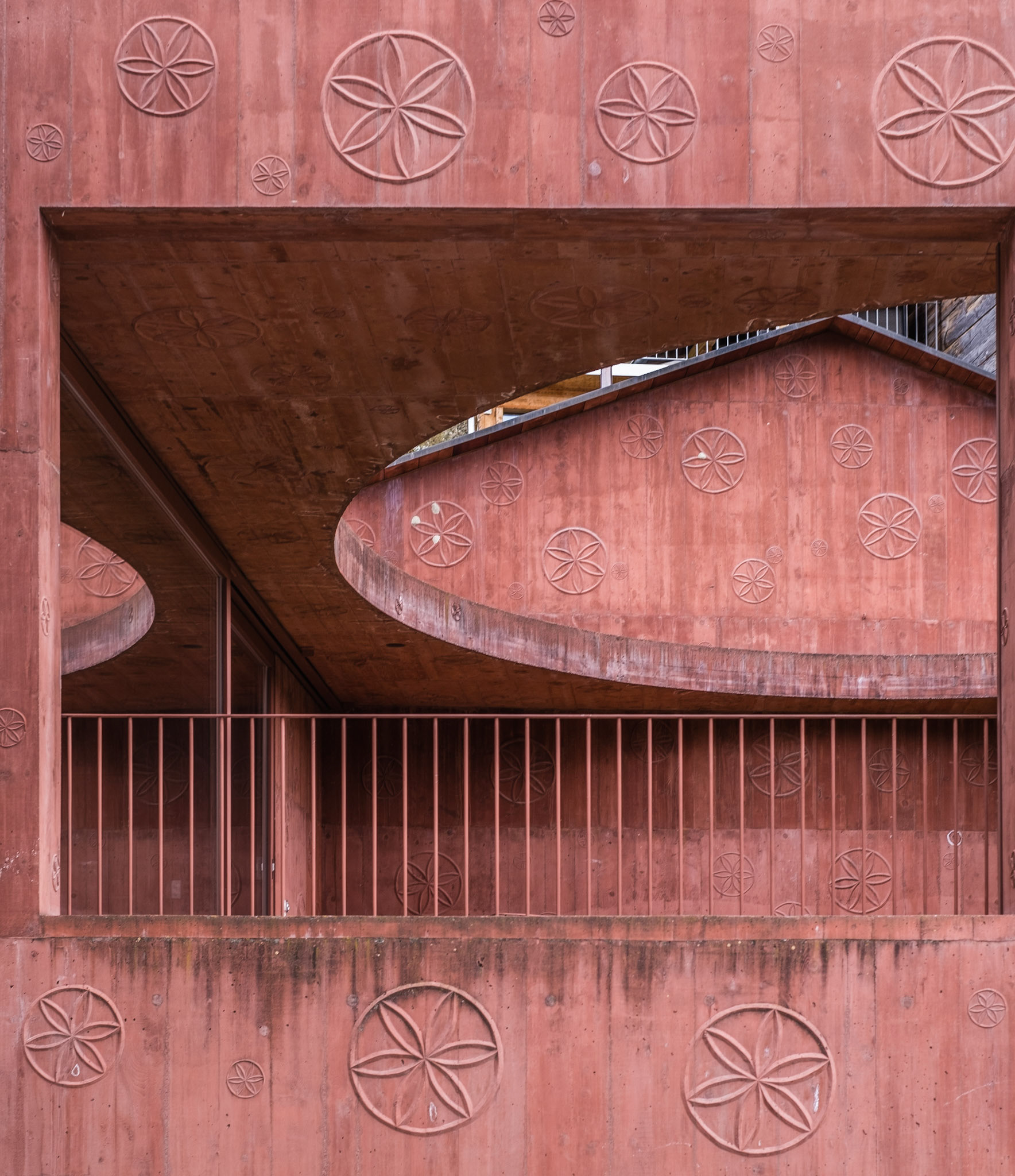
Atelier Bardill, Scharans
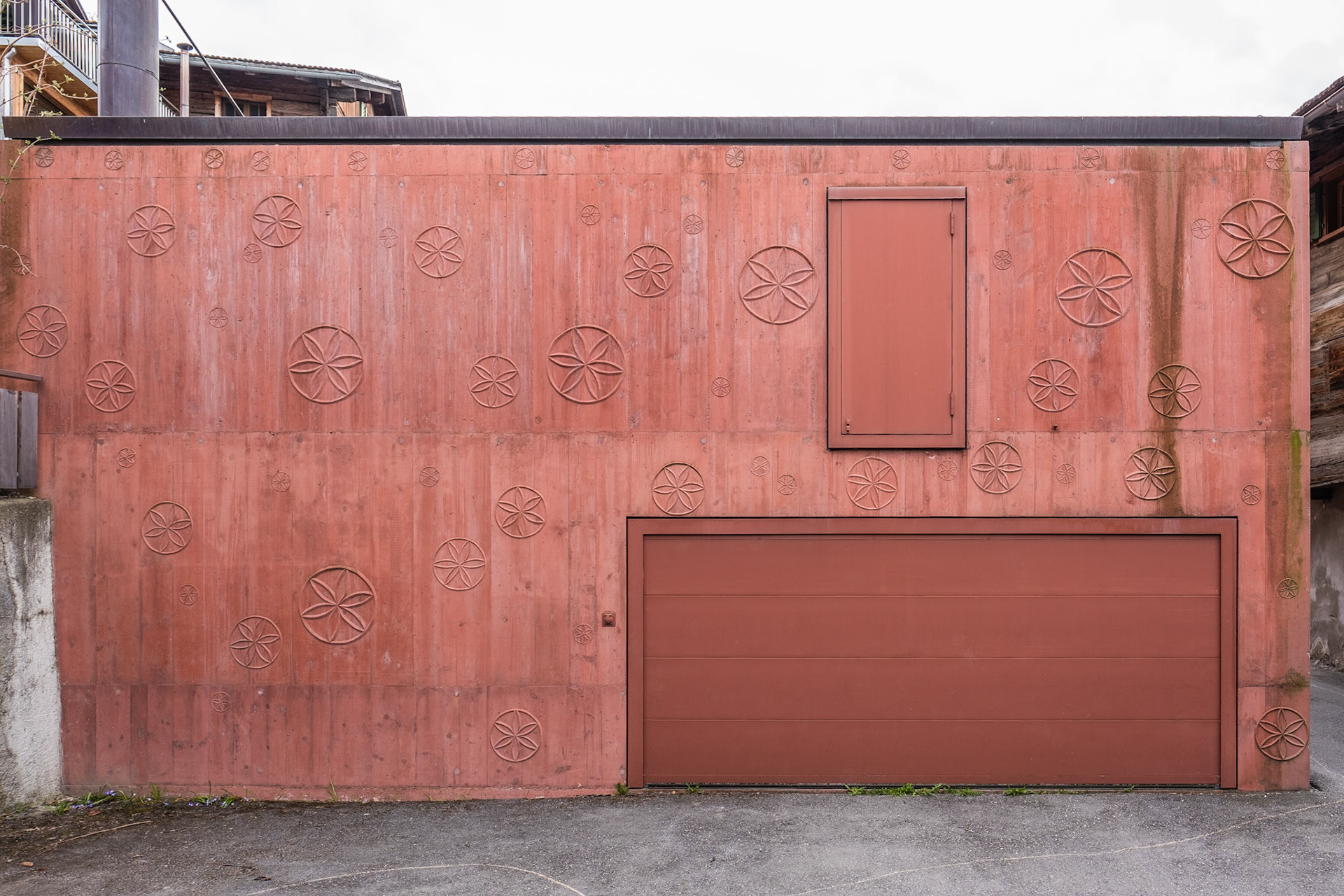
Atelier Bardill, Scharans
Julierturm
The Origen Tower was designed by Giovanni Netzer and stands since 2017 at the top of the Julierpass at 2200m above sea level.
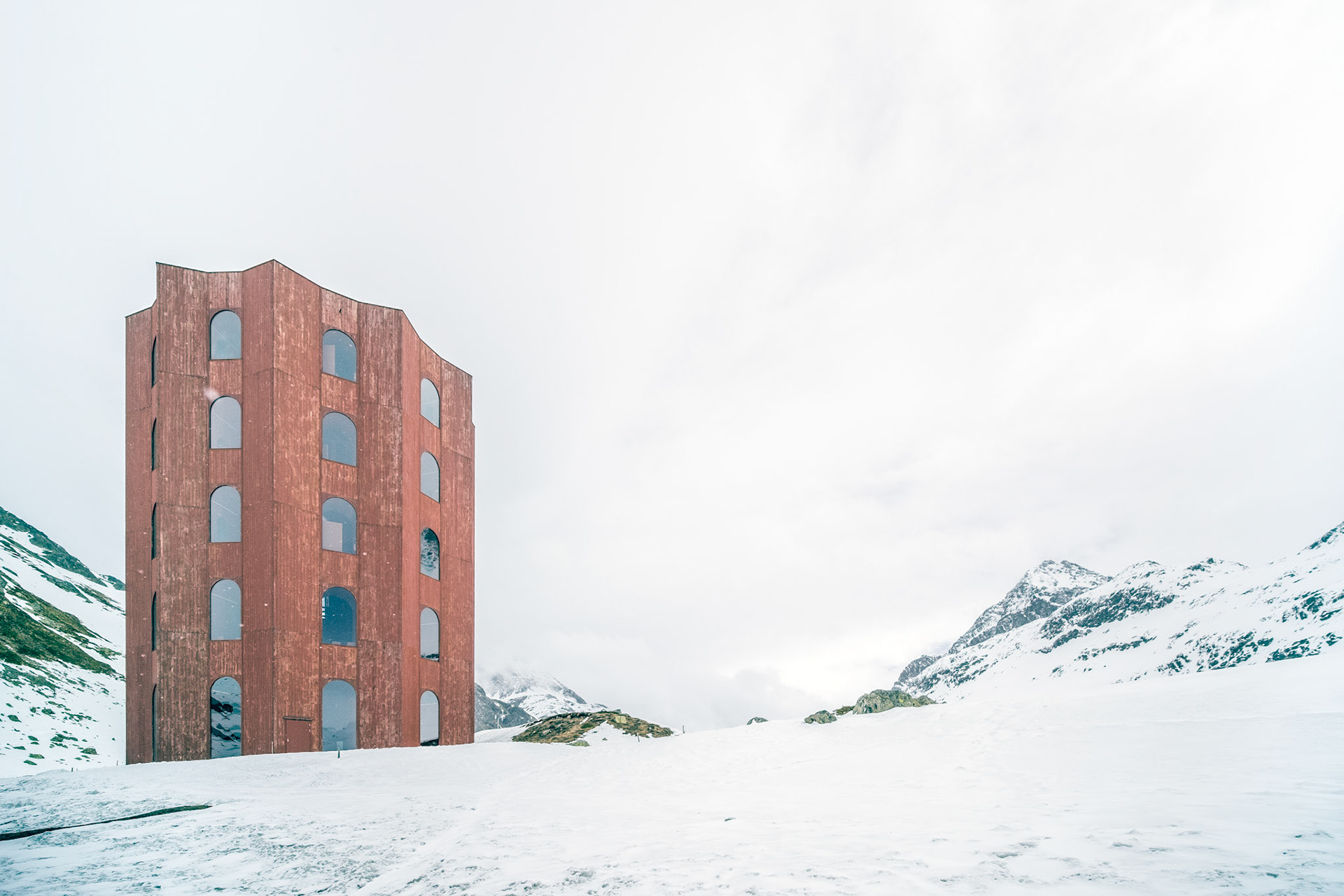
Julierturm
The ephemeral theatre and concert venue was originally supposed to be removed in 2020 but its construction permit has been extended until 2023. The stage can be height adjusted inside the tower and its many windows allow the spectators to contemplate the vast landscape outside at the same time as the show !
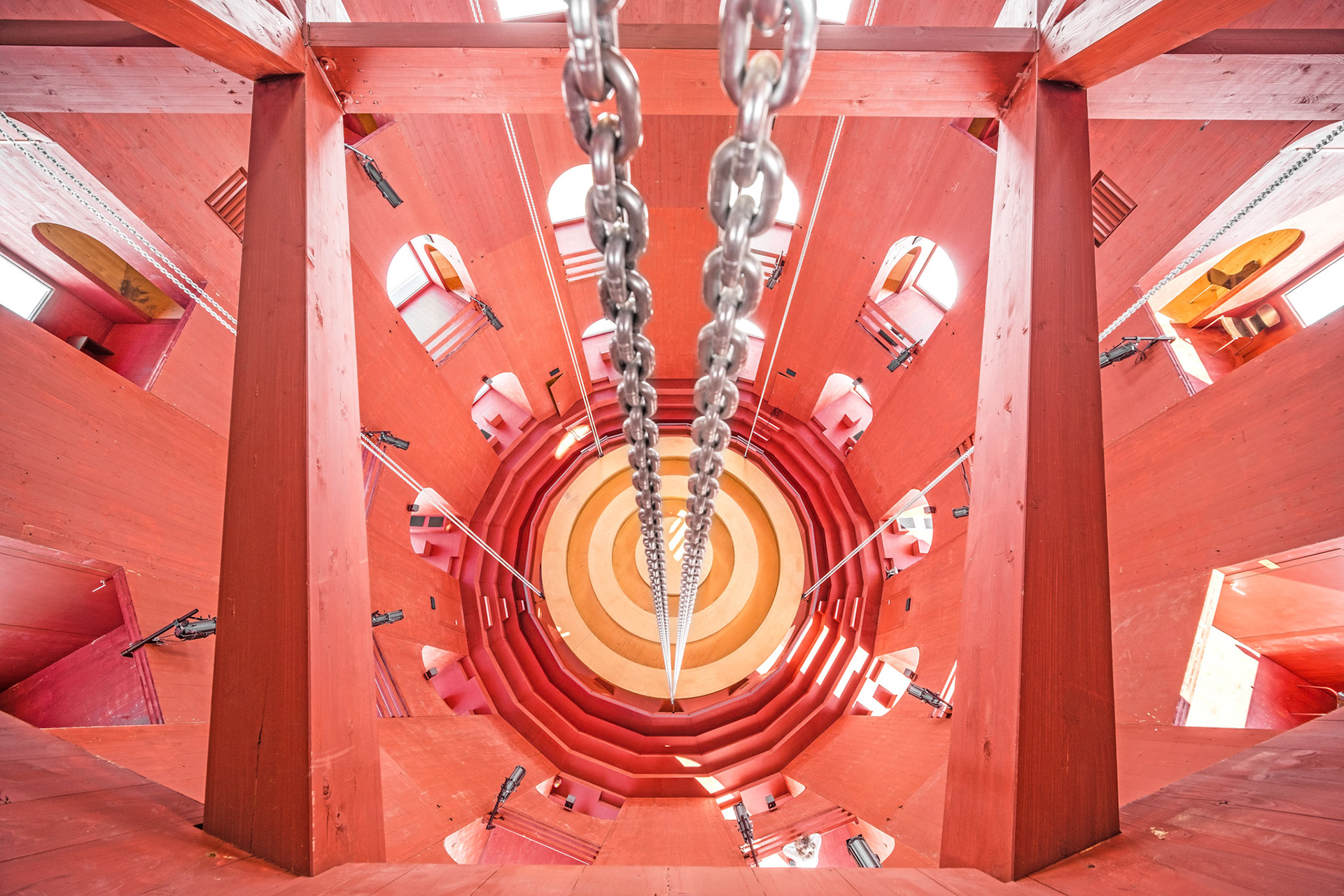
Julierturm
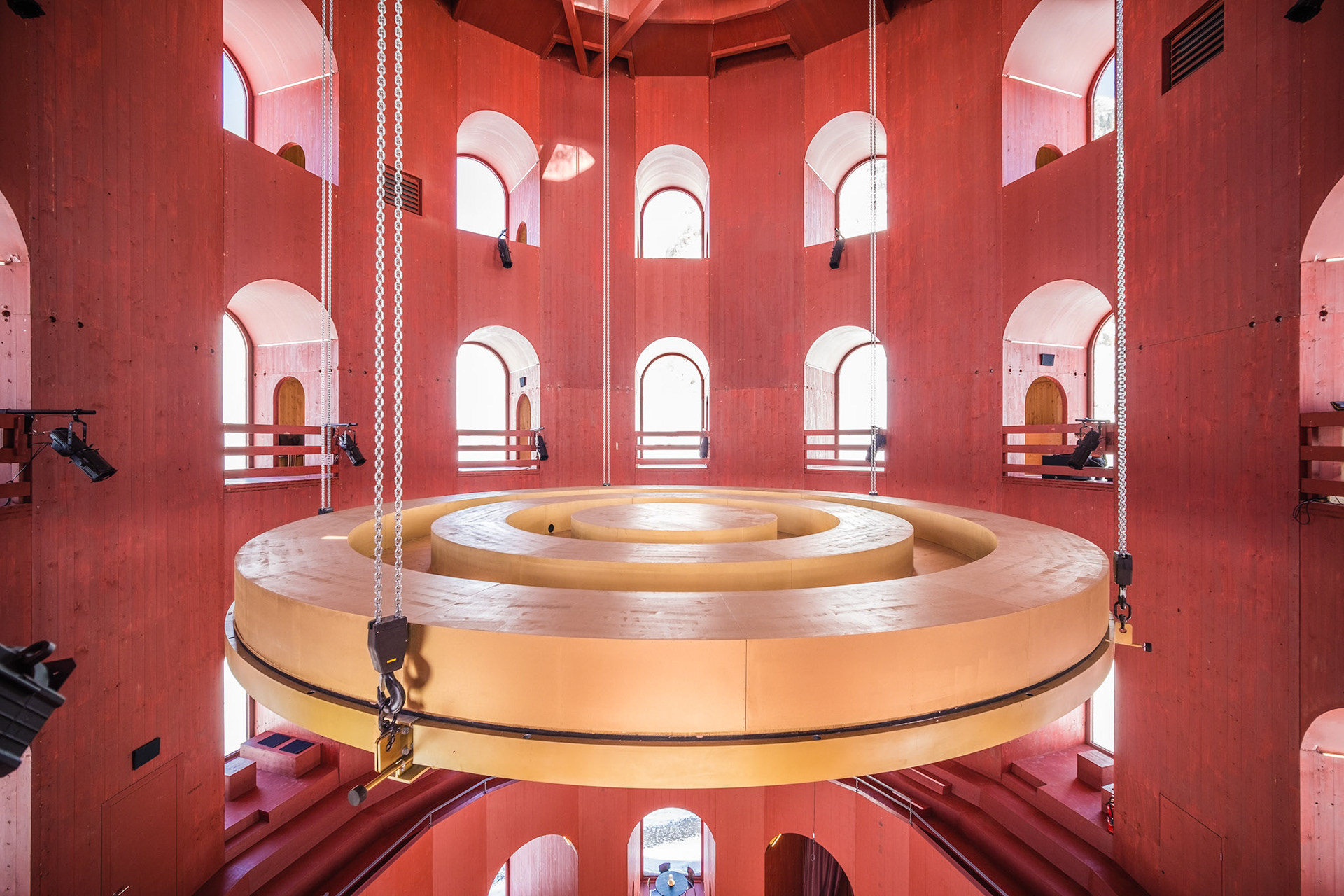
Julierturm

Julierturm
We continued from here to St. Moritz and then to Val Bregaglia ... but that's the subject of a subsequent article. Stay tuned!
